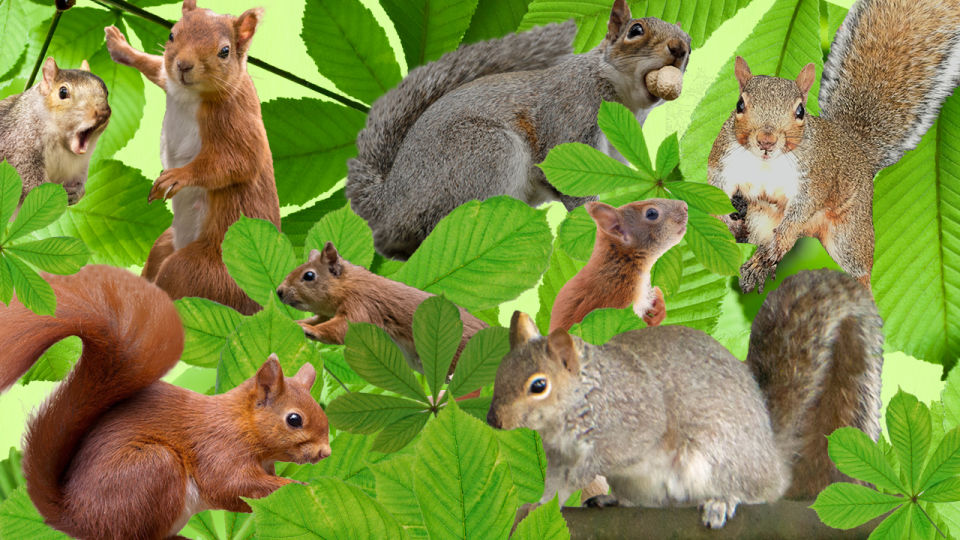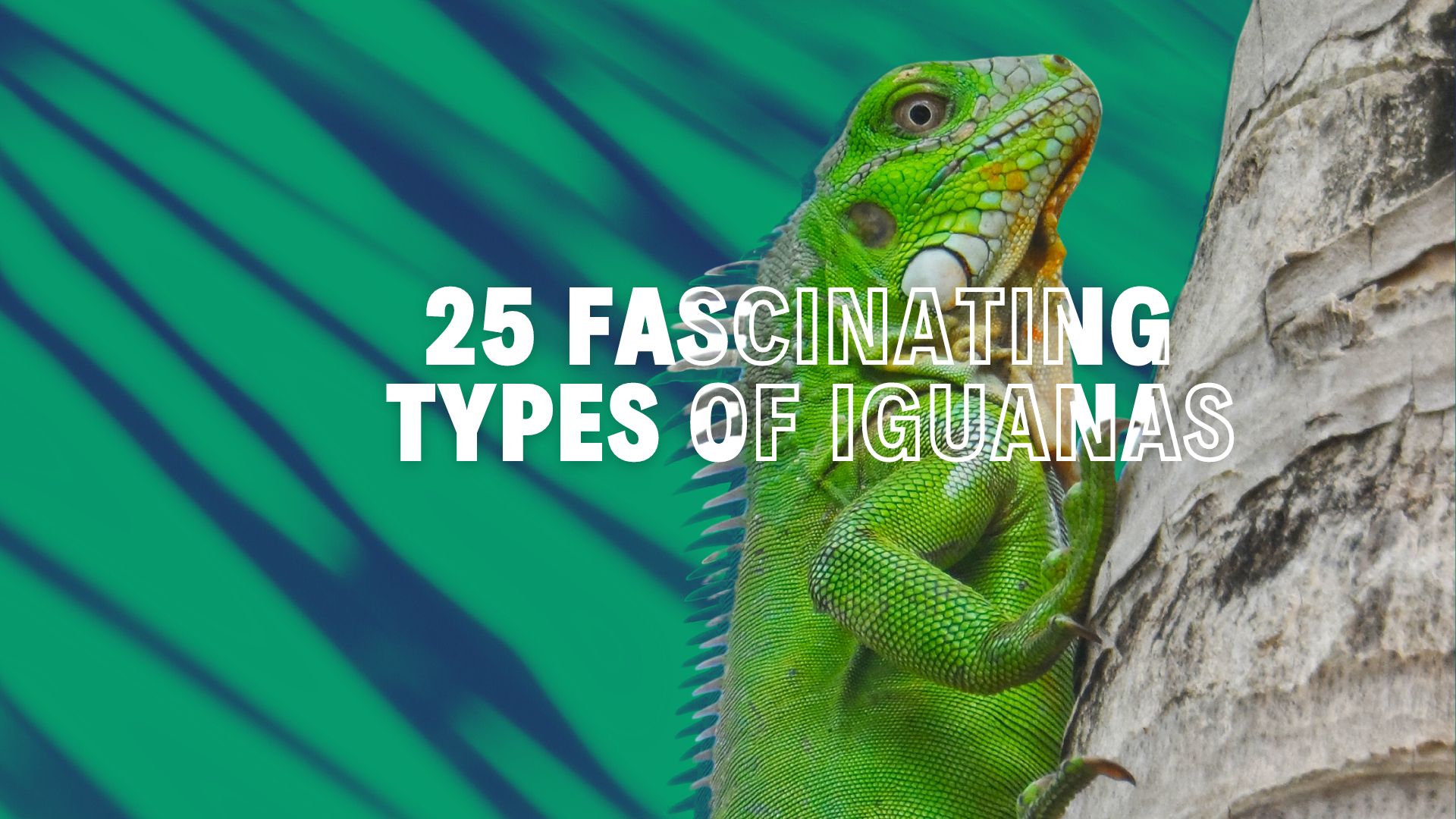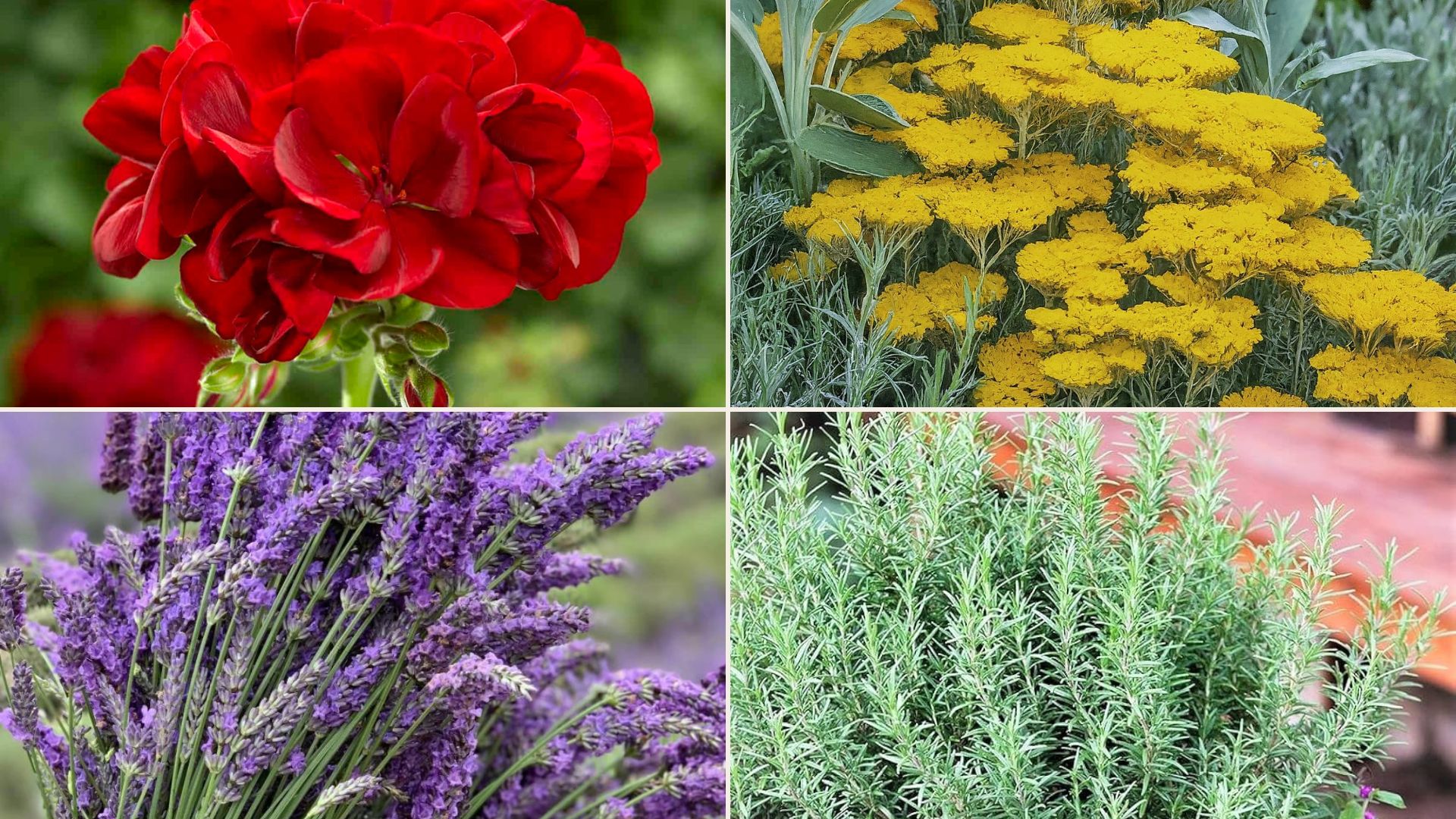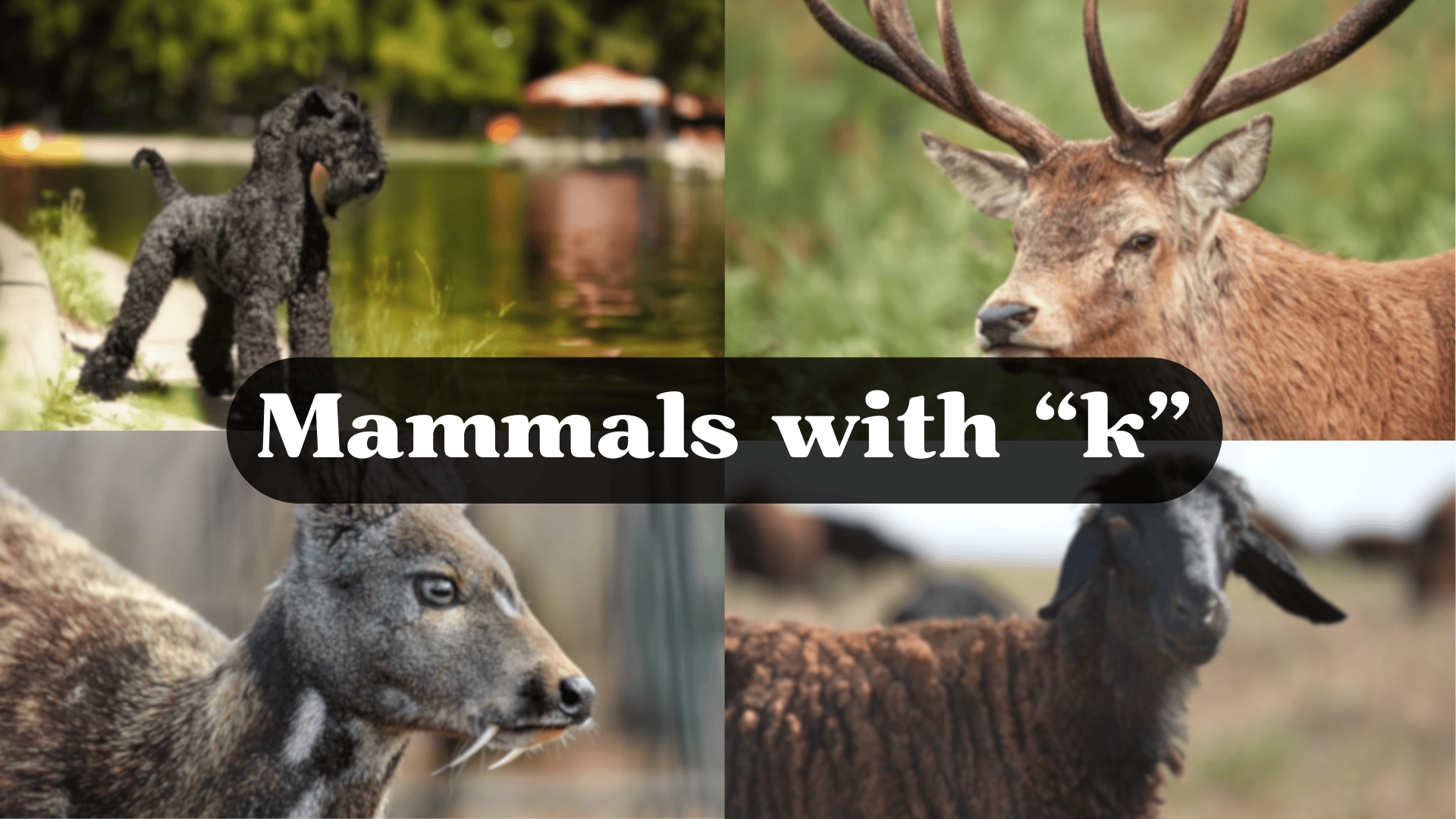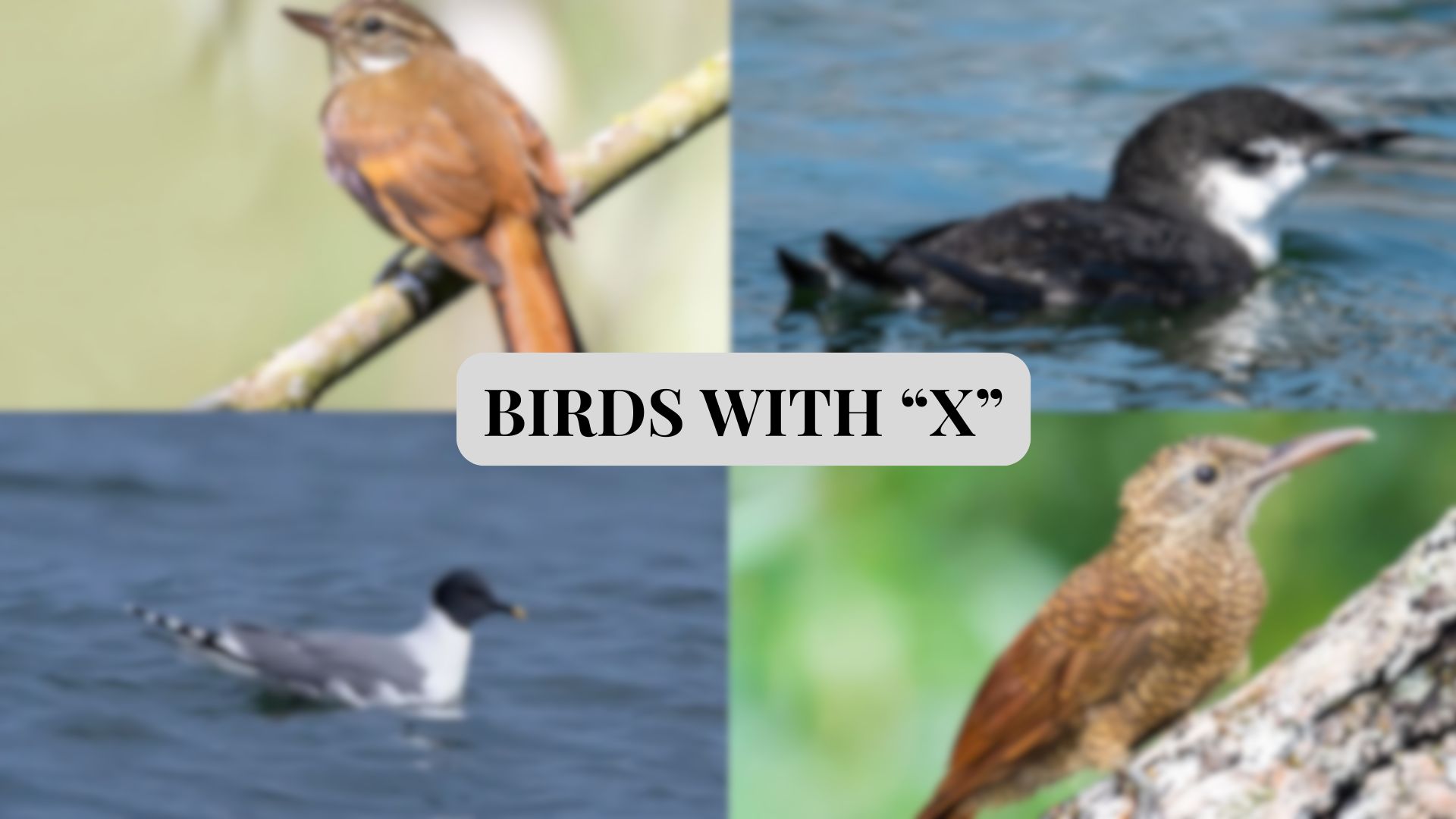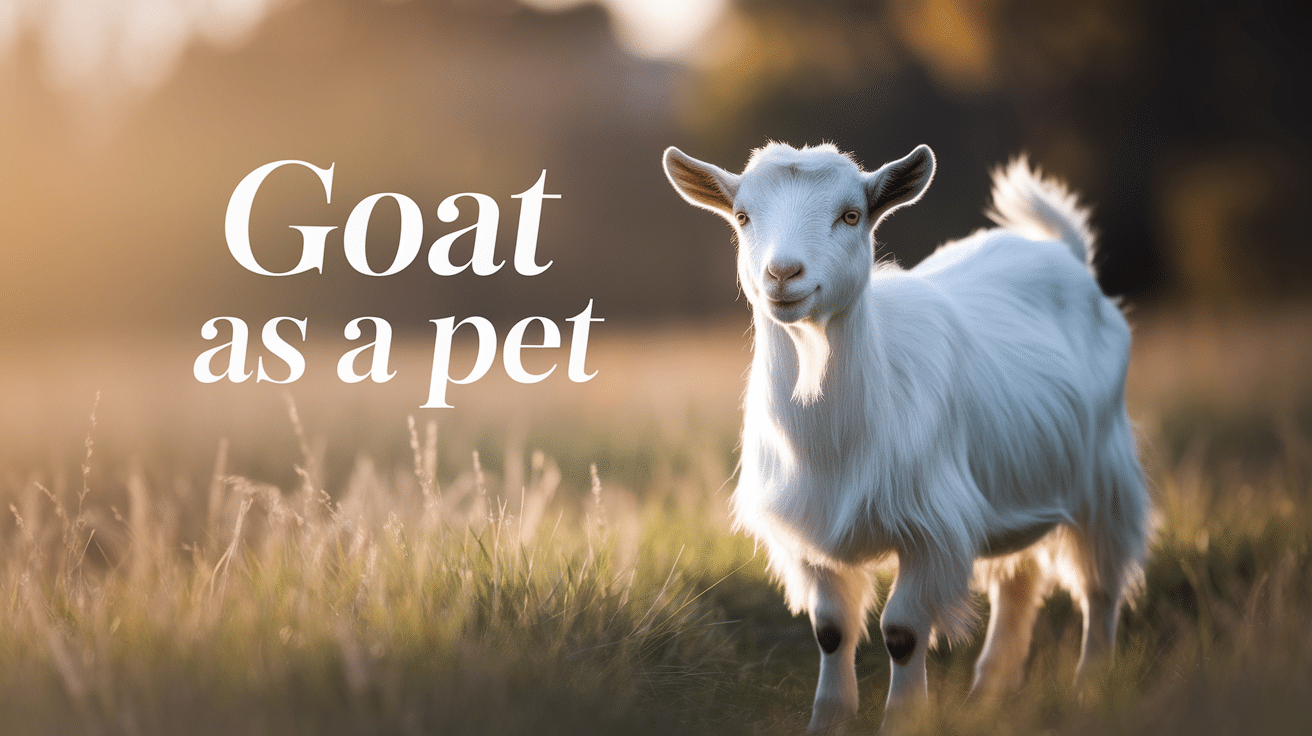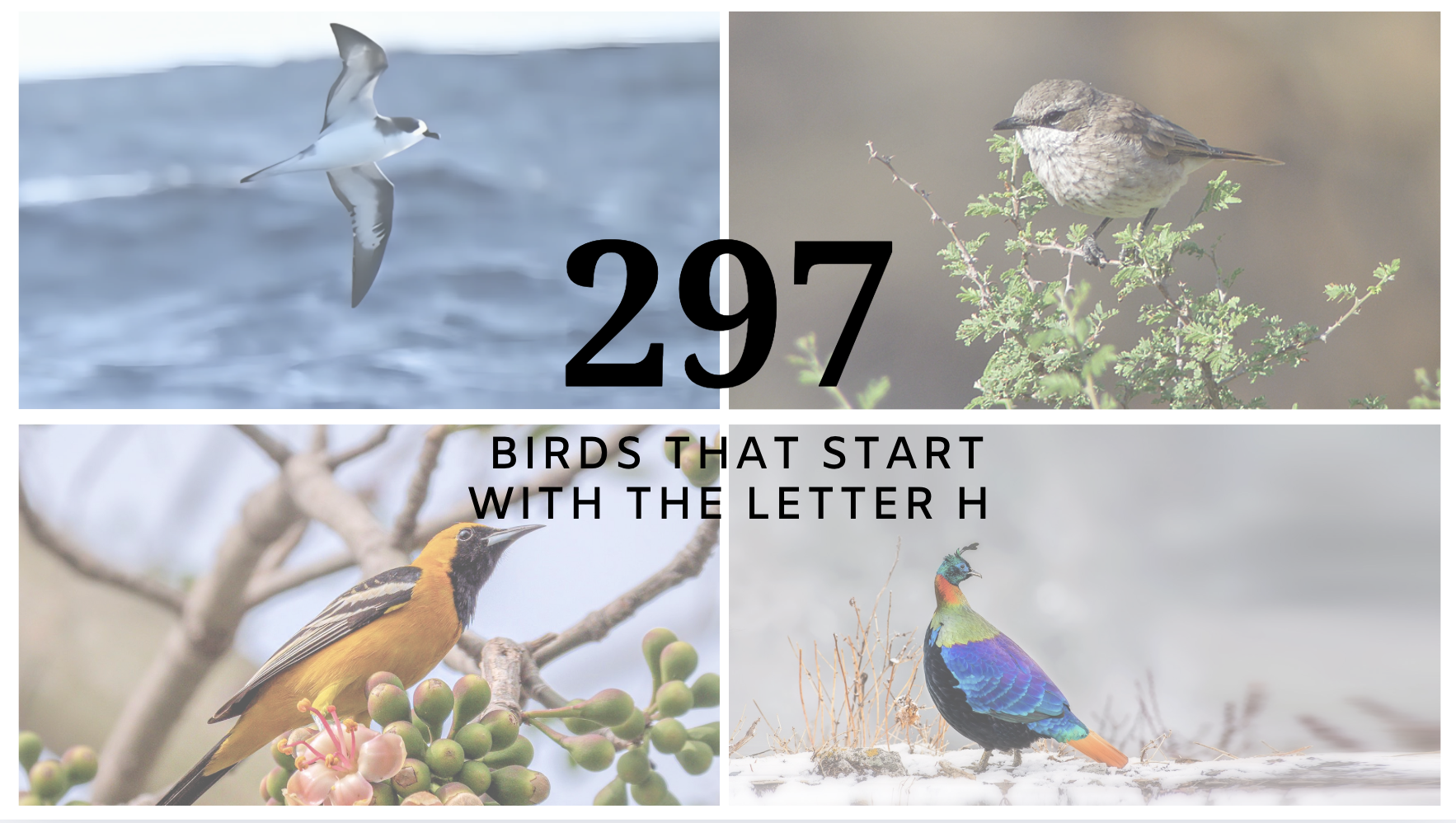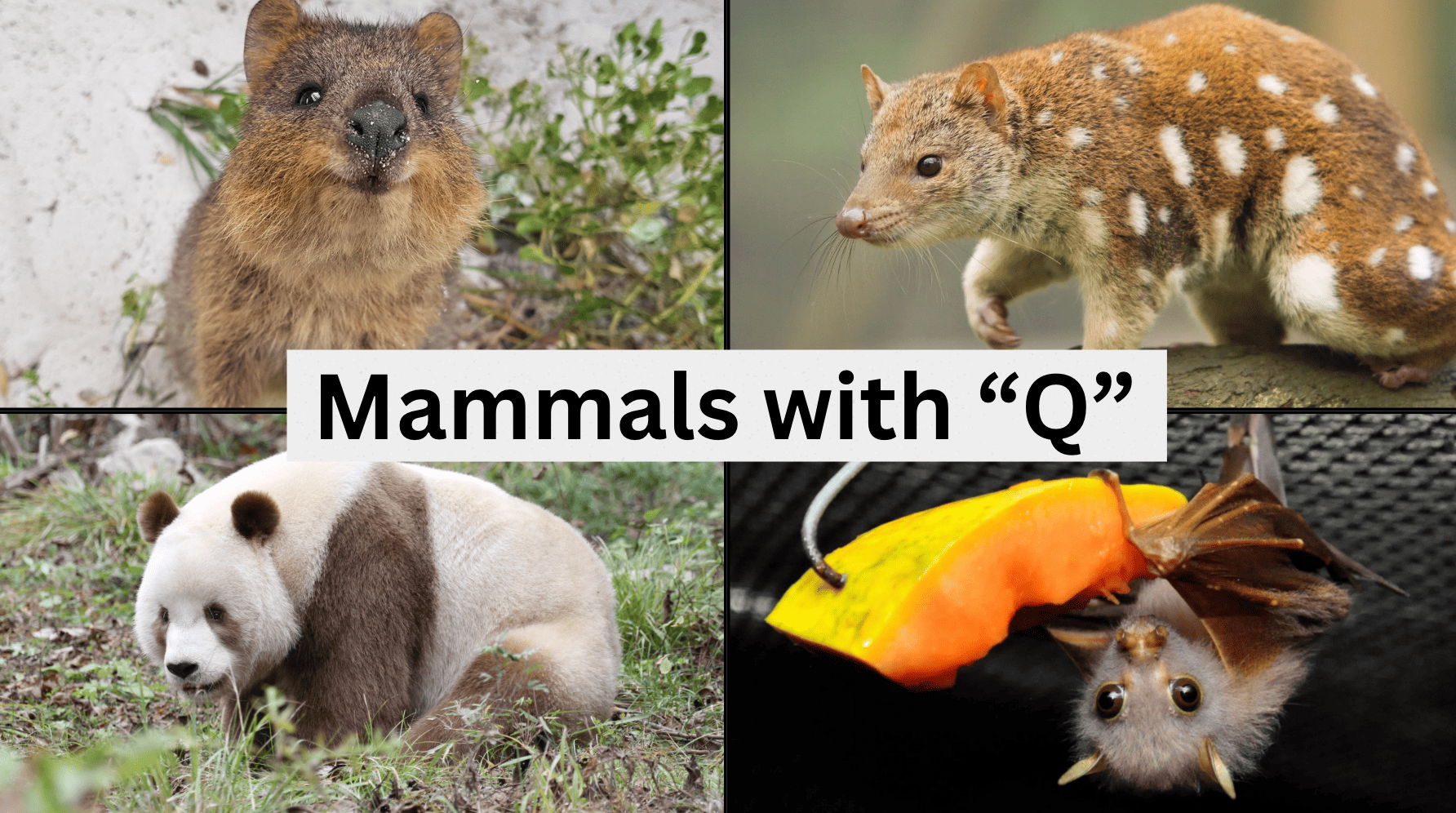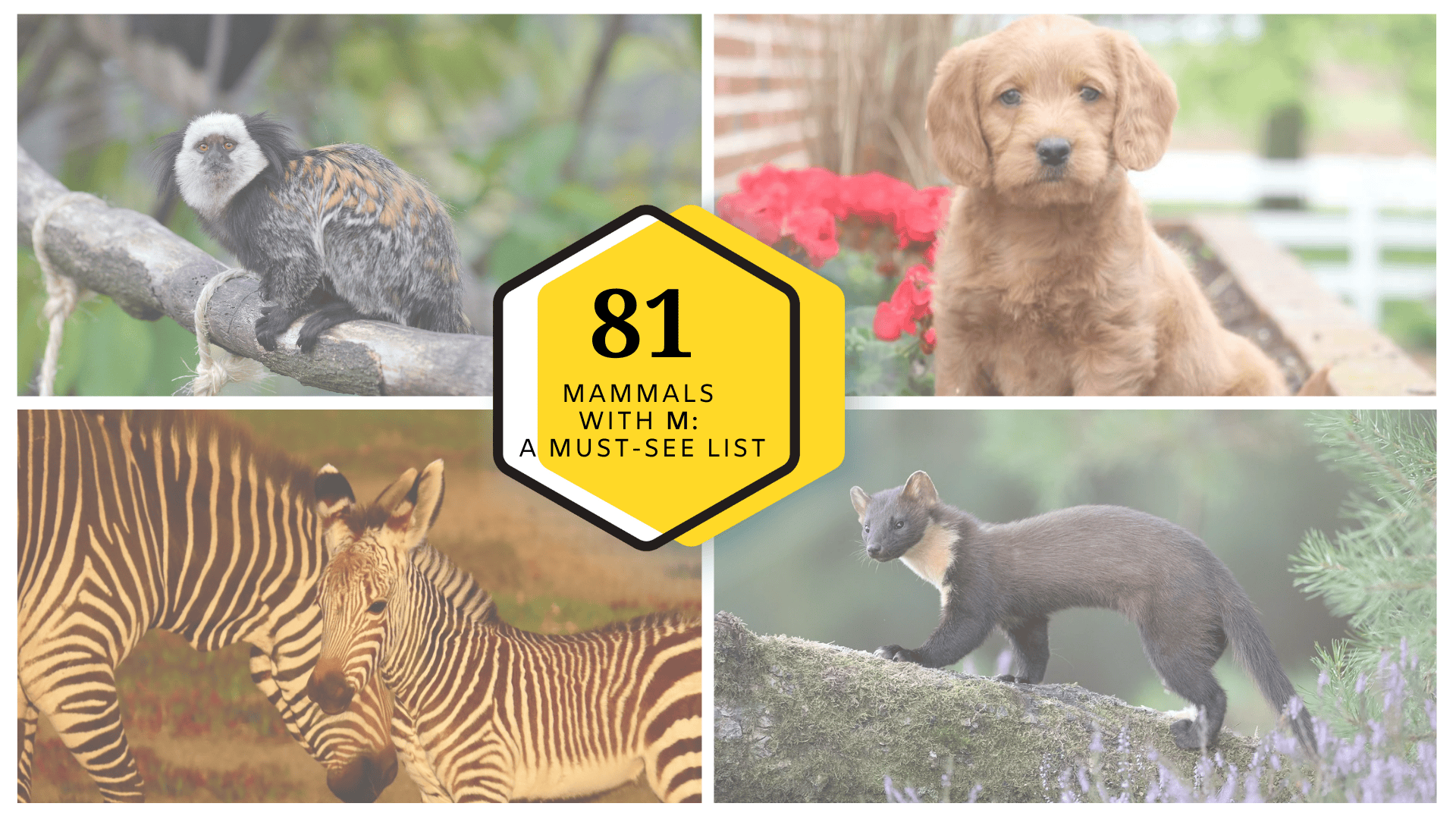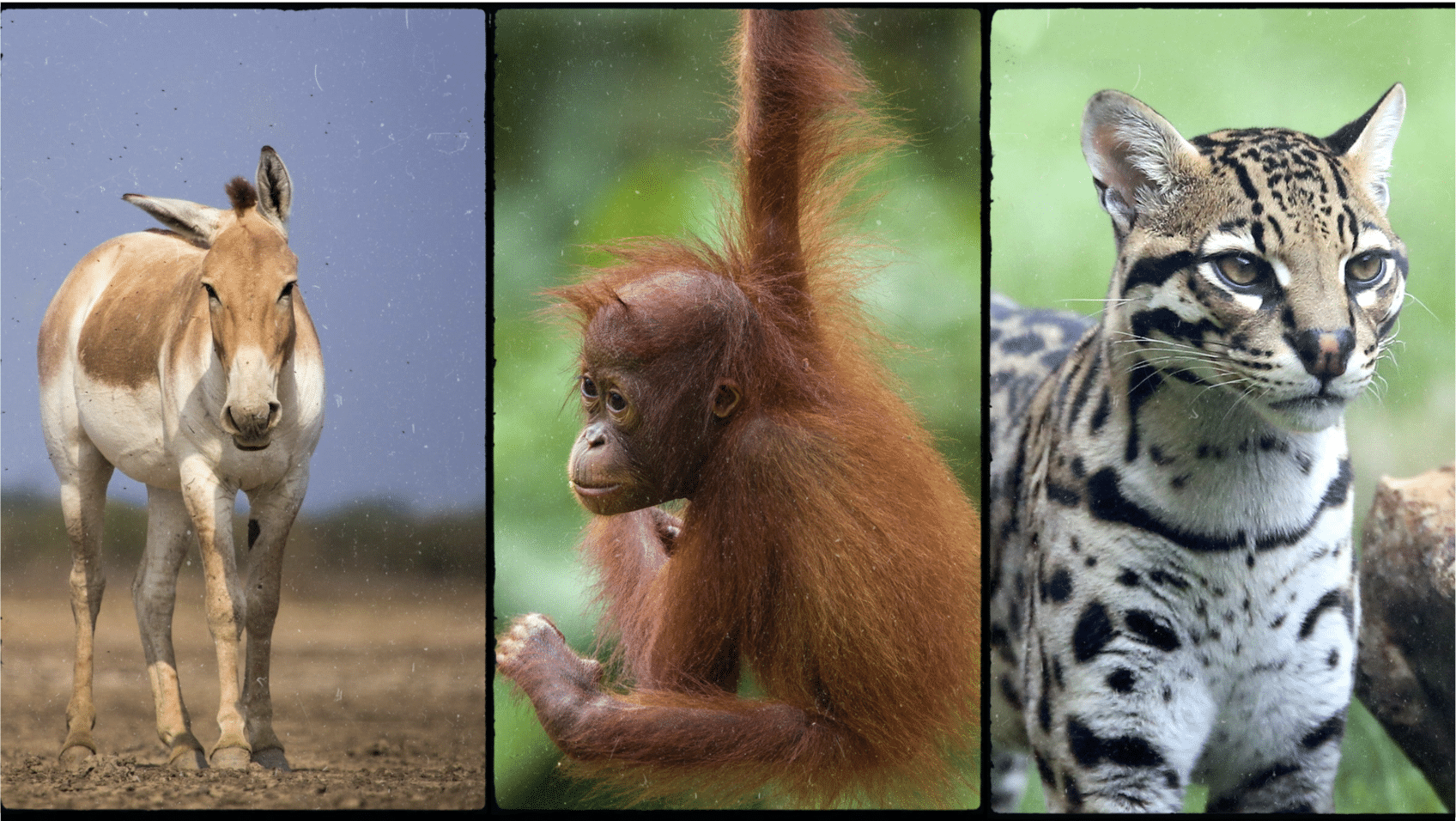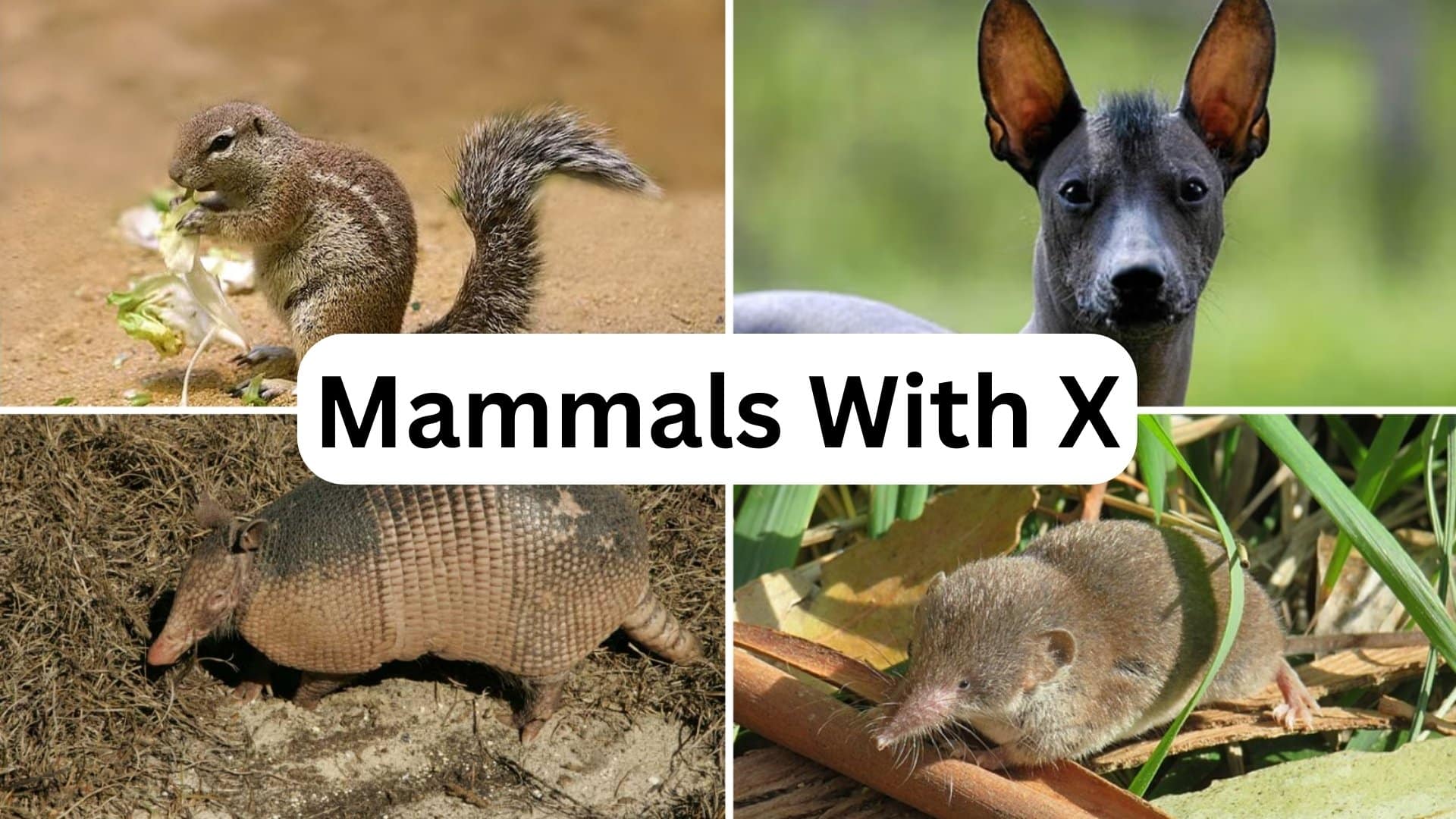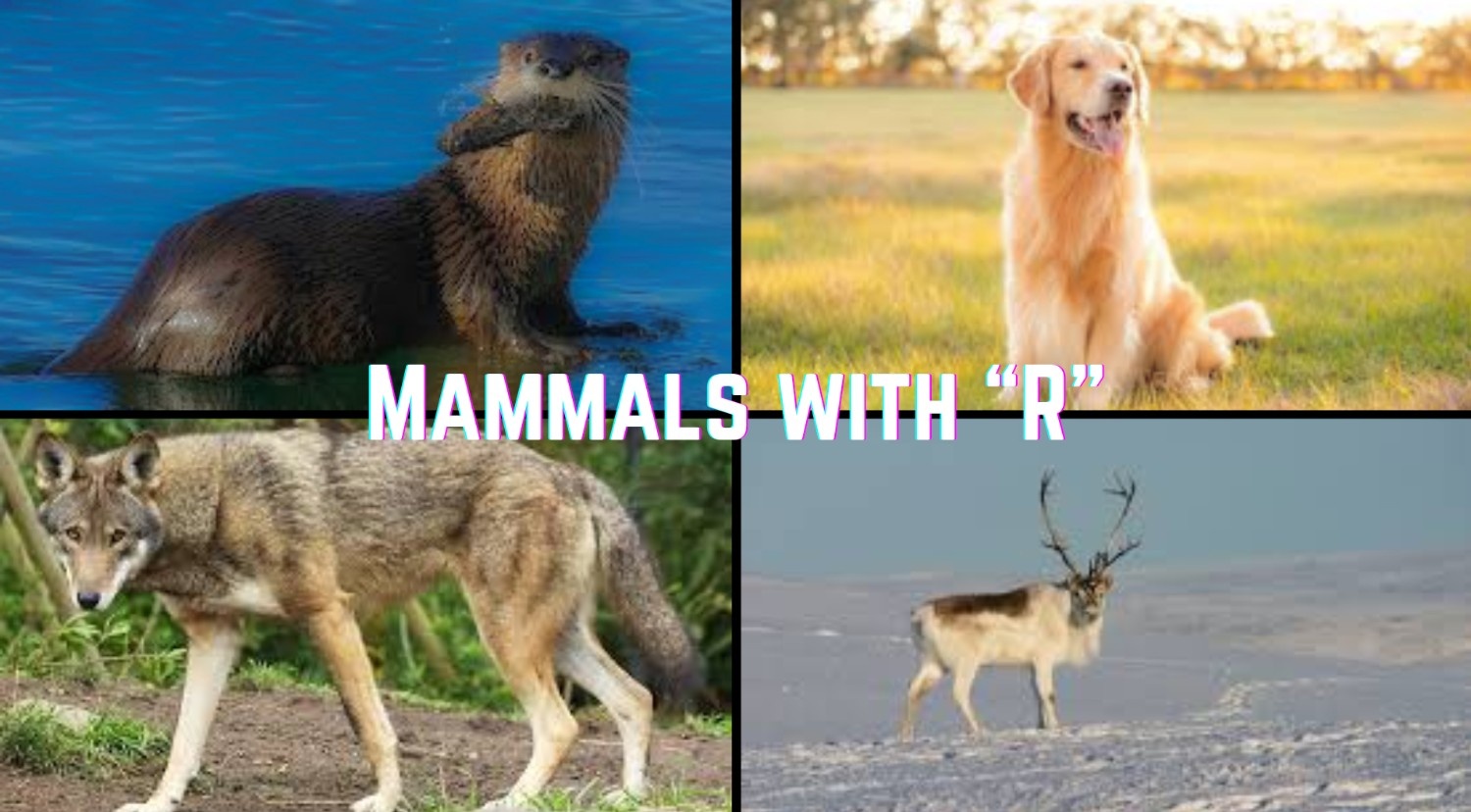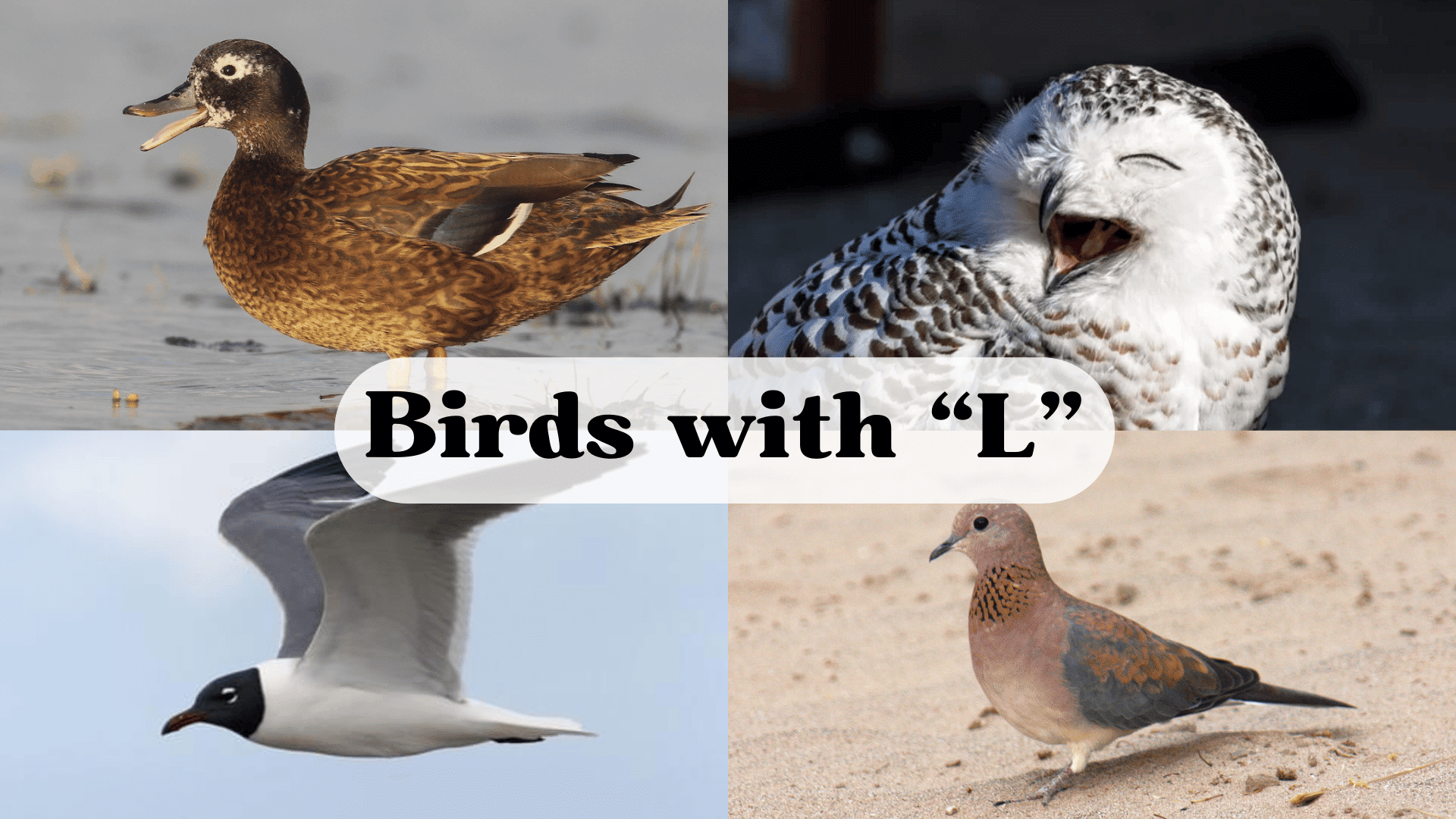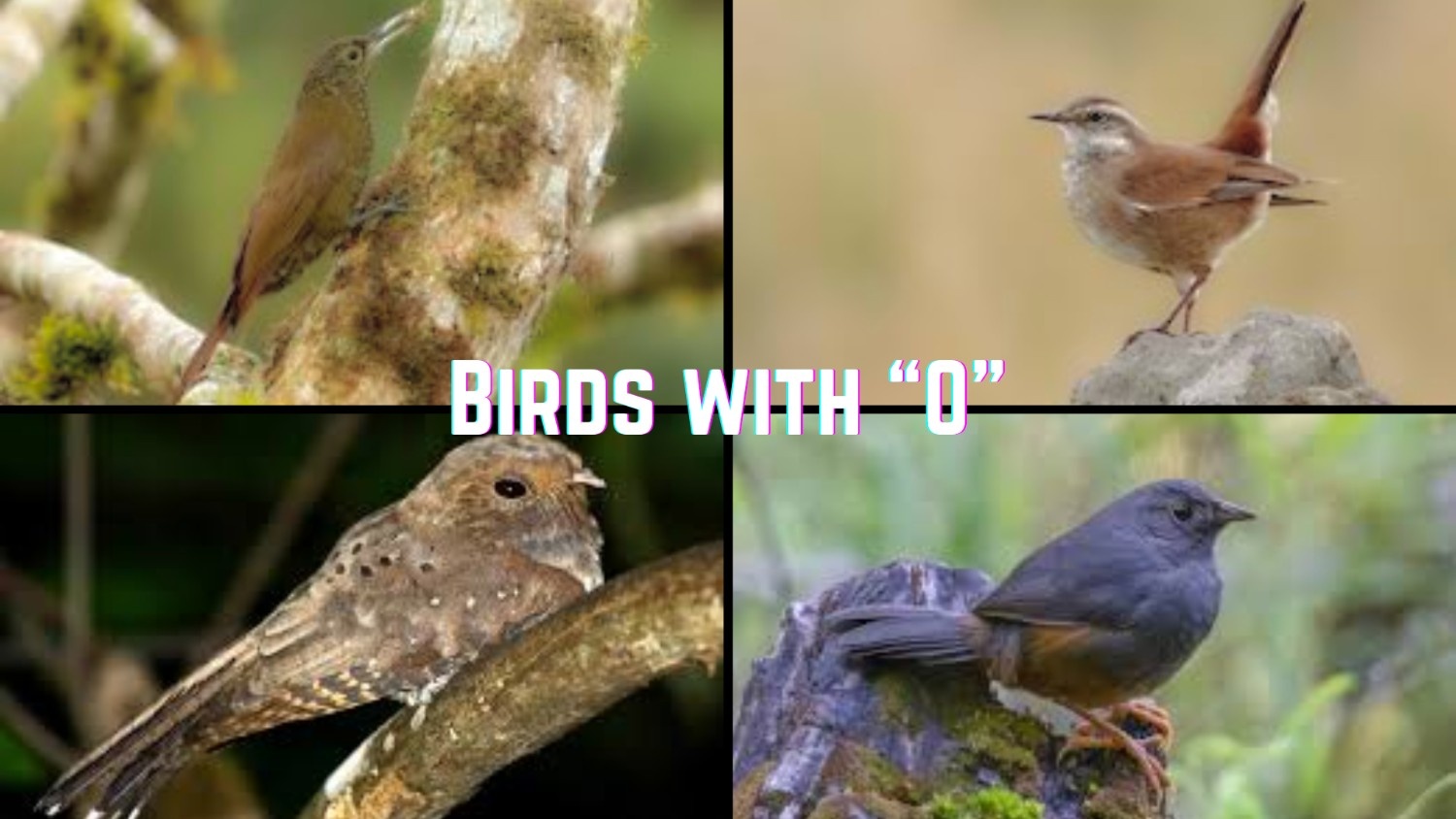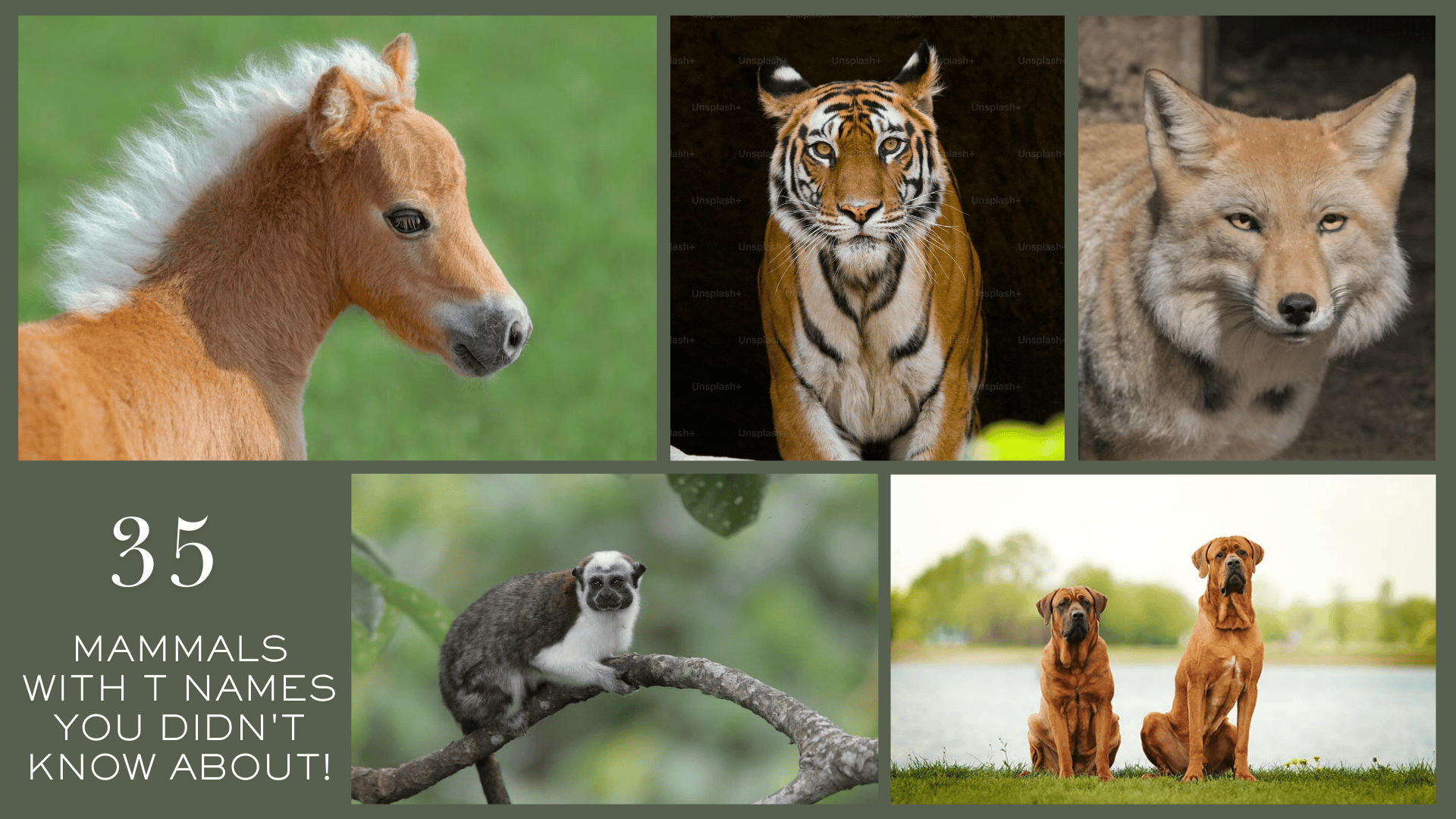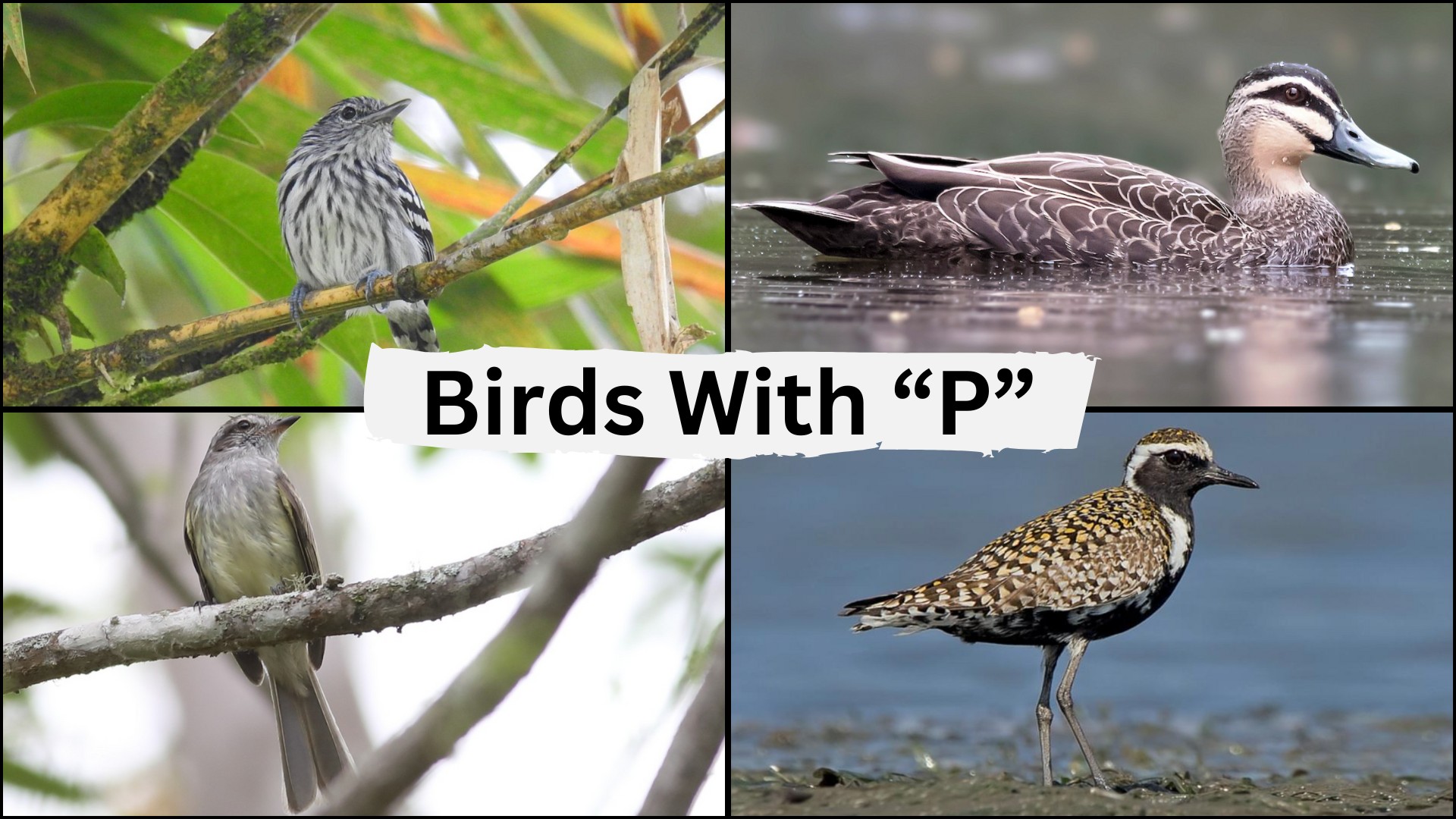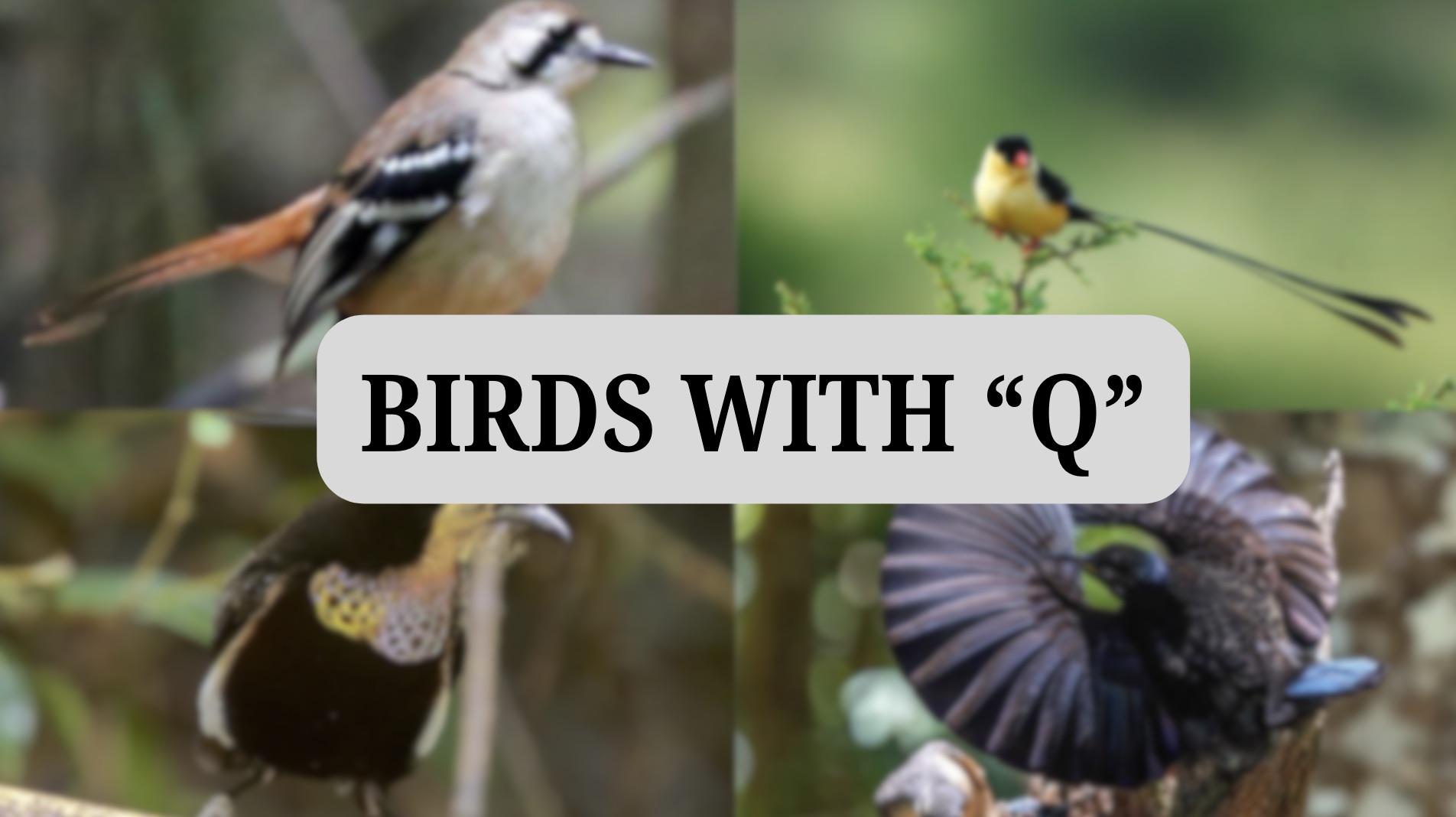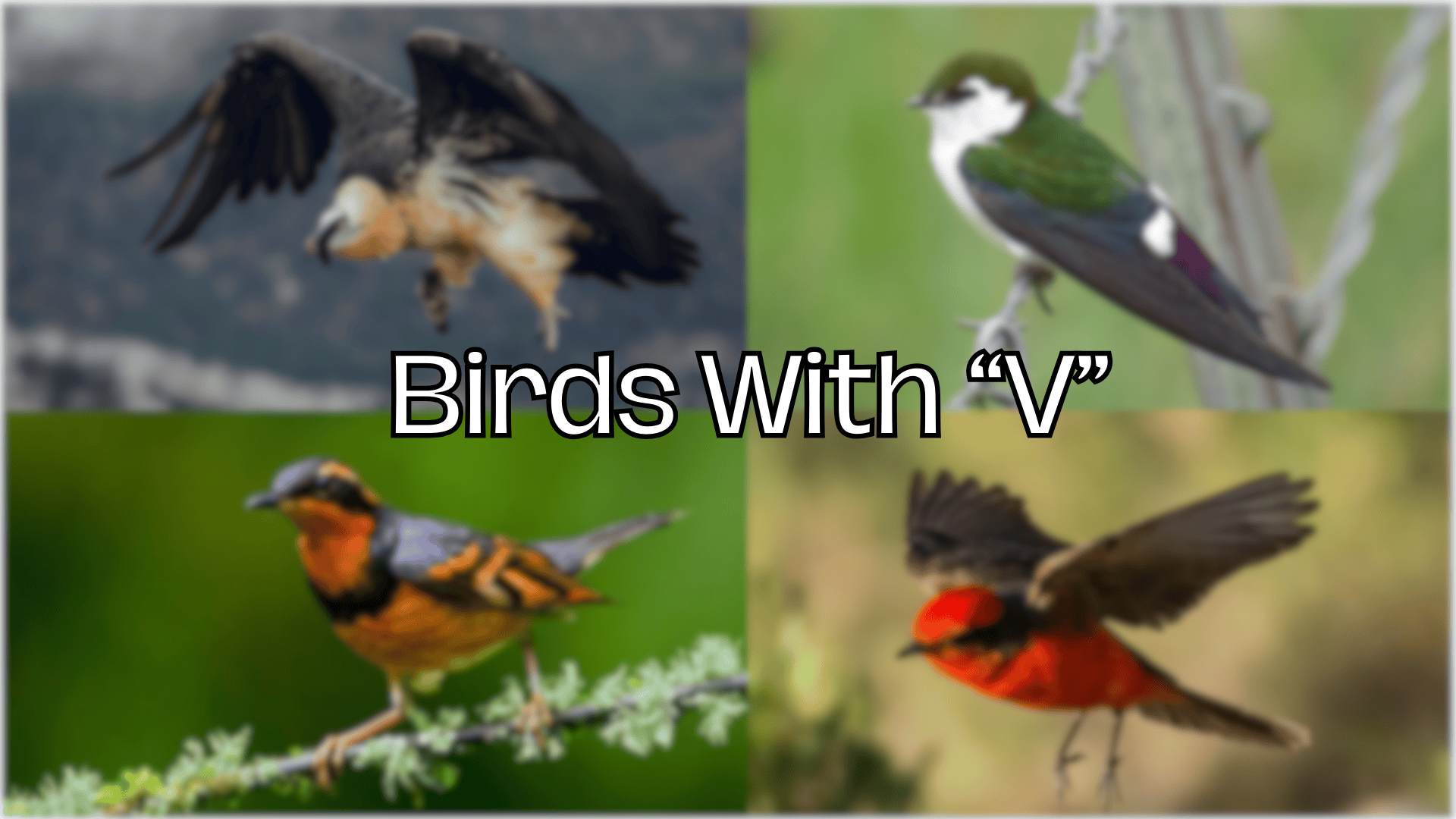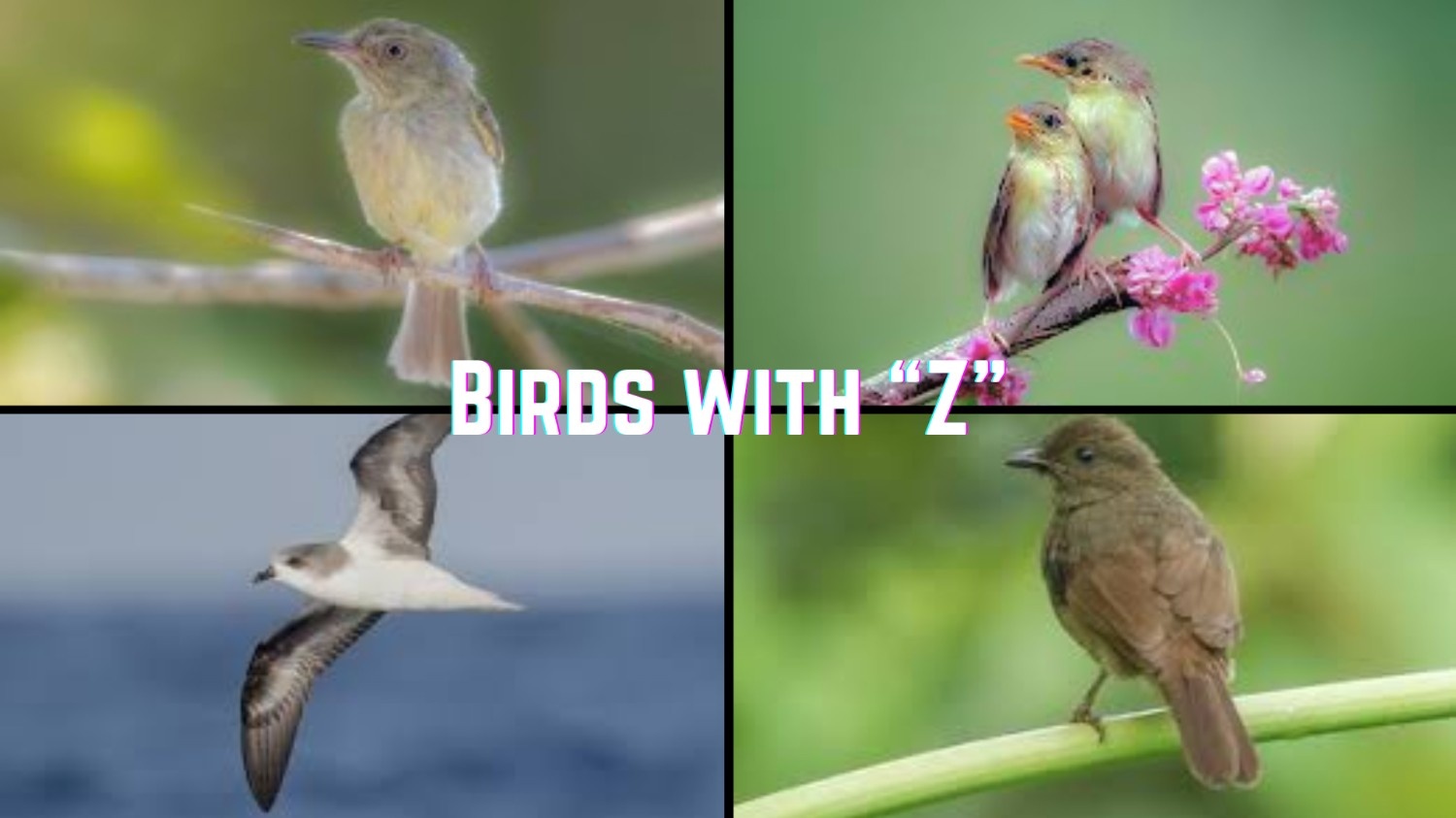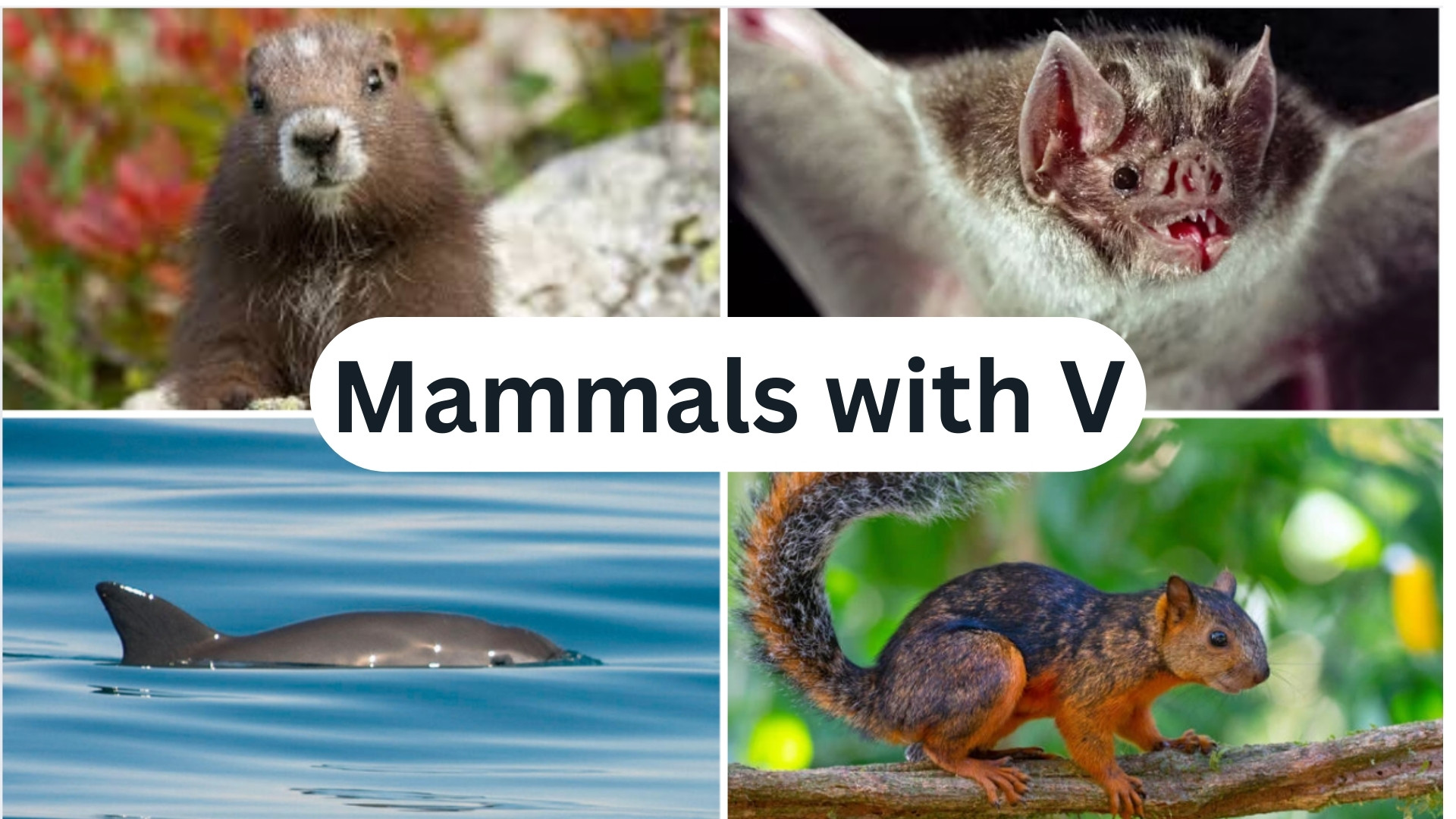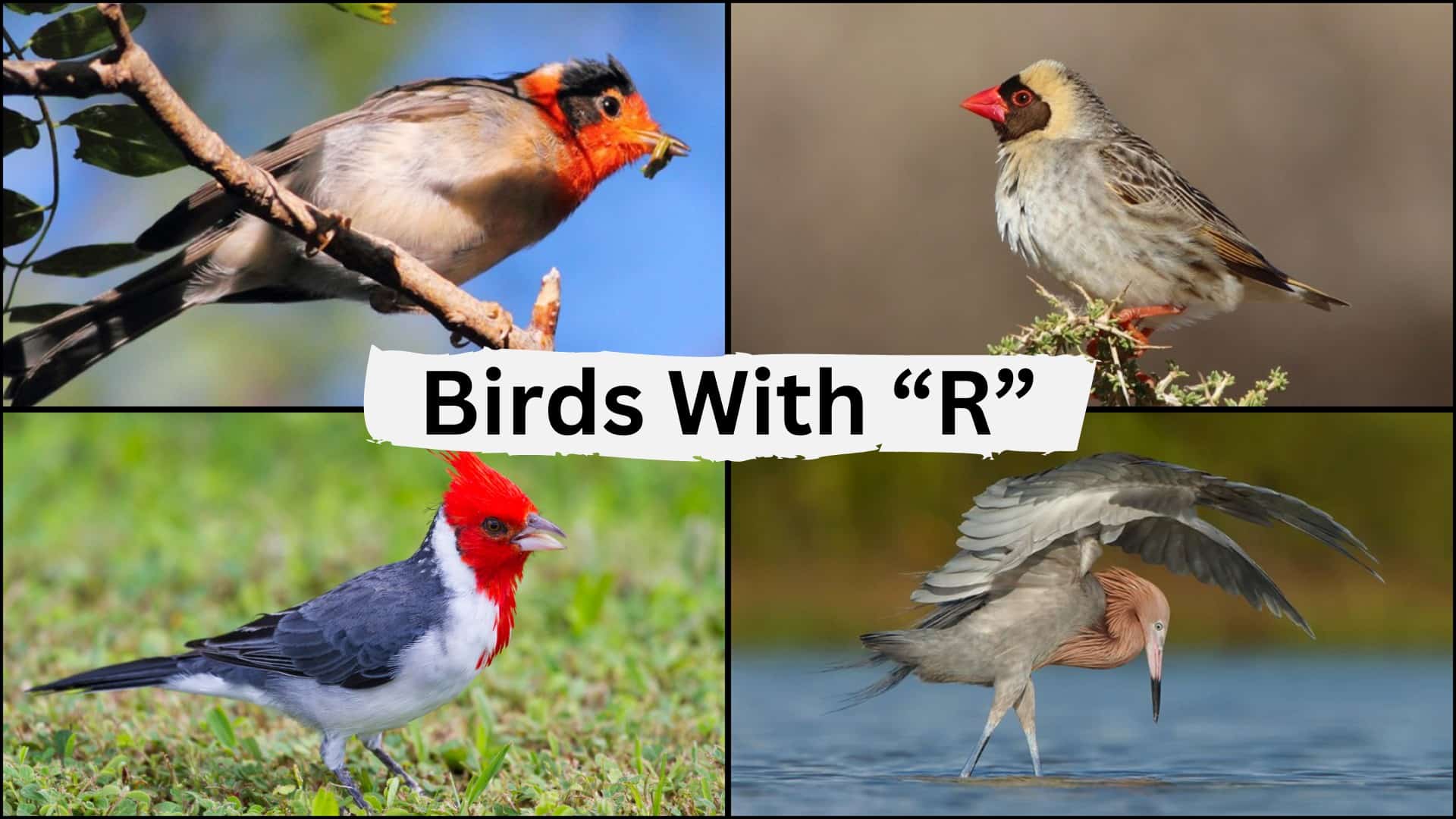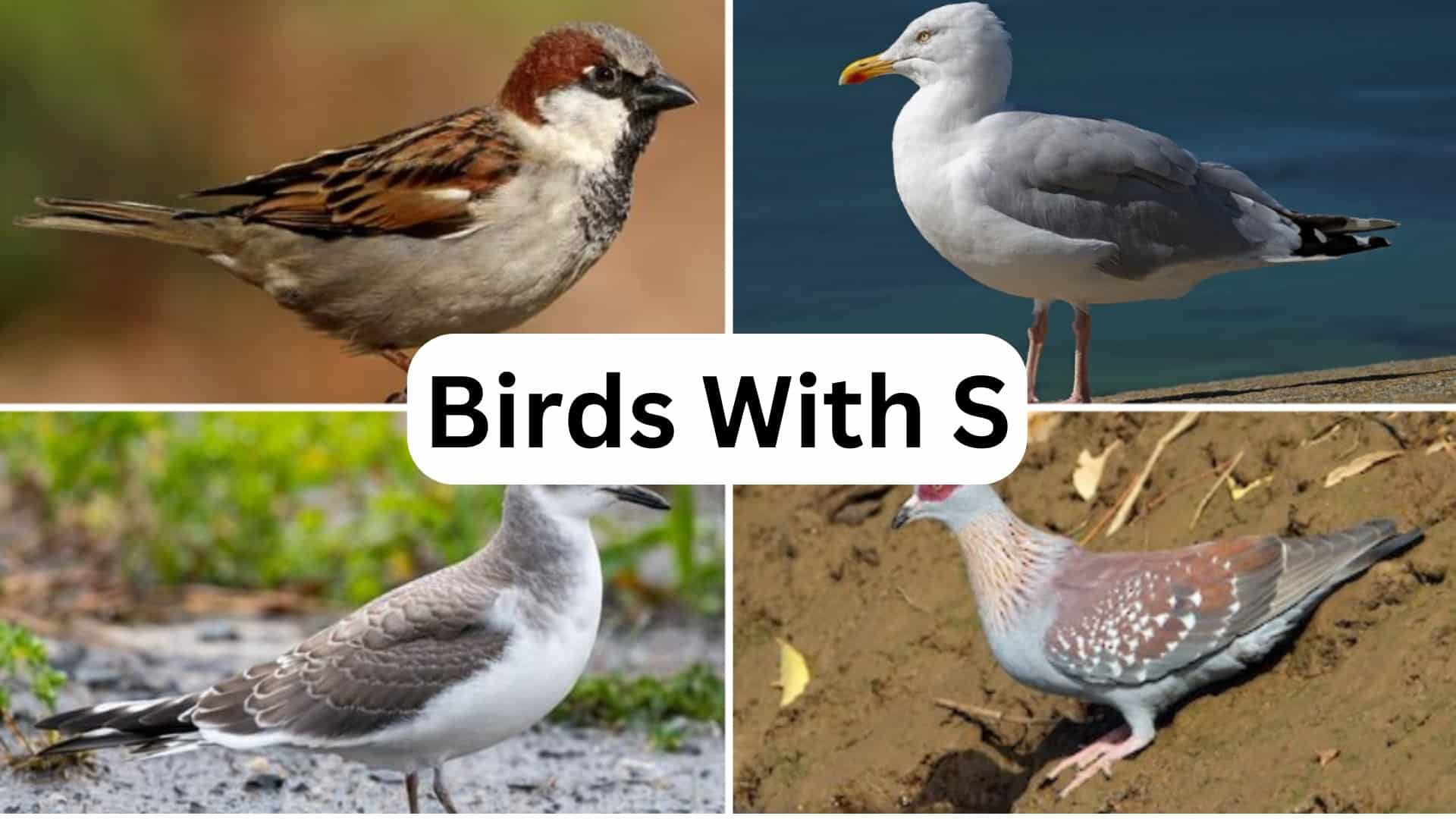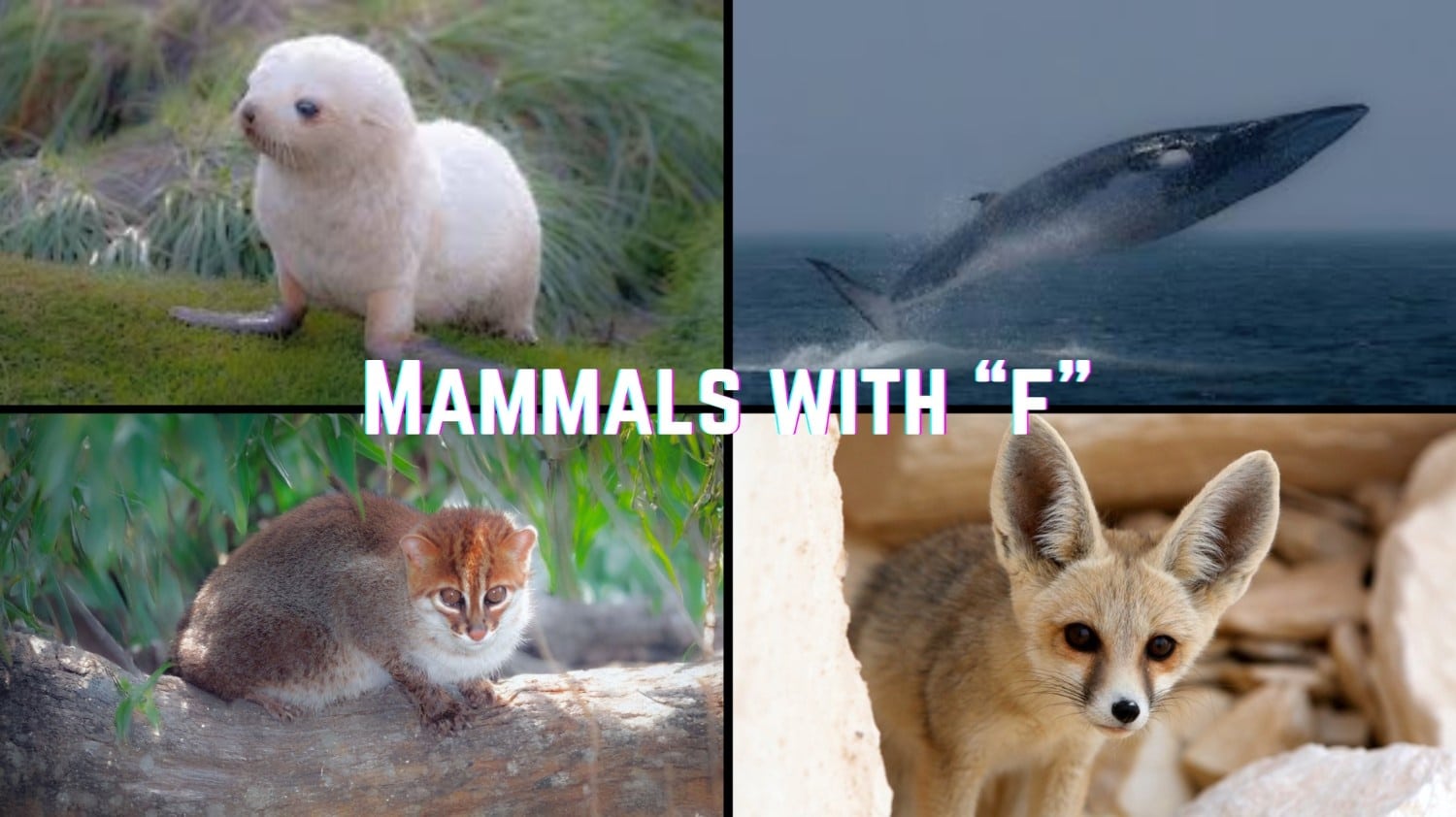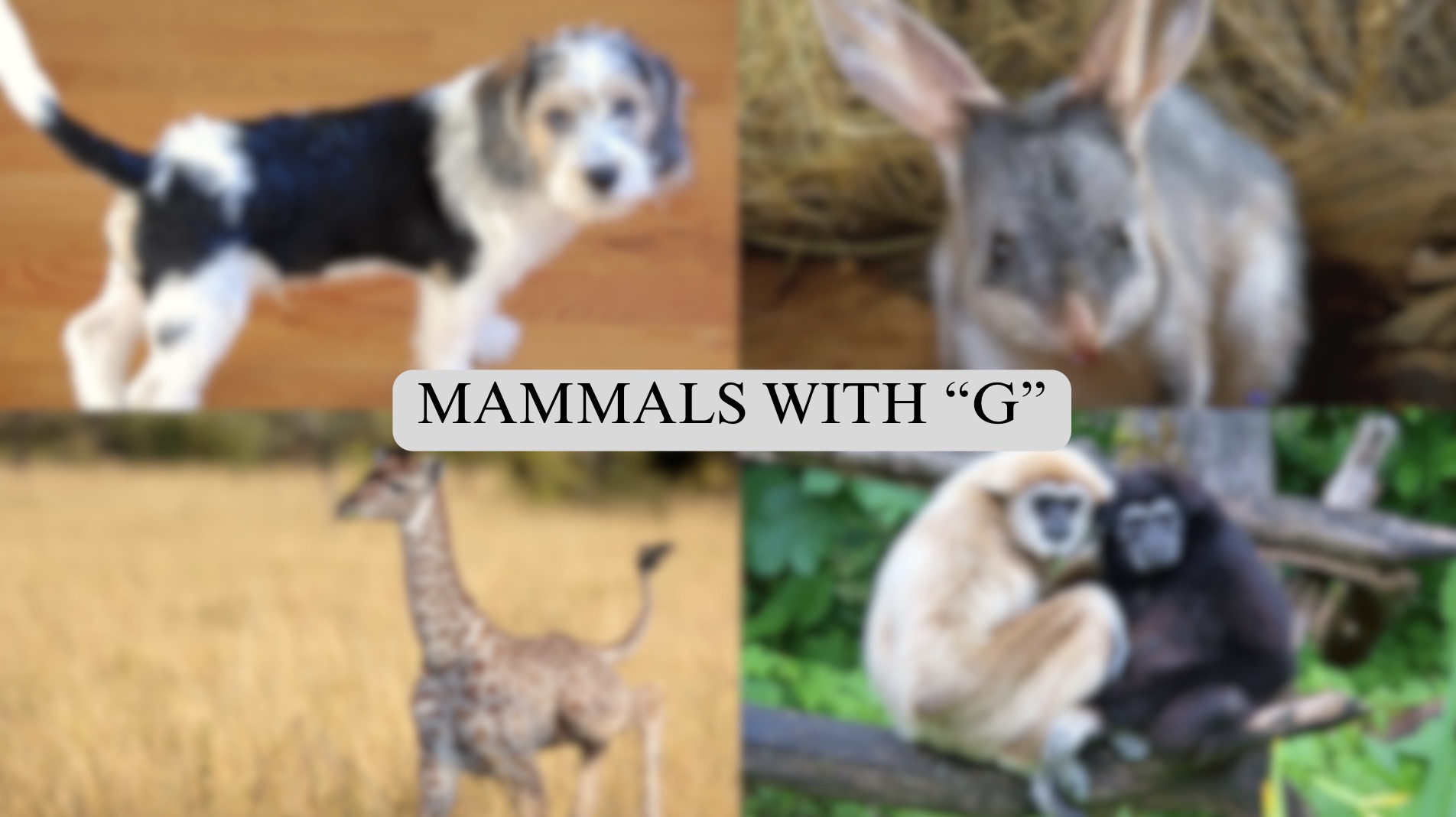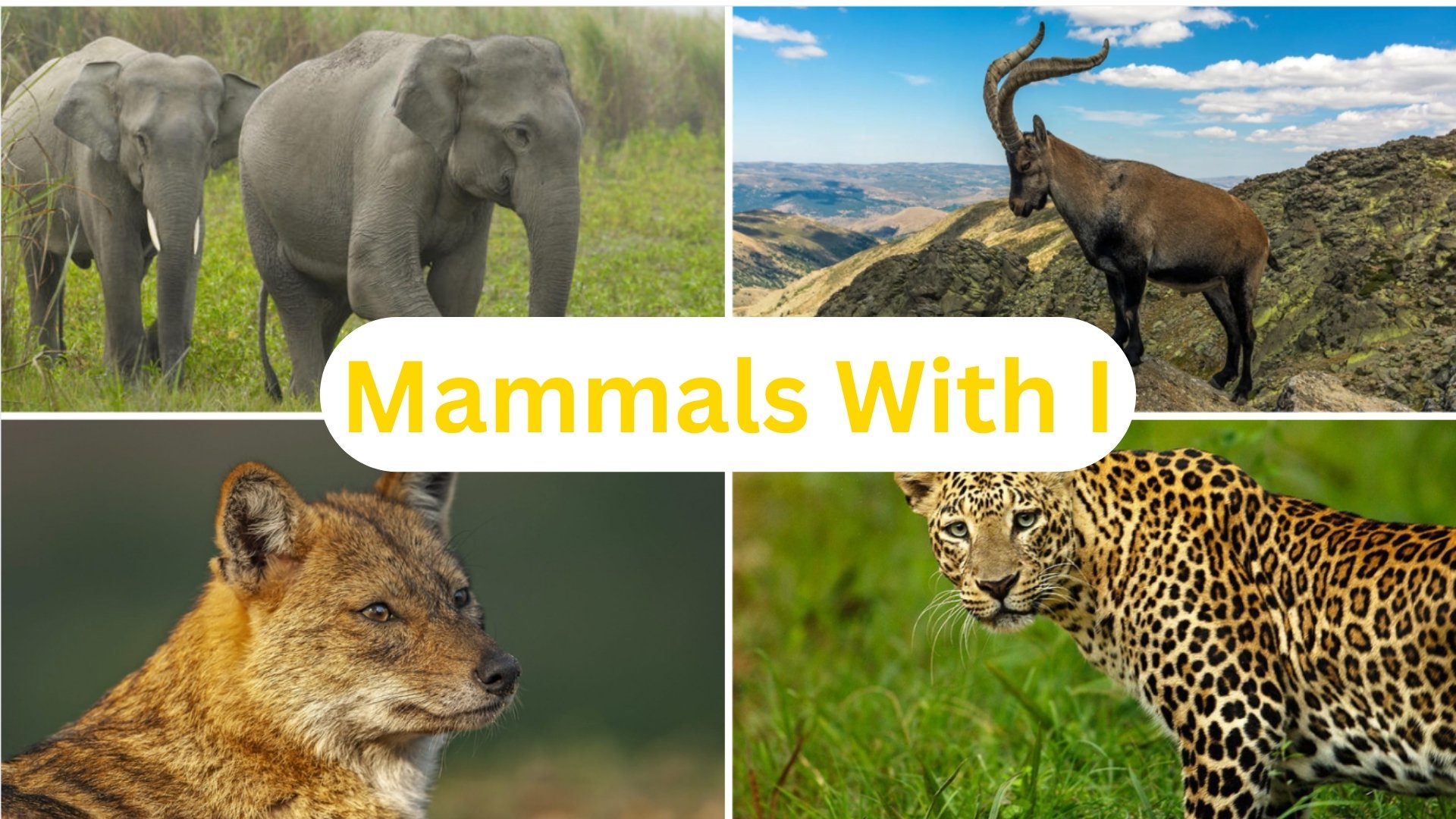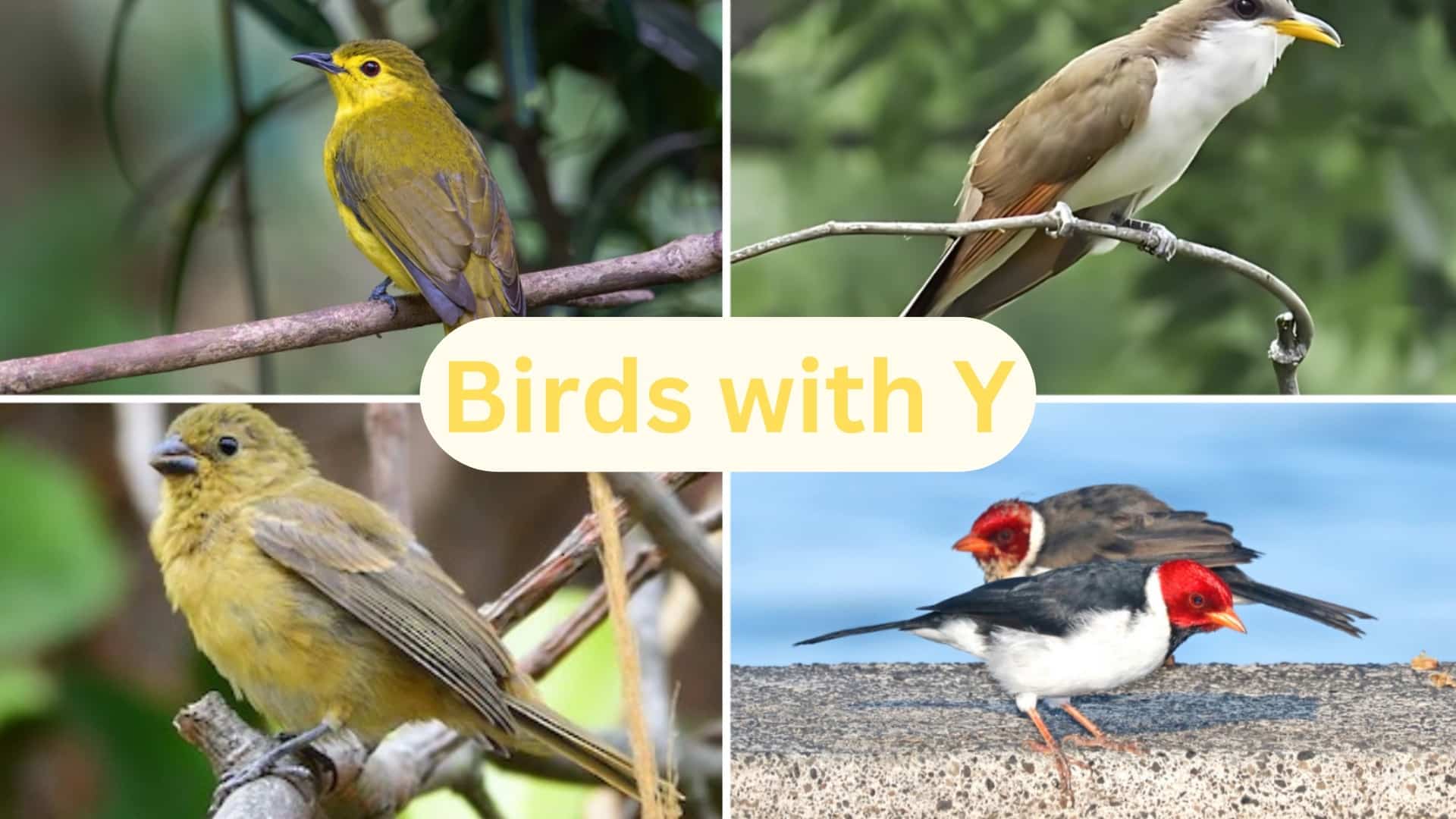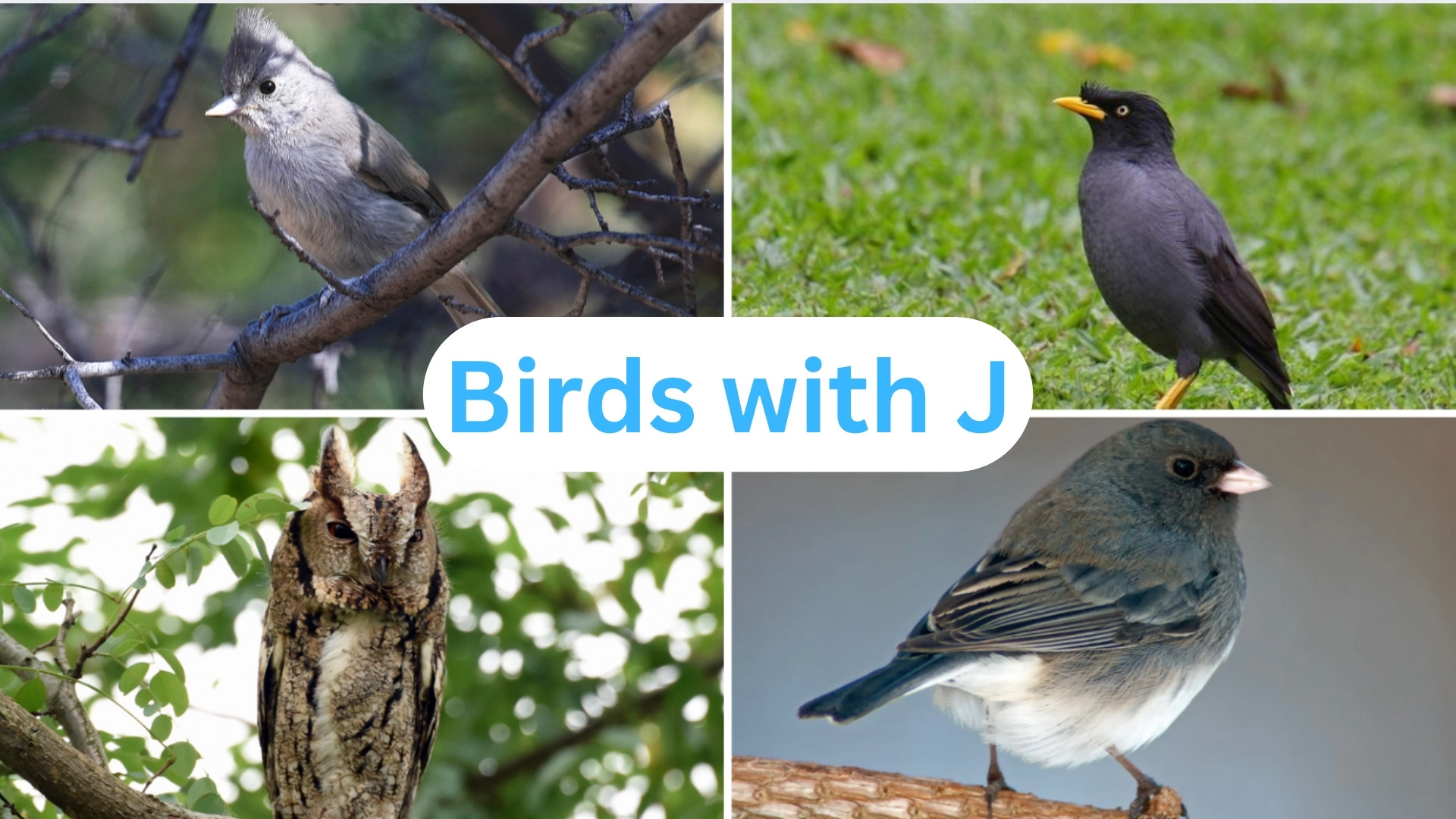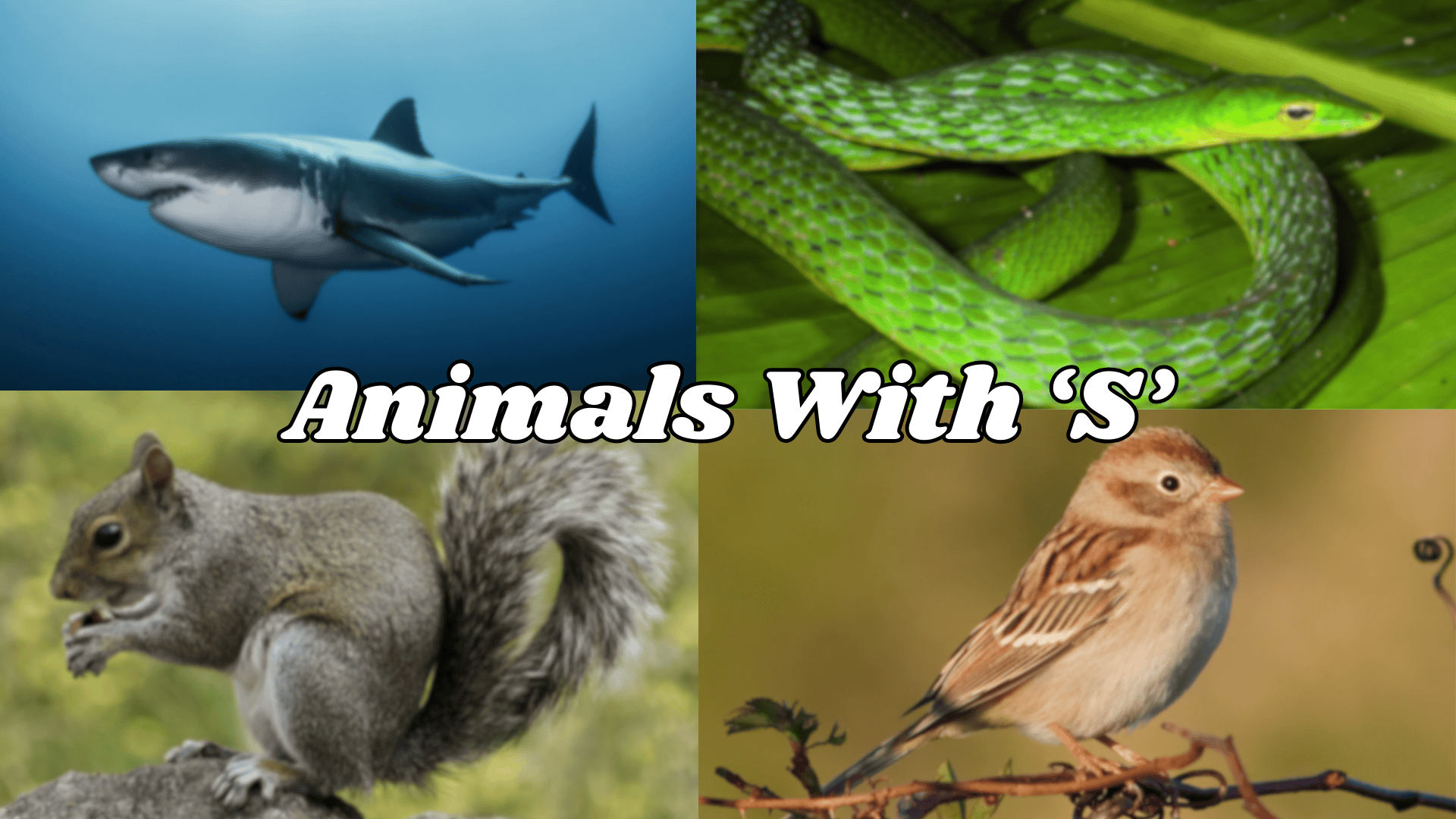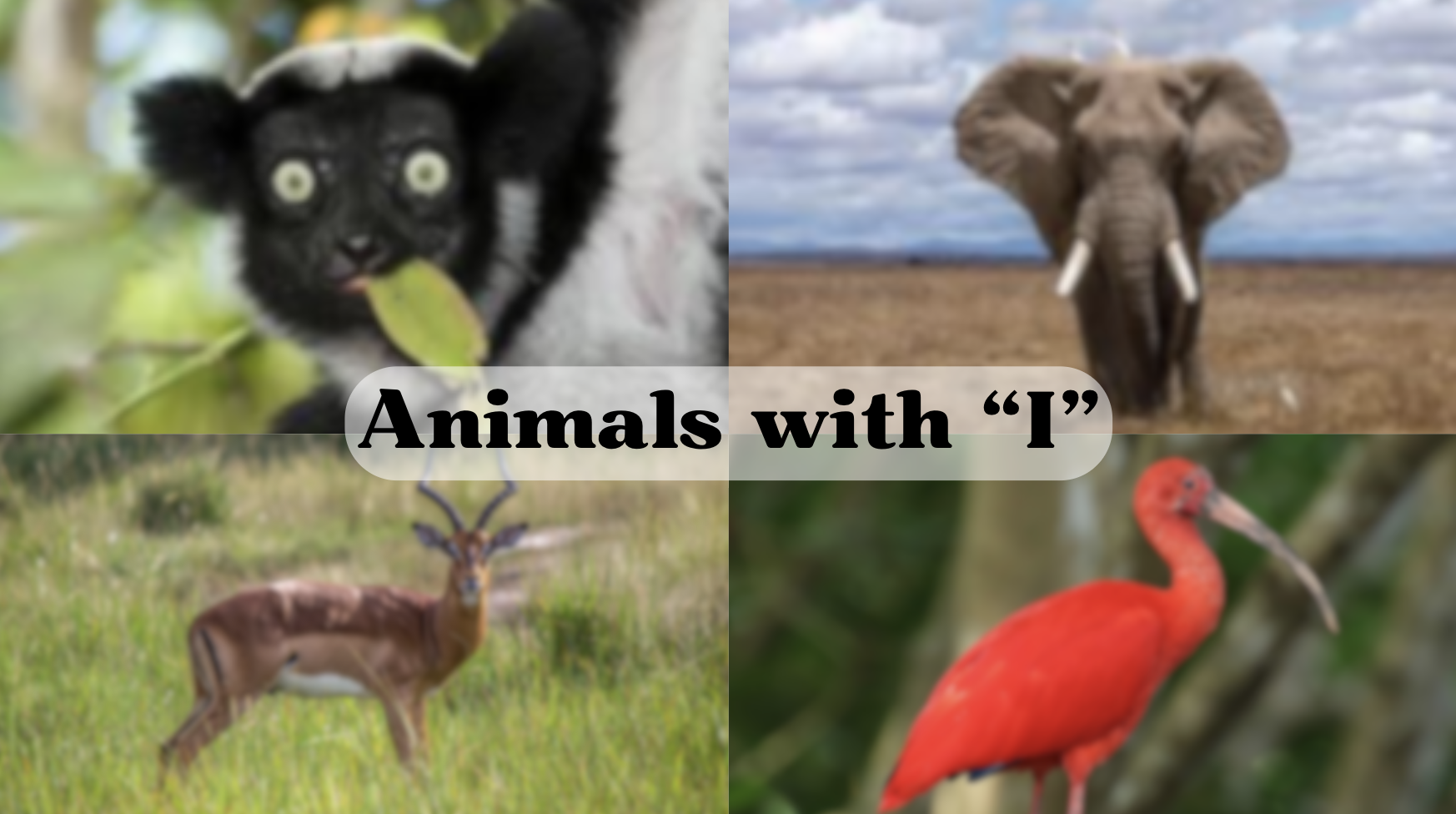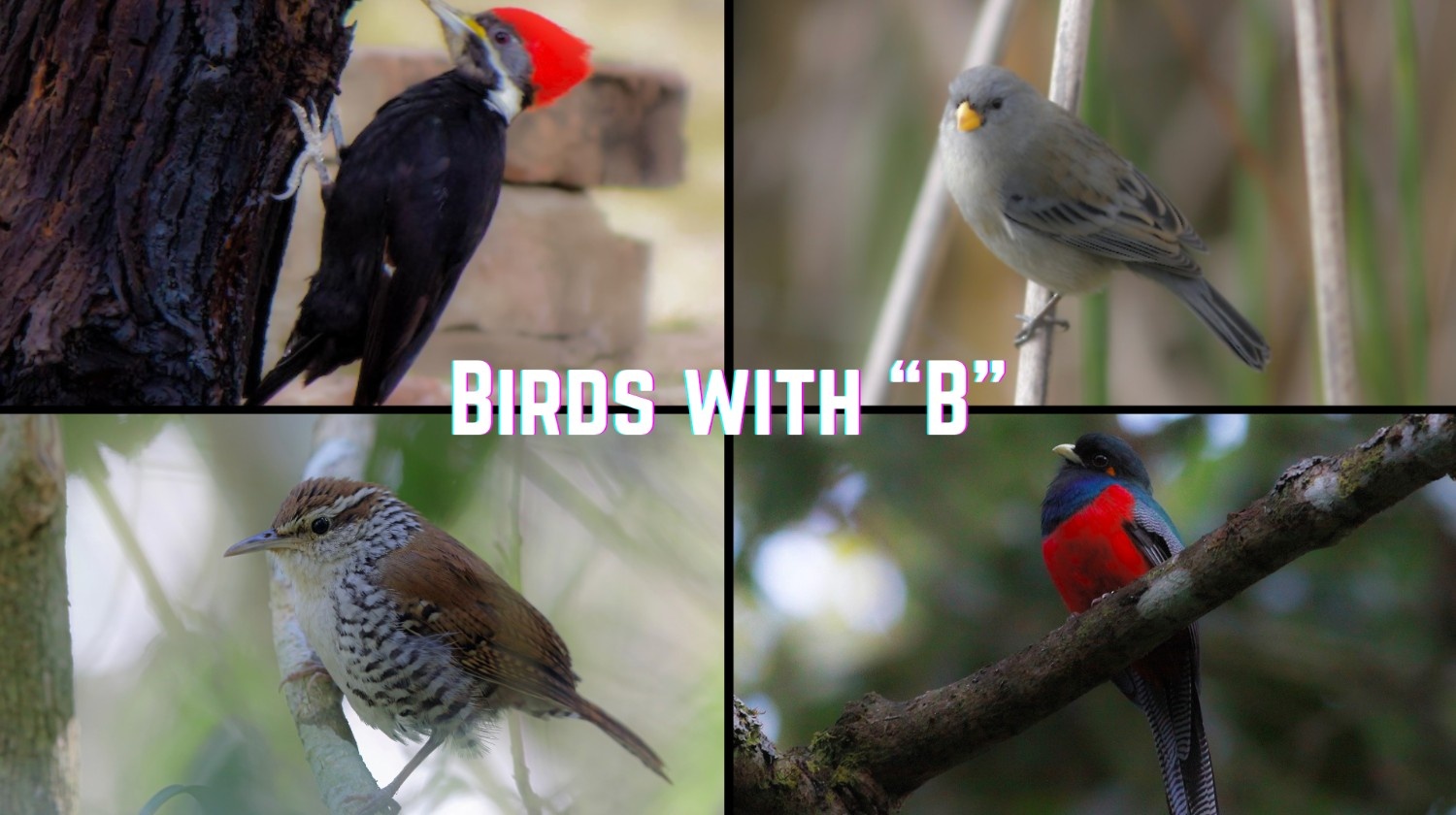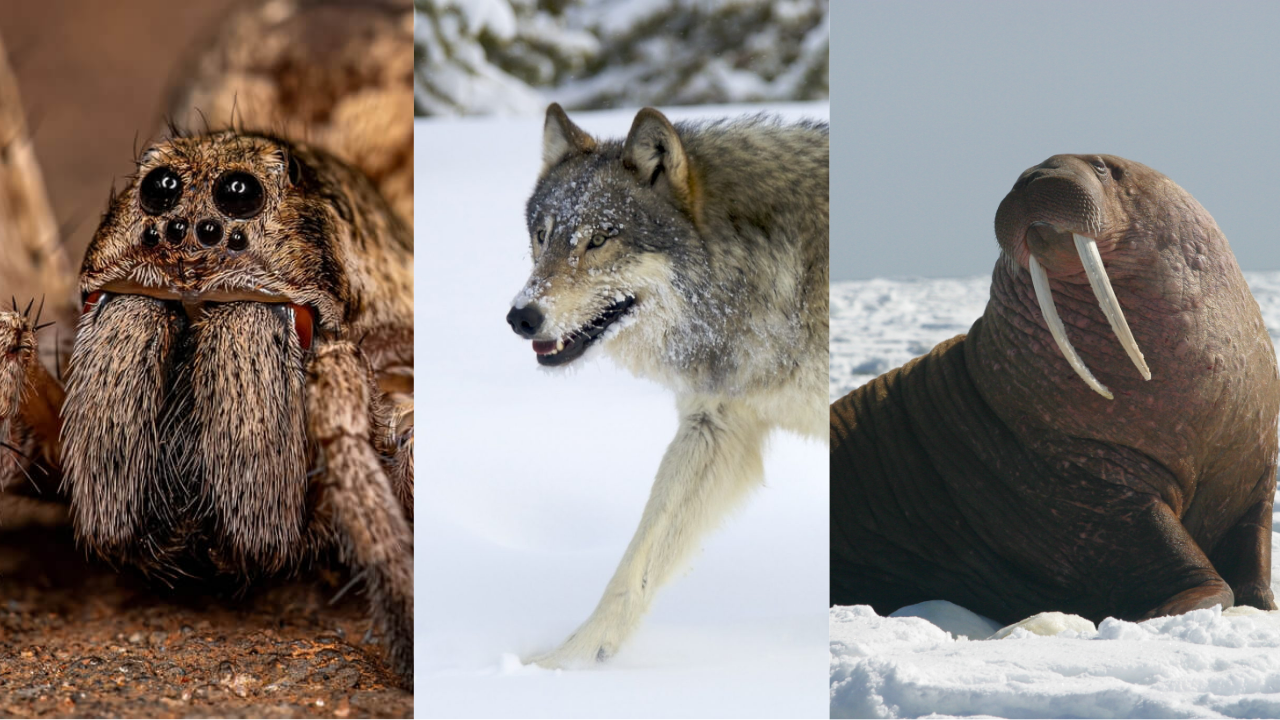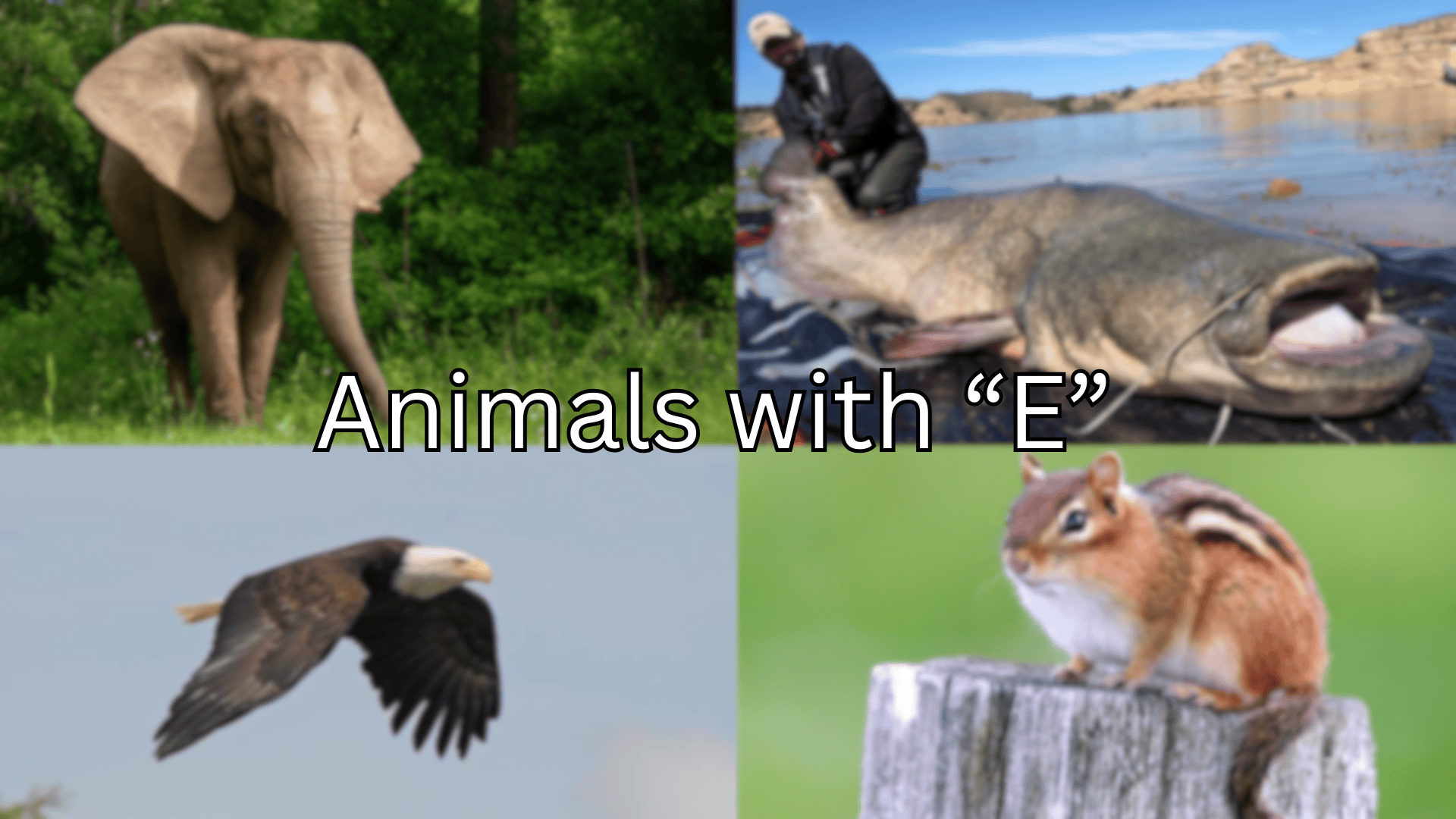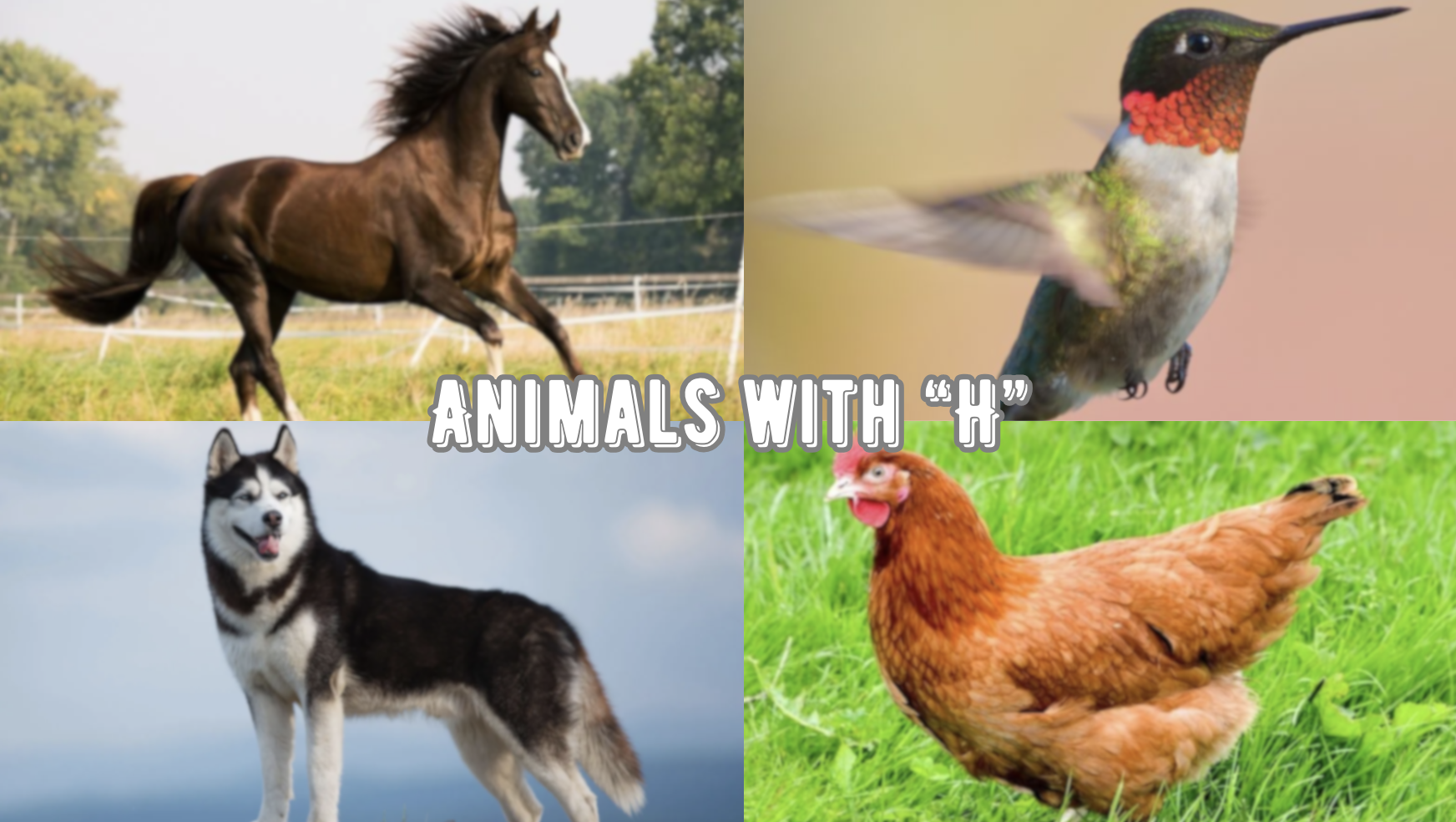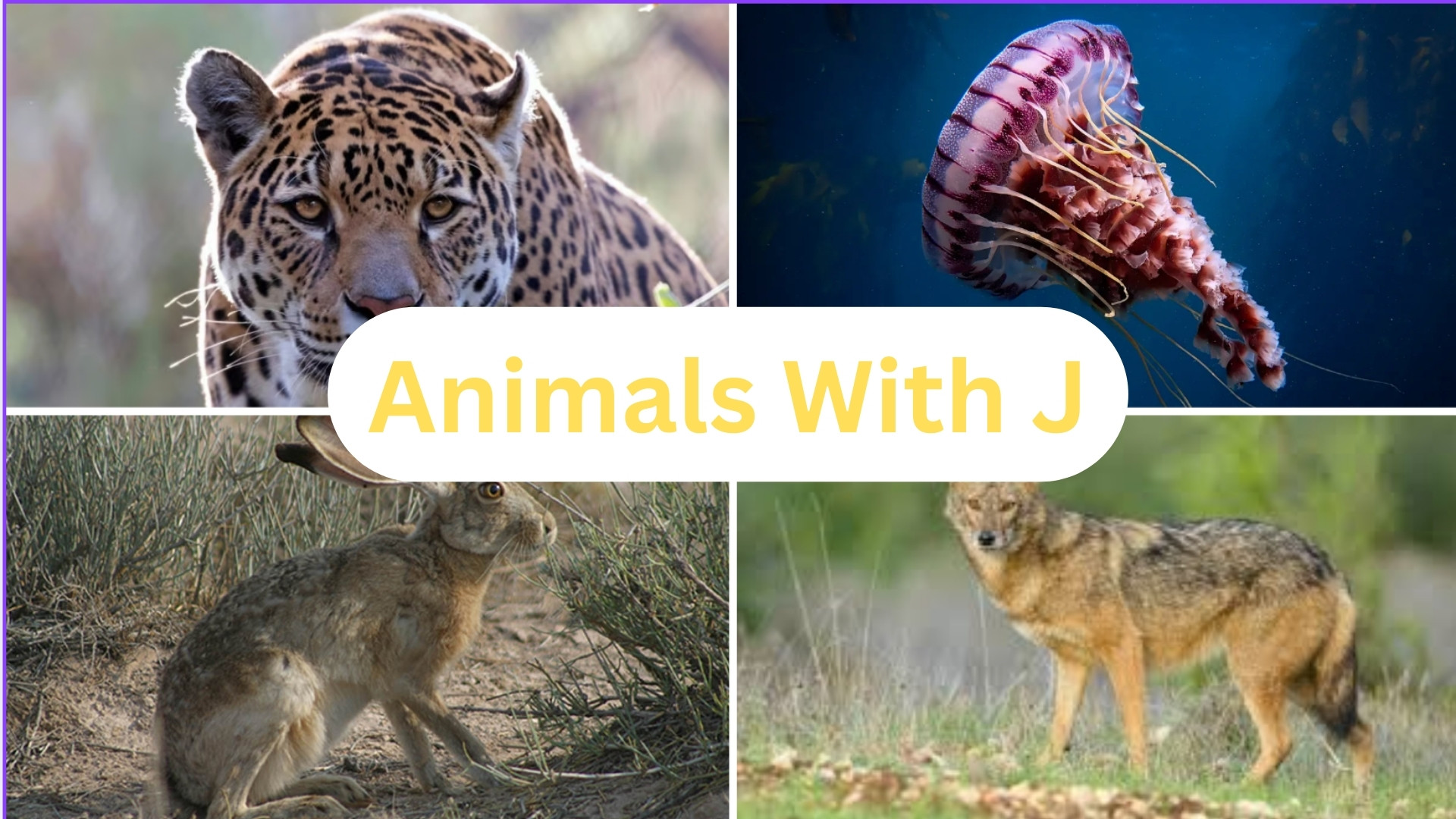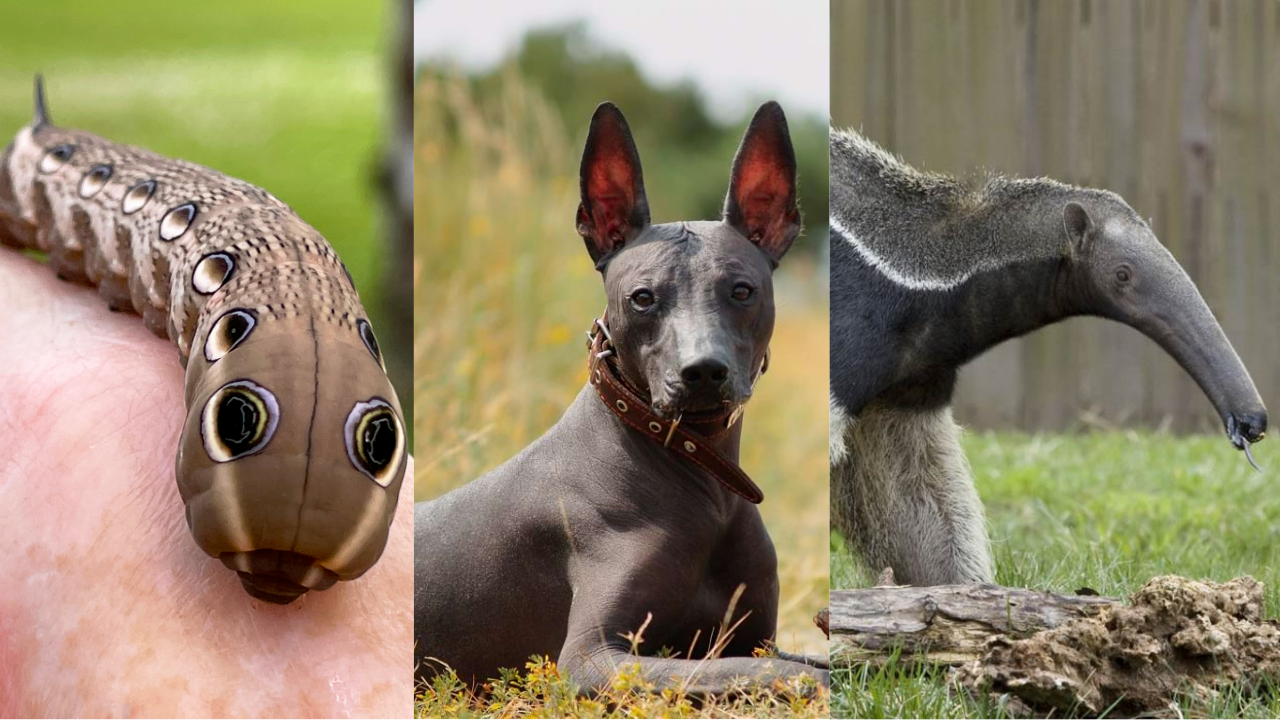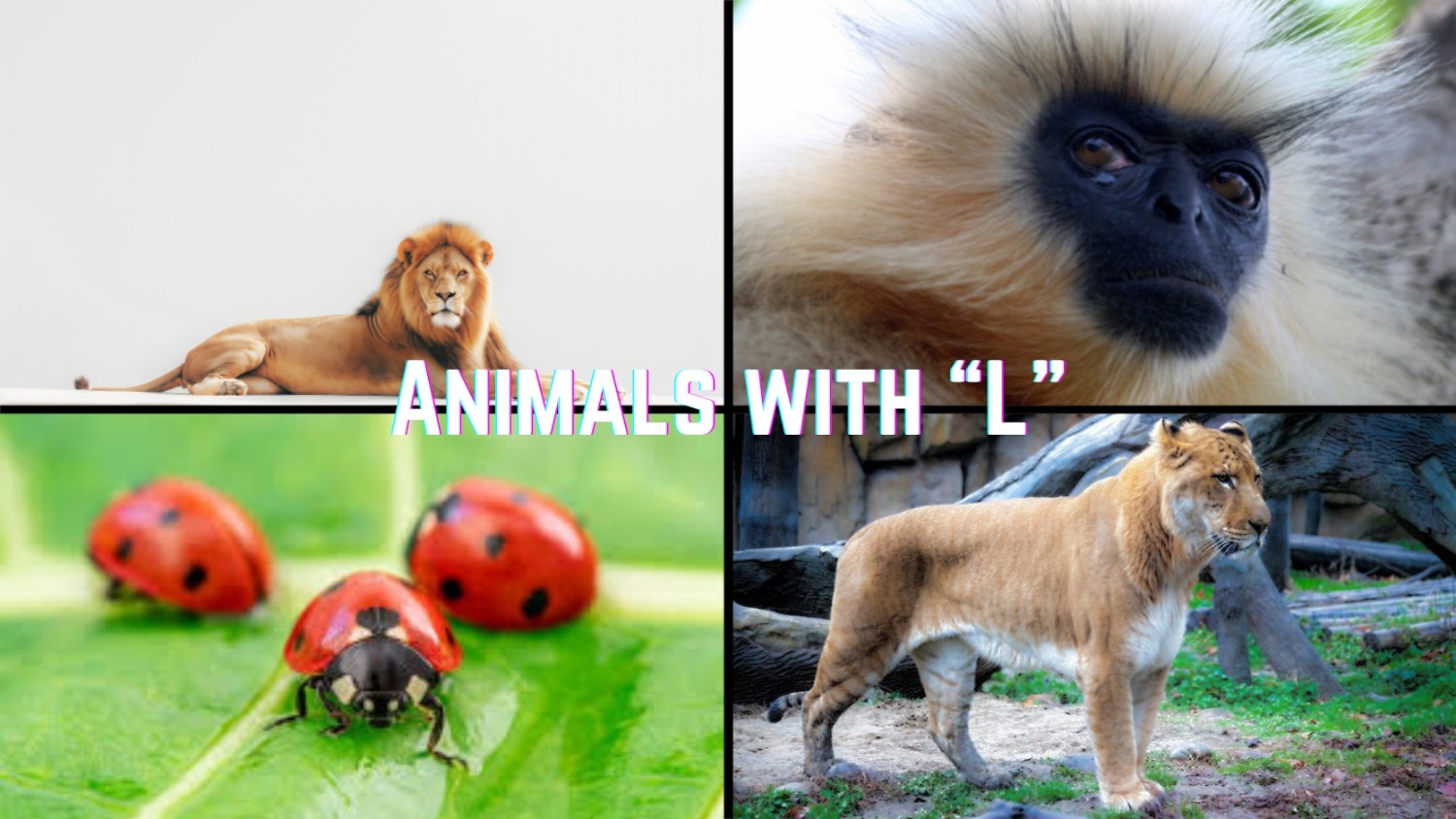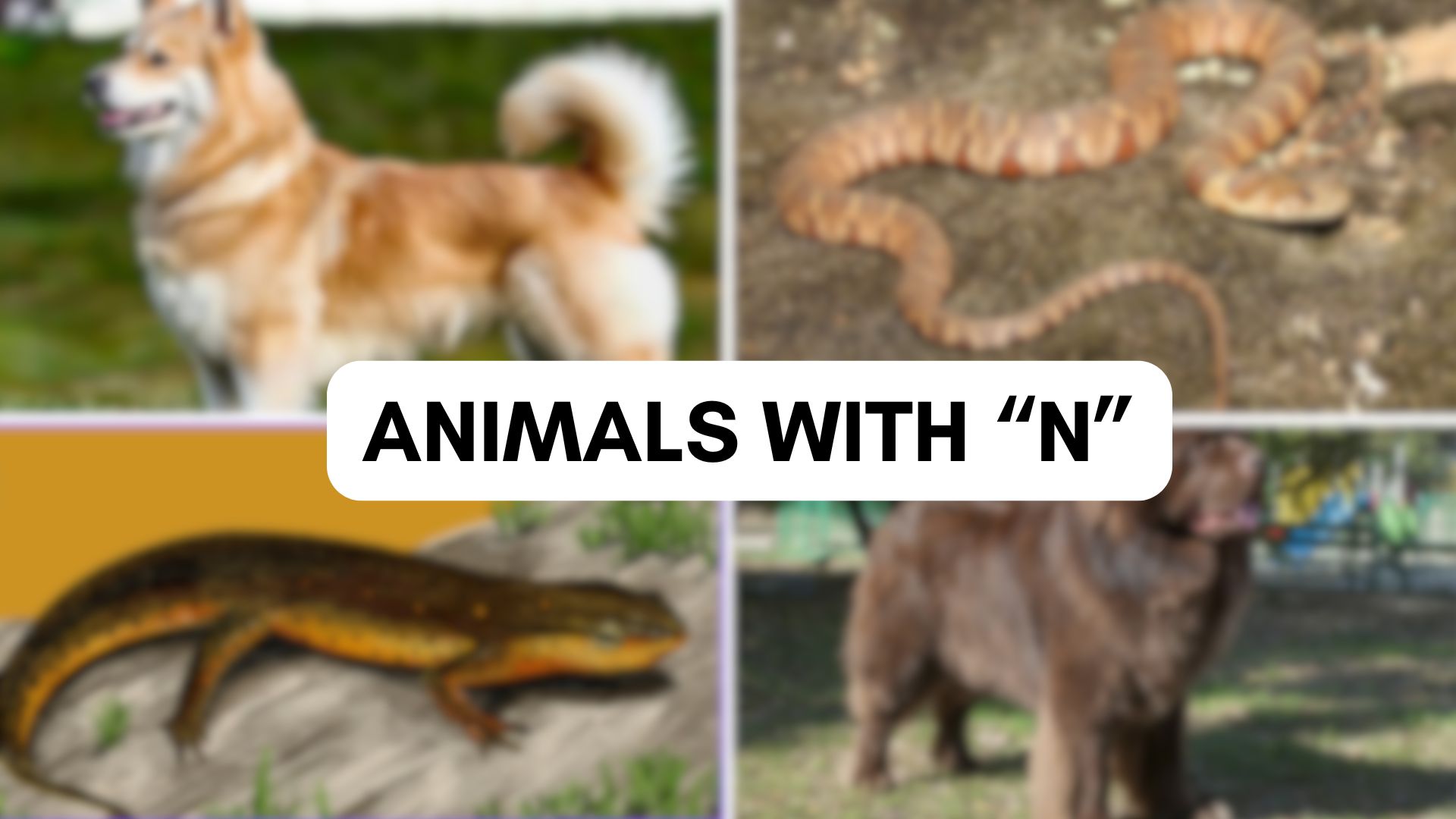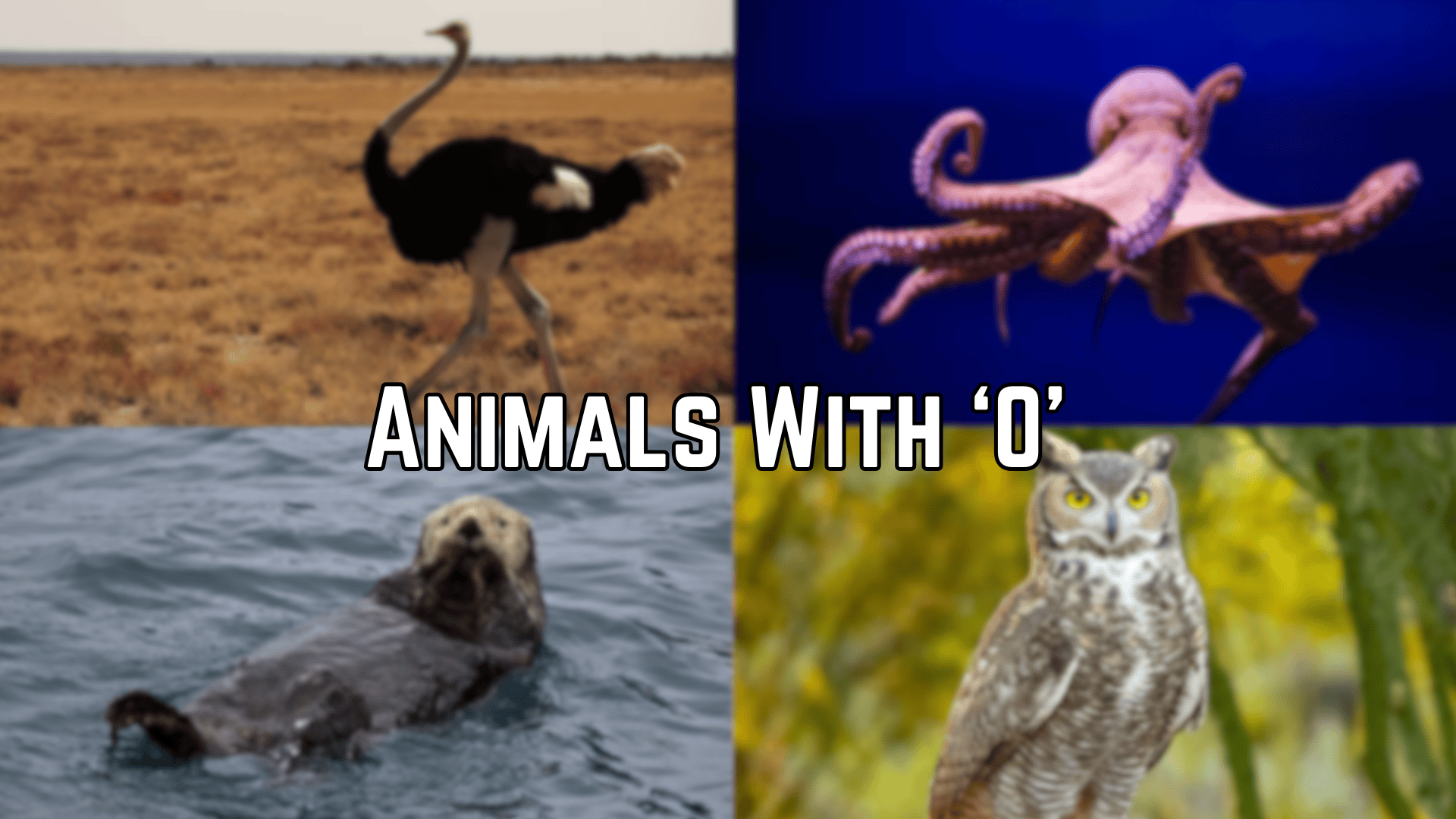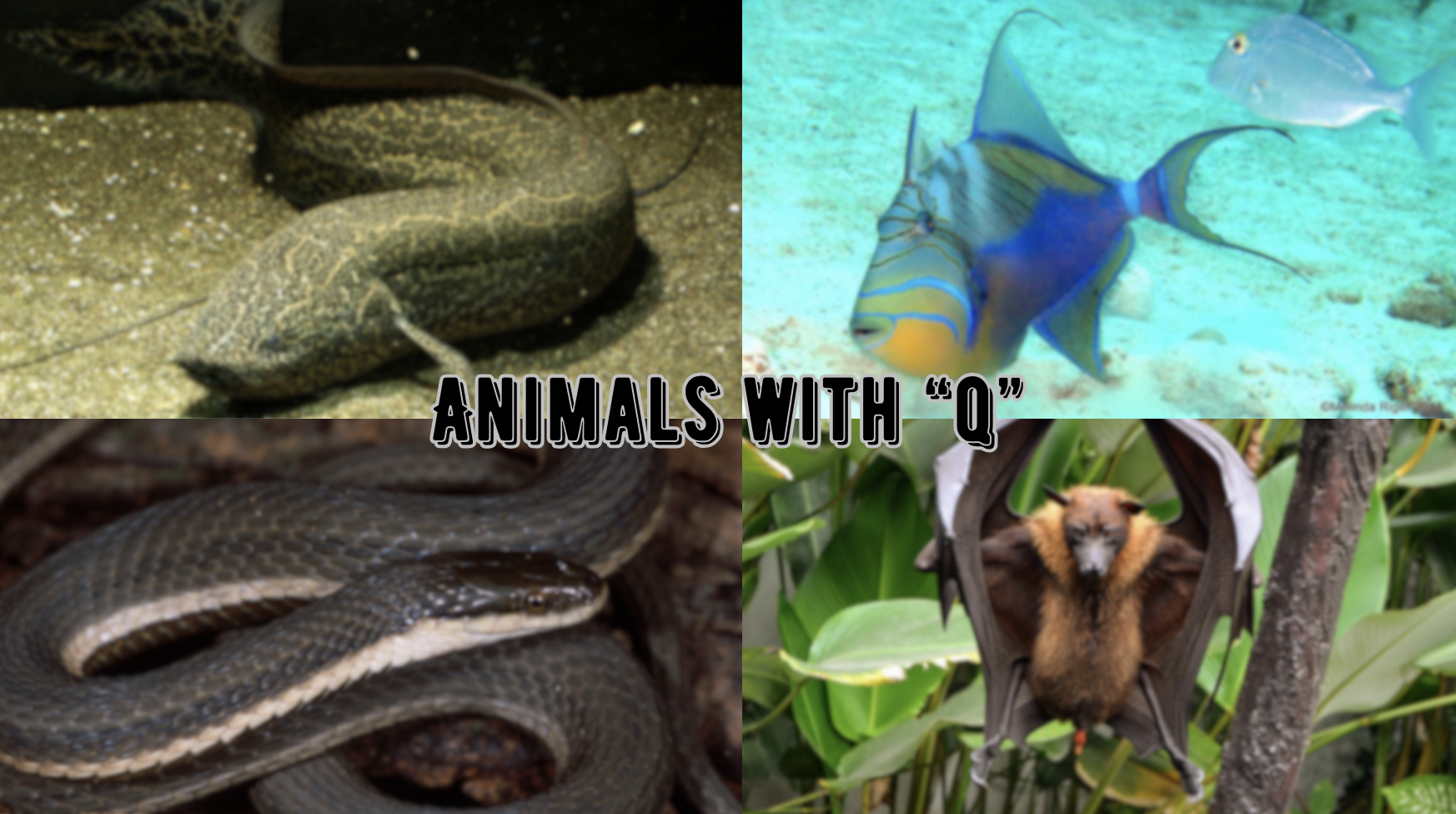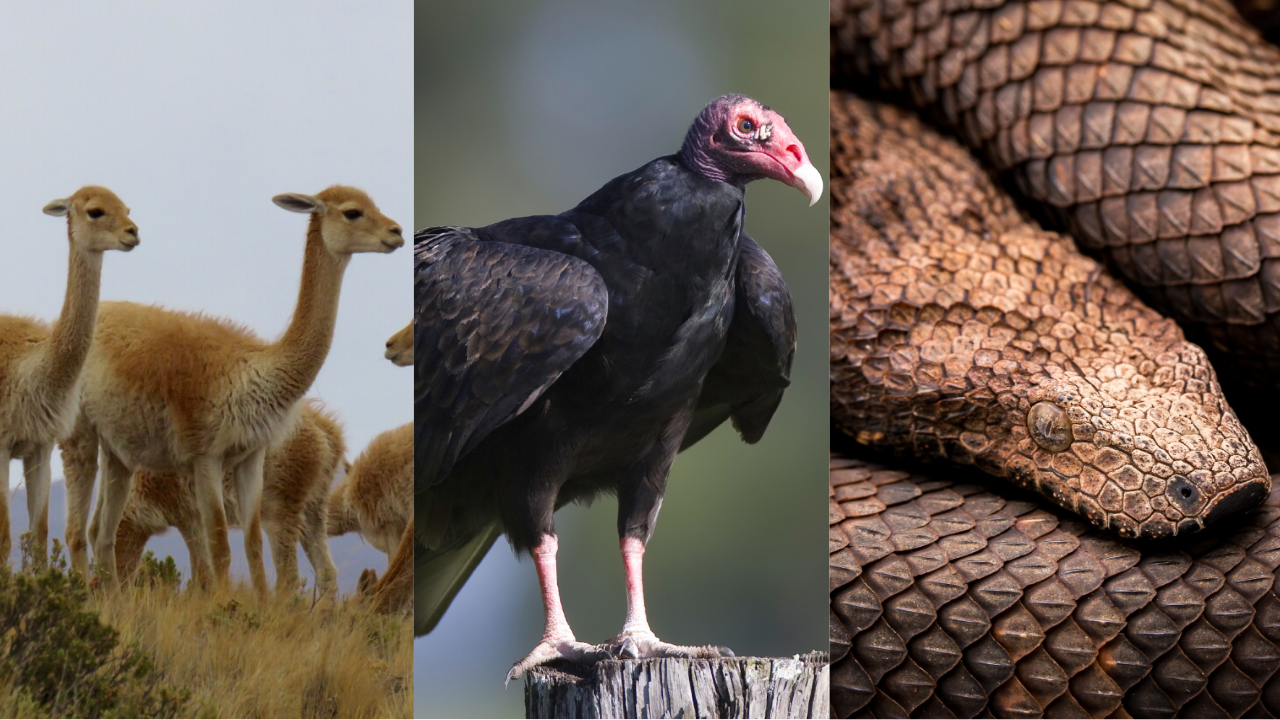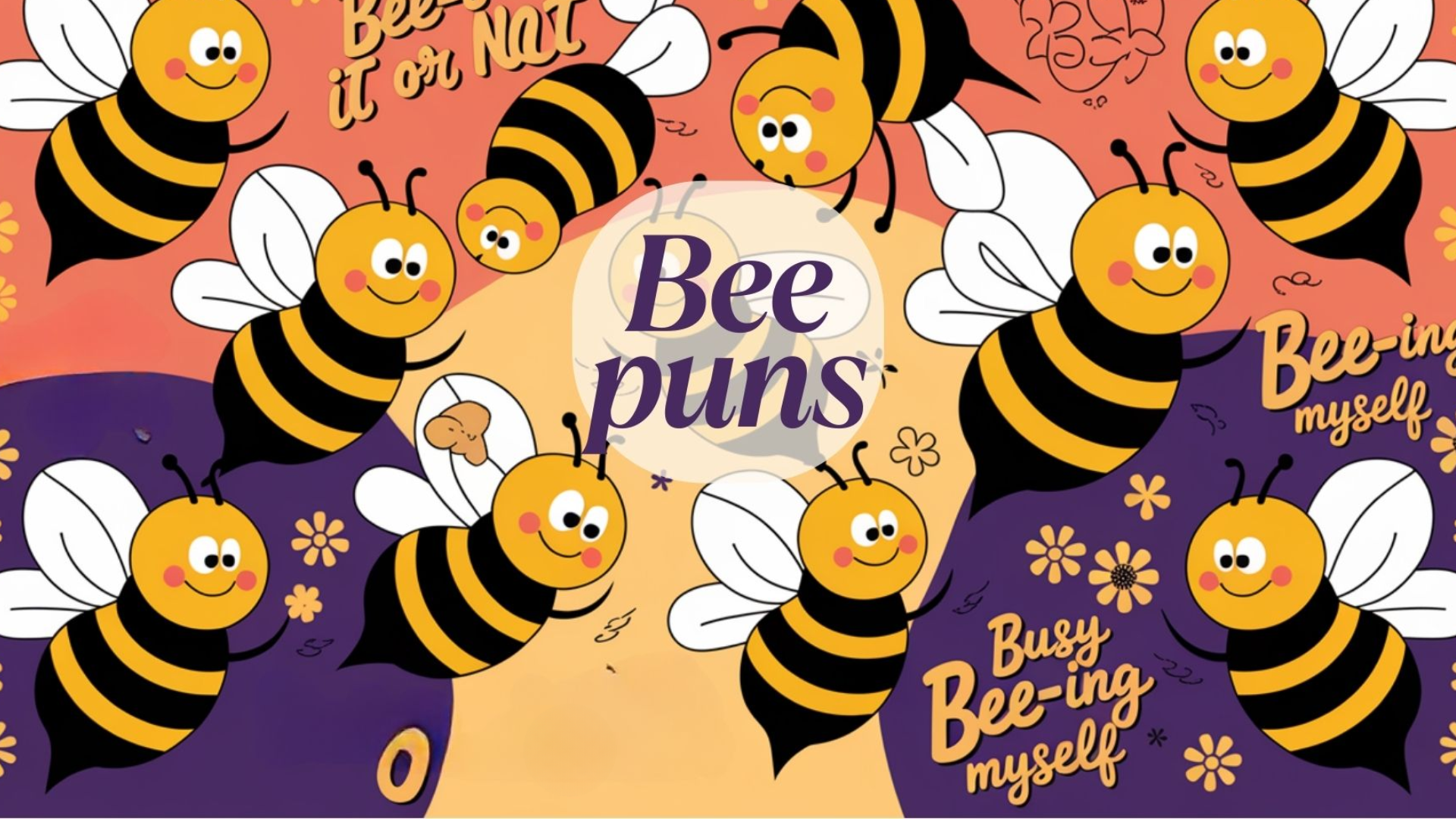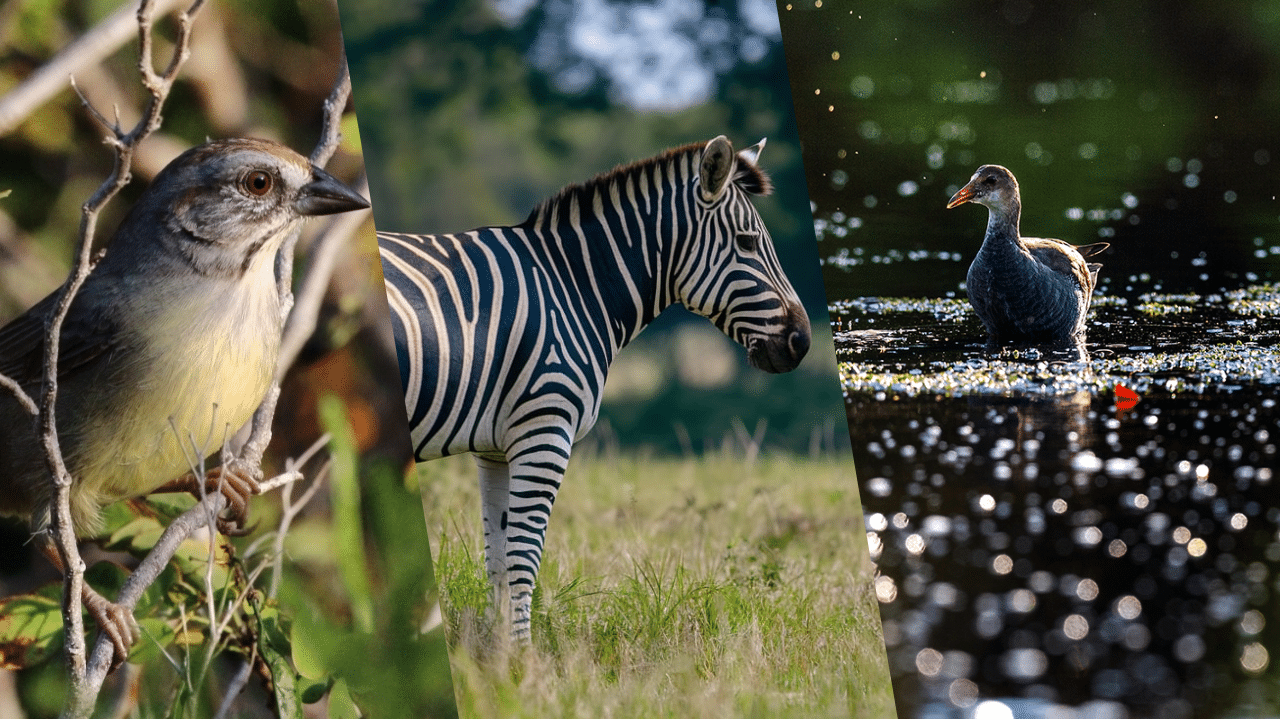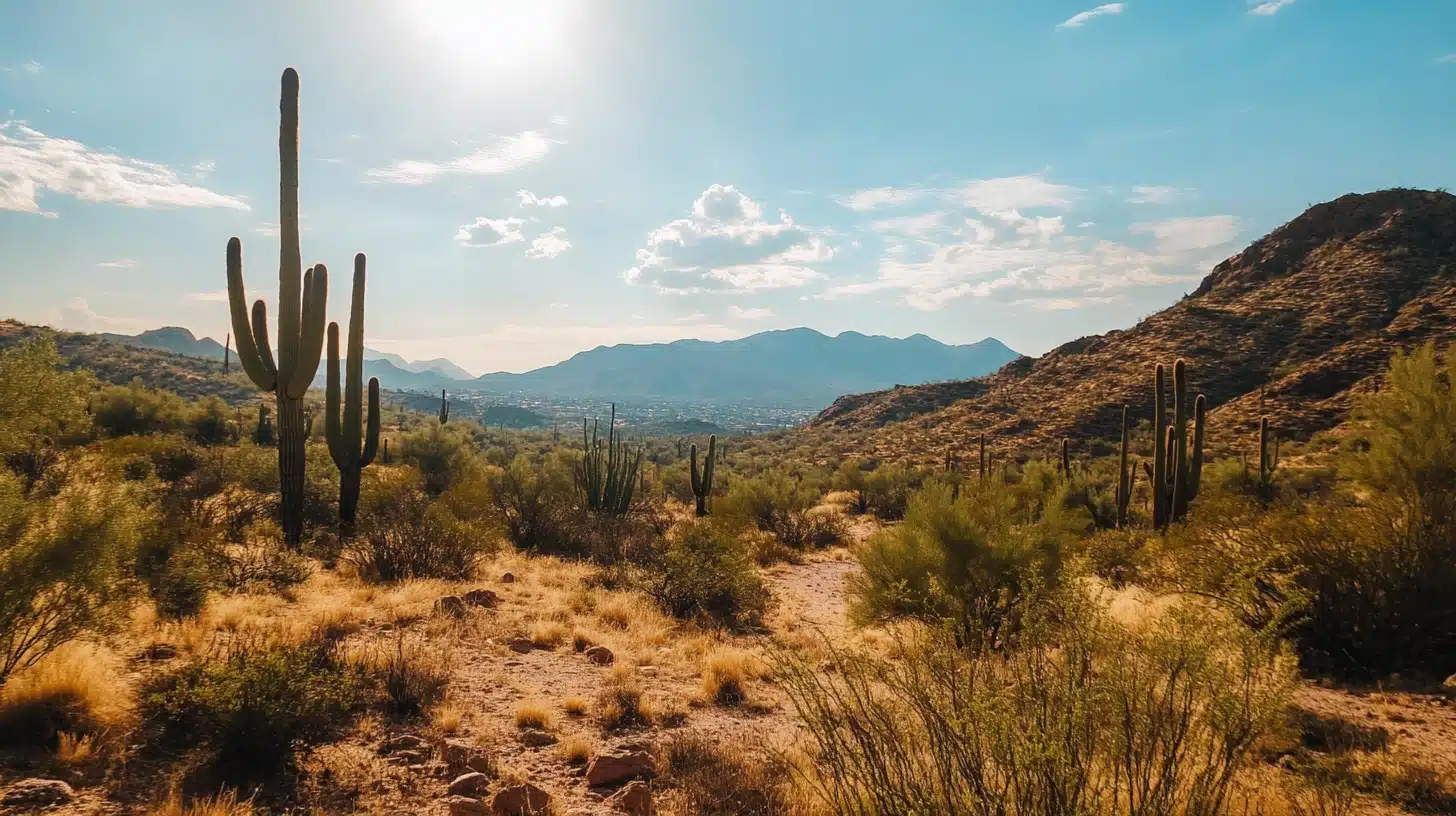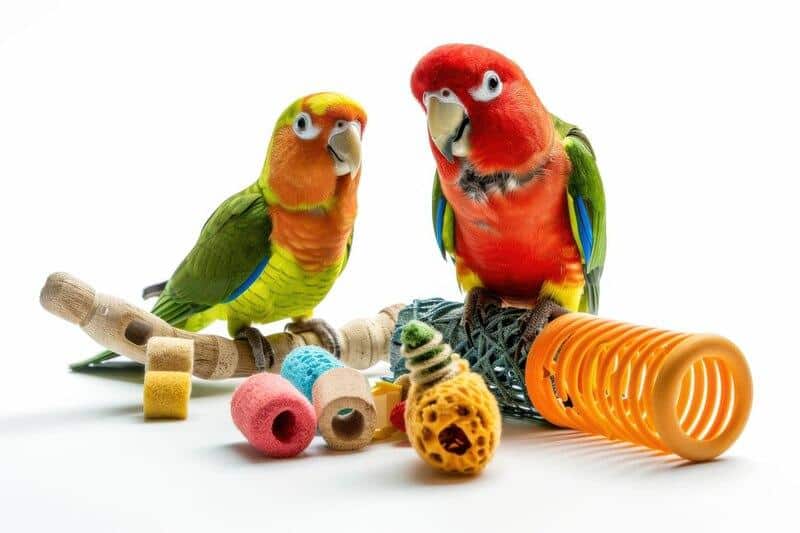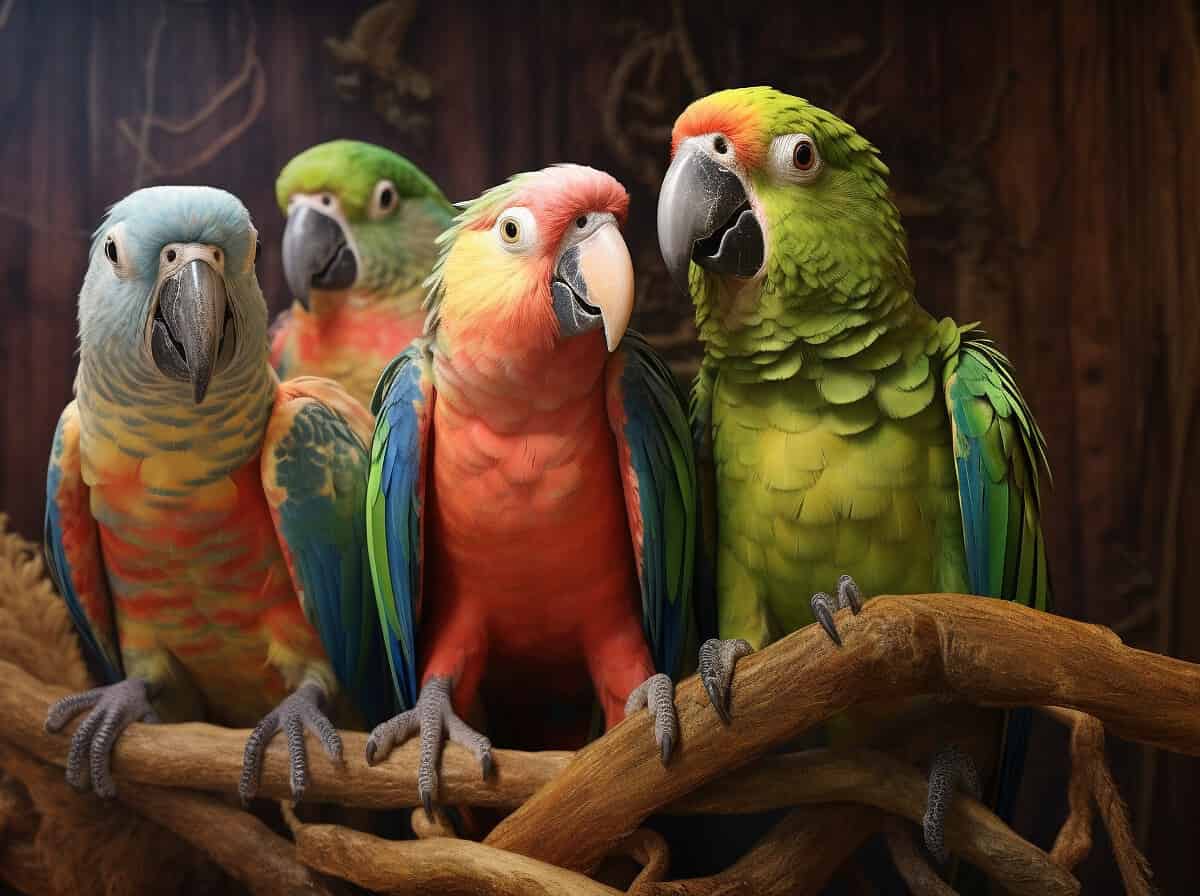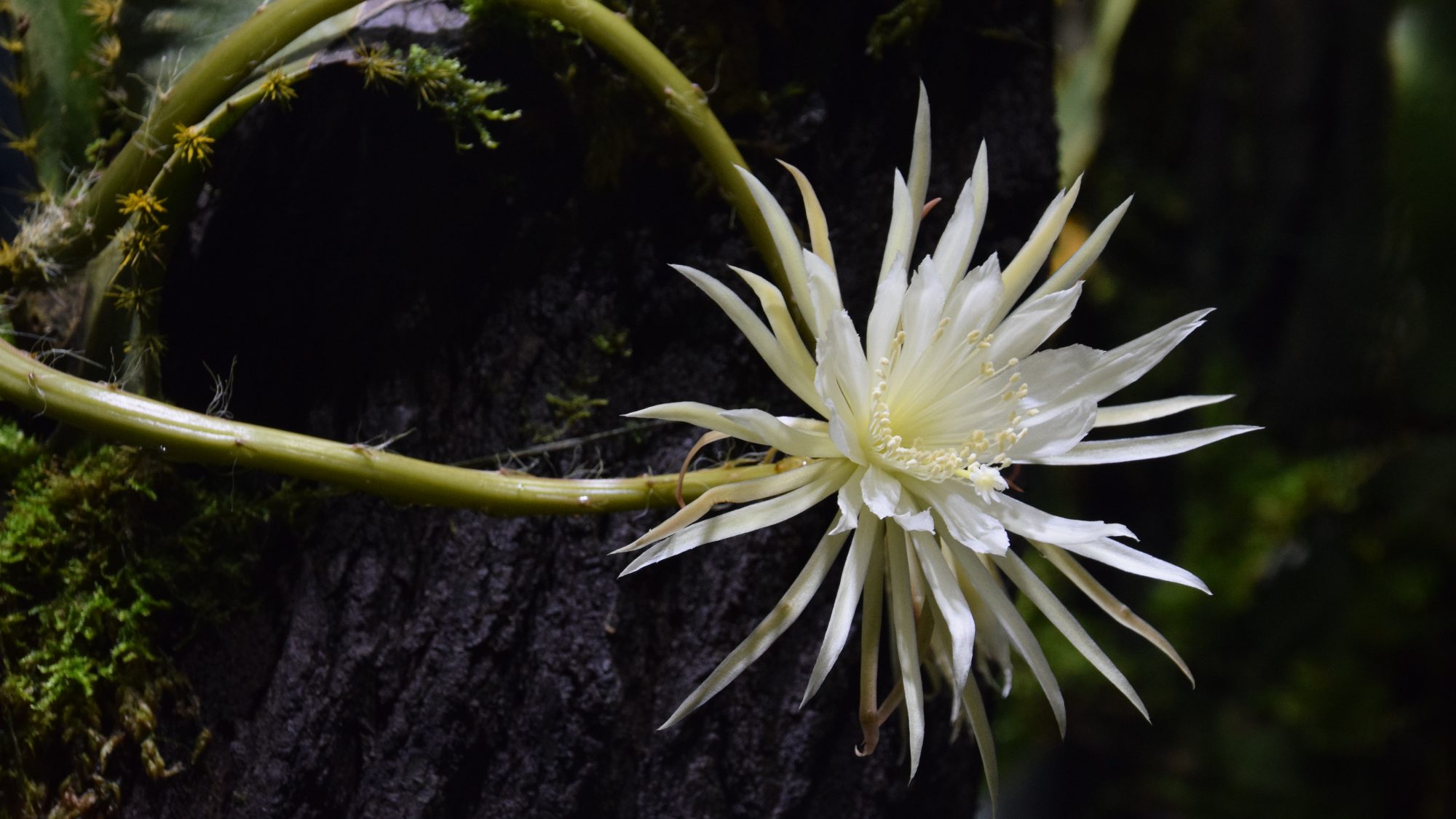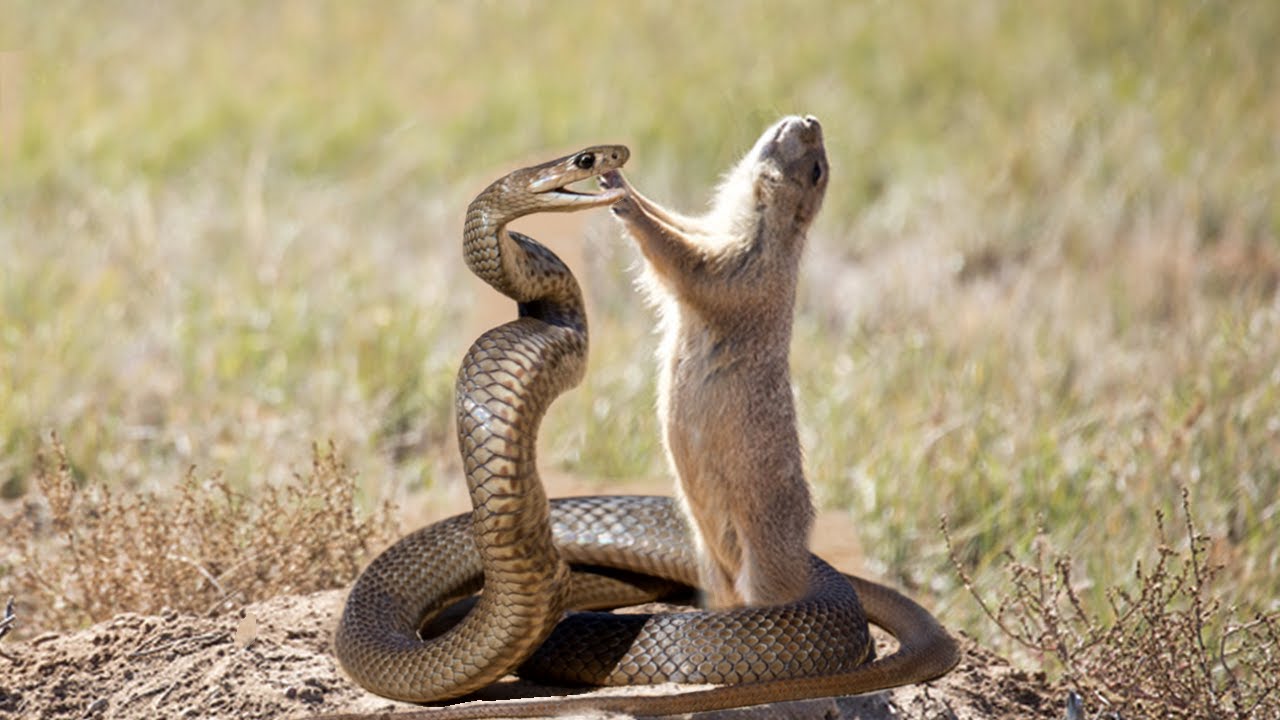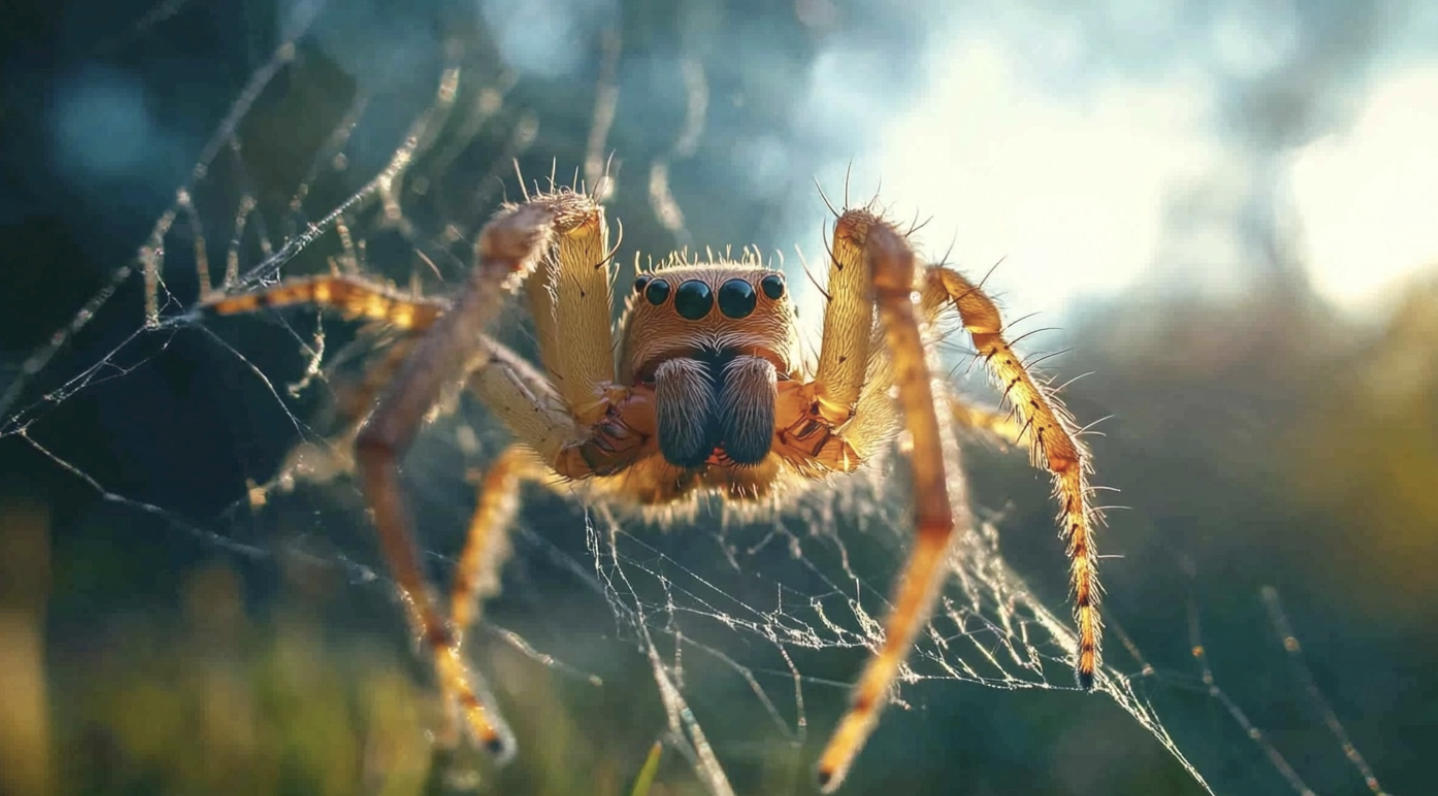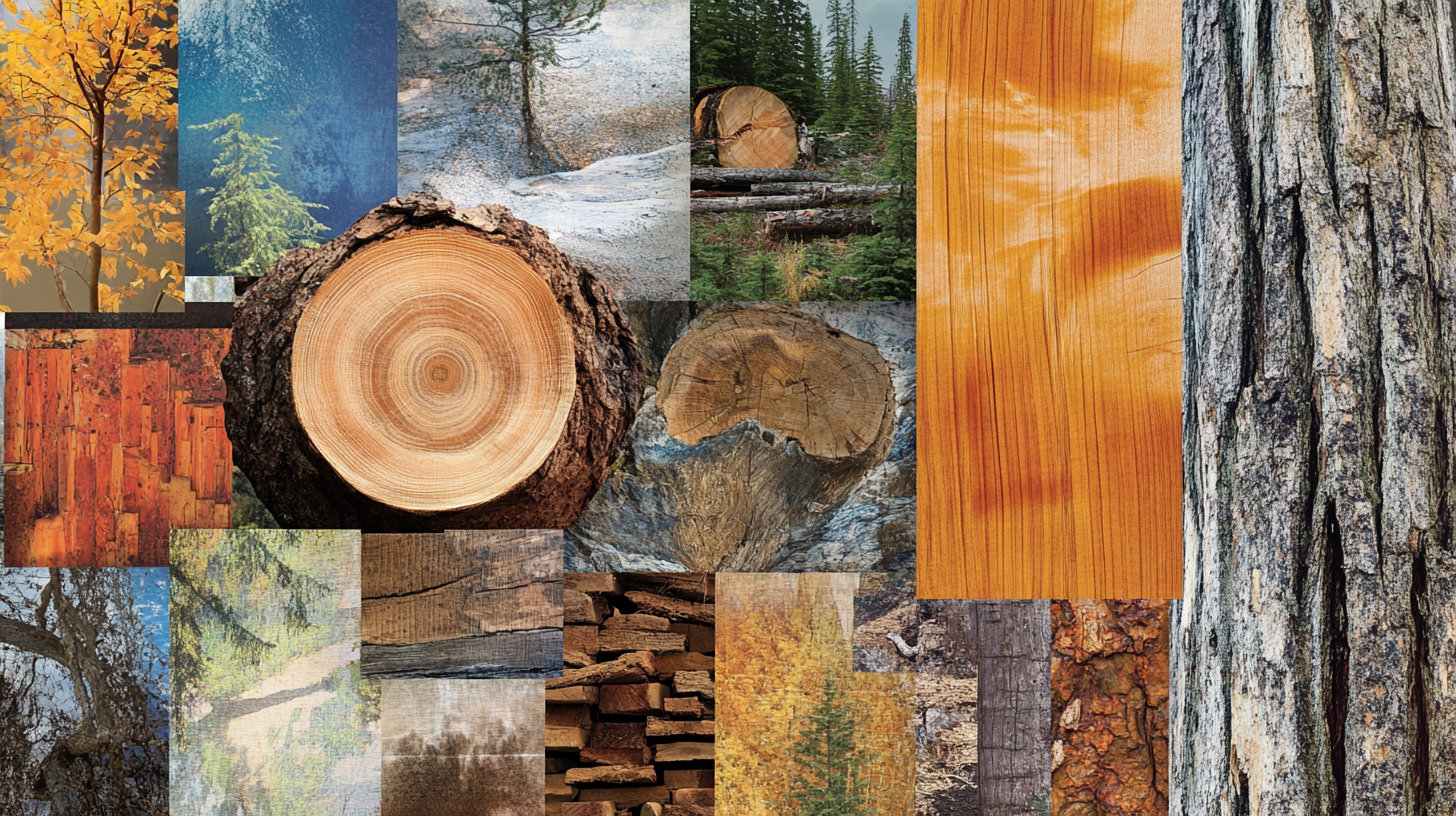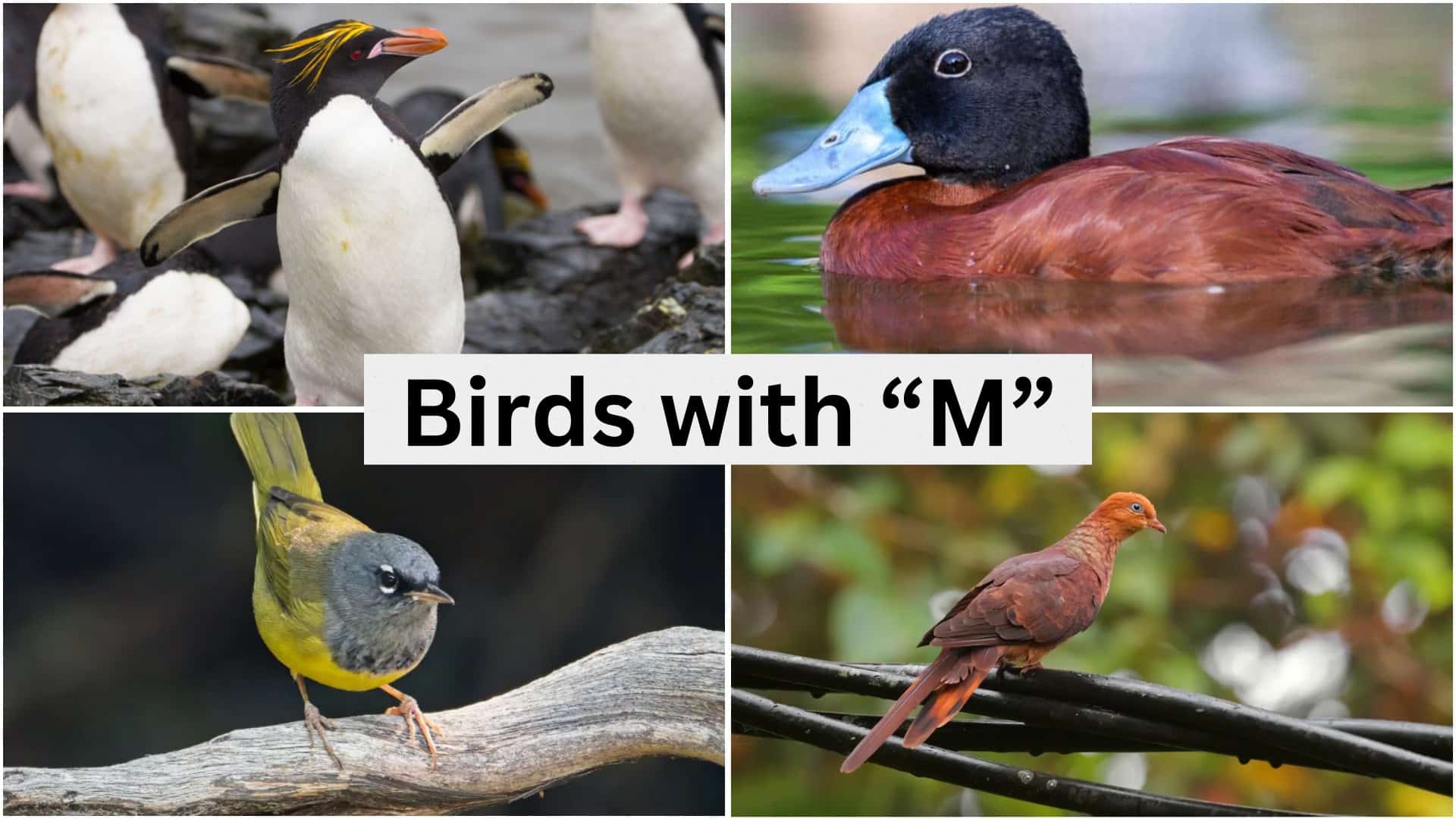
Birds with M names represent an impressive range of species across the globe.
The Macaroni Penguin stands out with its bright yellow crest, while the Mountain Yellow Warbler makes its home high in forest canopies.
These birds inhabit diverse environments from Antarctic shores to tropical forests and open grasslands.
Many have developed specialized skills – the Madagascar Fish Eagle catches prey with remarkable precision, while Macgregor’s Bowerbird builds intricate structures to attract mates.
Some face survival challenges due to habitat loss, while others flourish in their natural environments.
Through their behaviors, adaptations, and ecological roles, these “M” birds showcase the incredible diversity of avian life and their importance in ecosystems worldwide.
The Hidden World of “M” Birds
1. Macaroni Penguin
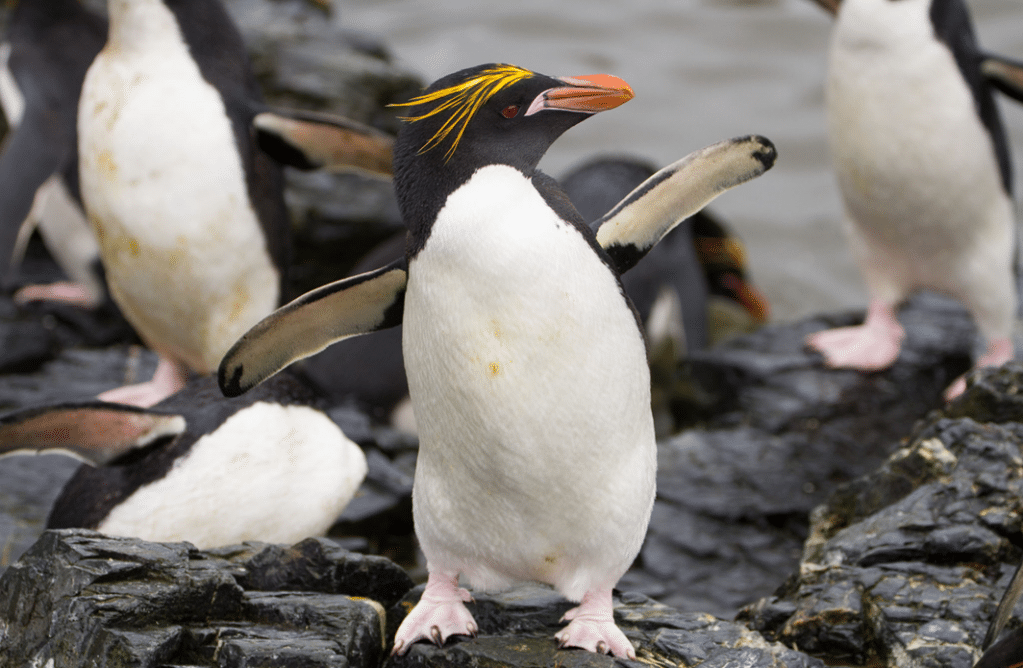
Macaroni Penguins are large, crested penguins known for their distinctive yellow-orange feathers on their heads.
They breed in the sub-Antarctic regions and are excellent swimmers, often diving to considerable depths for food. Their diet primarily consists of krill, fish, and squid.
- Region of Habitat: Sub-Antarctic regions, mainly in the South Sandwich Islands and the Antarctic Peninsula.
- Scientific Name: Eudyptes chrysolophus
- Feeding Habits: Carnivorous, feeding on krill, fish, and squid.
- What Sound They Make: A loud, braying “ha-ha-ha” call.
Fun Facts
Macaroni Penguins have the longest crest feathers of any penguin species. Their populations have declined due to climate change affecting their food sources.
2. Maccoa Duck
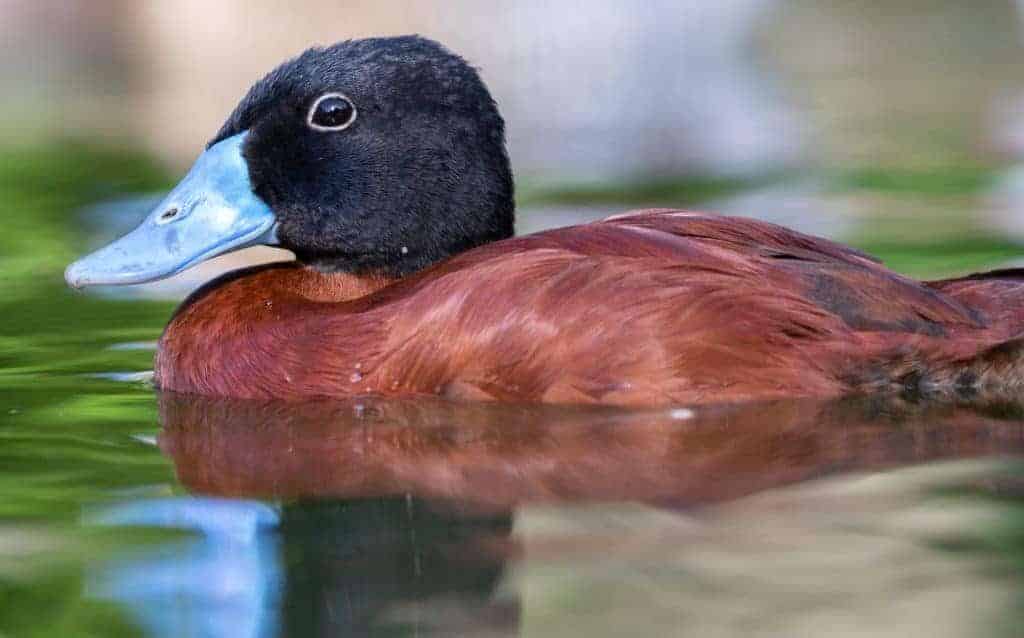
The Maccoa Duck is a striking waterfowl found mainly in Africa. It is recognized by its deep plumage and blue bill.
The Maccoa Duck prefers freshwater lakes and marshes and dives to hunt for aquatic insects, plants, and small fish. It is elusive and often avoids human contact.
- Region of Habitat: East and Central Africa, including Ethiopia and Sudan.
- Scientific Name: Oxyura maccoa
- Feeding Habits: Omnivorous, feeding on aquatic plants, insects, and small fish.
- What Sound They Make: A soft, whistling sound when in flight.
Fun Facts
The Maccoa Duck is known for its elaborate courtship display, where the male arches his neck and flaps his wings. They have a very limited range and are considered near-threatened due to habitat destruction.
3. MacGillivray’s Warbler
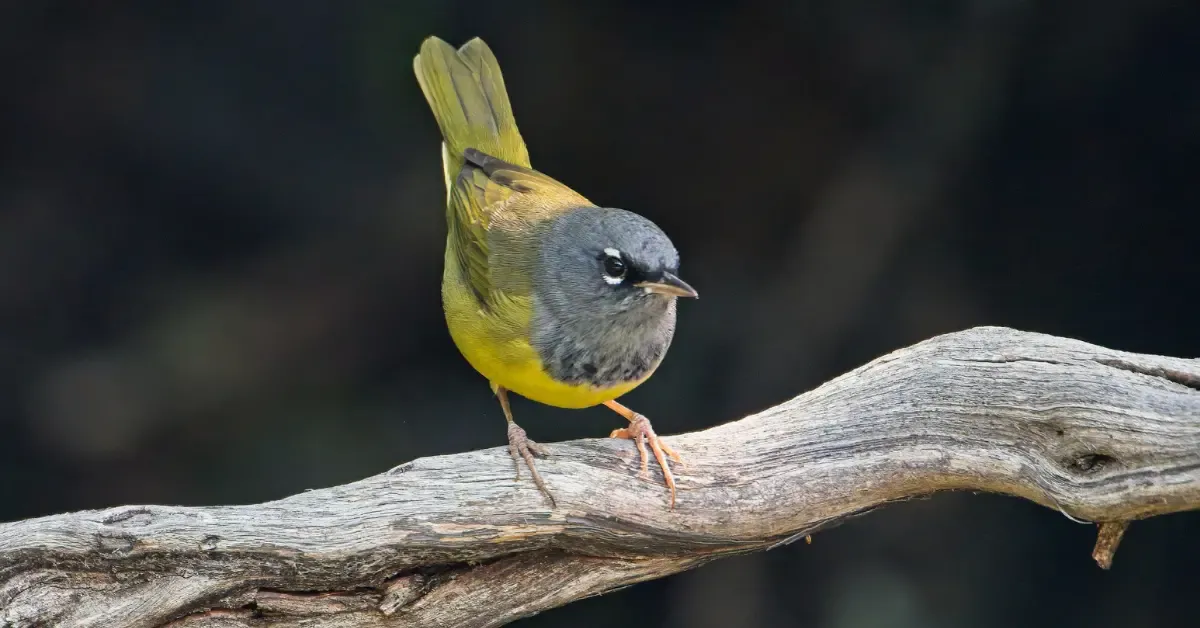
MacGillivray’s Warbler is a small, migratory songbird known for its olive-gray upperparts and yellow underbelly.
During migration, it is often found in dense forests. Its diet consists mainly of insects, which it forages from plants.
- Region of Habitat: Western North America, from southern Canada to northern Mexico.
- Scientific Name: Geothlypis tolmiei
- Feeding Habits: Insectivorous, feeding mainly on insects and spiders.
- What Sound They Make: A sharp “chink” call, often given while foraging.
Fun Facts
MacGillivray’s Warbler is known for its migratory patterns, traveling long distances between breeding and wintering grounds. They are named after the Scottish naturalist William MacGillivray.
4. Macgregor’s Bowerbird
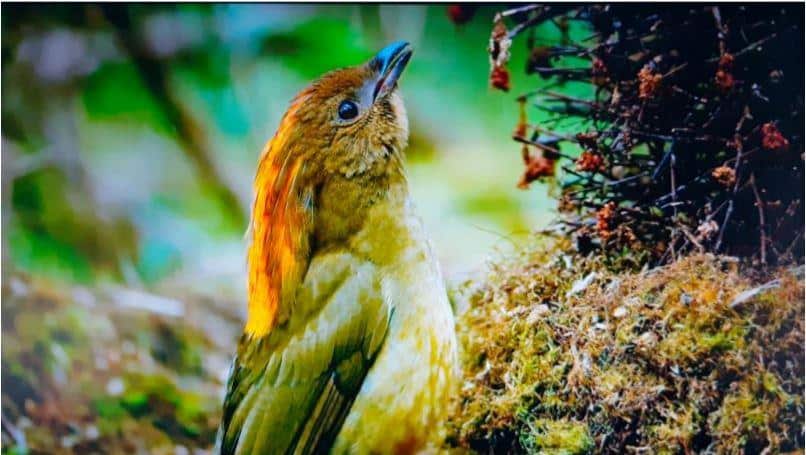
Macgregor’s Bowerbird is a beautifully adorned bird known for the male’s impressive bower, decorated with objects like flowers, shells, and plastic. They live in rainforests and build their structures to attract females during the breeding season.
- Region of Habitat: New Guinea’s rainforests.
- Scientific Name: Amblyornis macgregoriae
- Feeding Habits: Omnivorous, feeding on fruits, seeds, and insects.
- What Sound They Make: A melodic, whistling song, particularly during courtship.
Fun Facts
The male Bowerbird is known for its elaborate bower decoration with brightly colored objects. Macgregor’s Bowerbird is famous not only for its nests but also for its vocal performances during mating rituals.
5. Macgregor’s Honeyeater
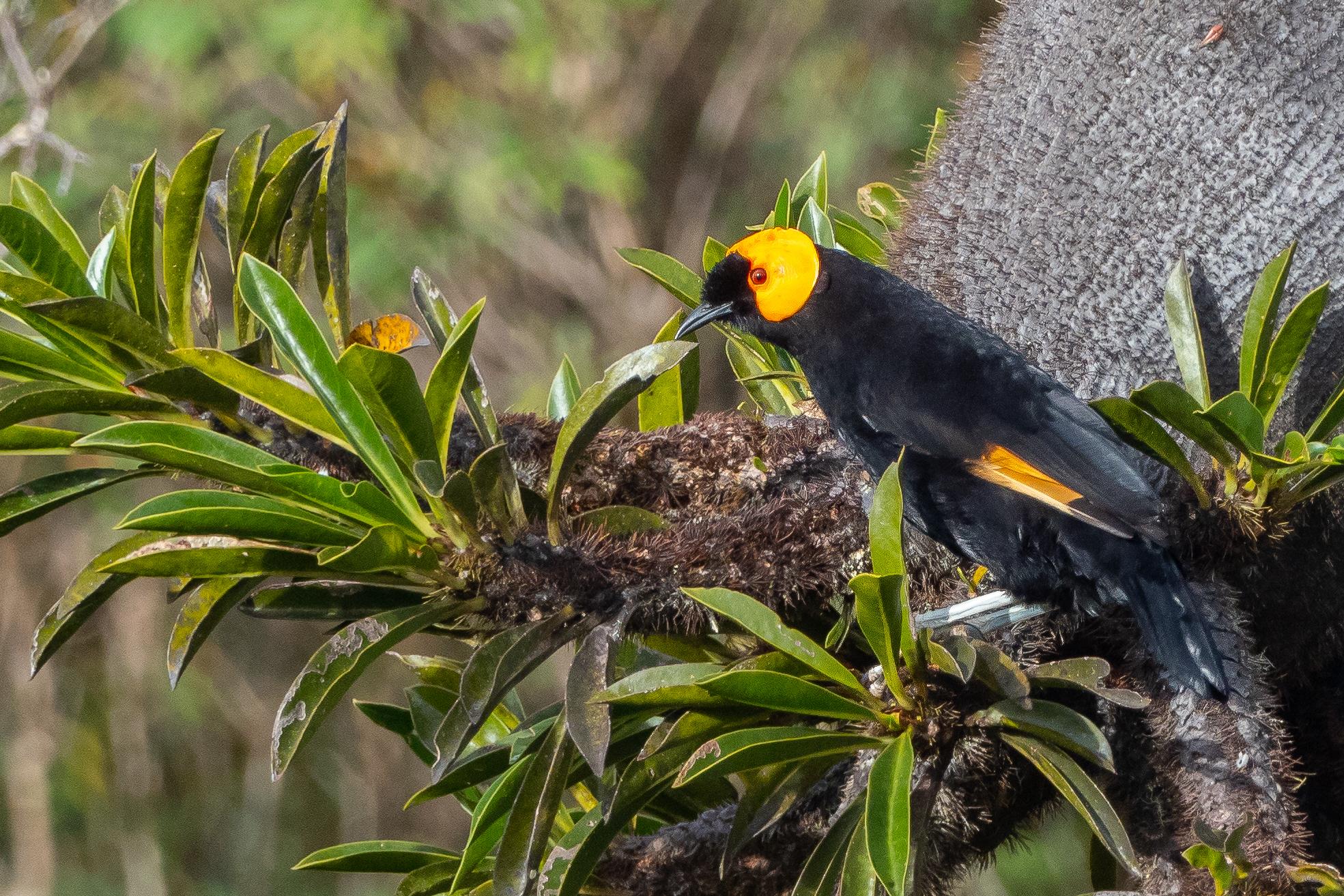
Macgregor’s Honeyeater is a bird with striking yellow and black feathers found in the rainforests of New Guinea.
It primarily feeds on nectar, using its long bill to reach deep into flowers. It is known for its energetic foraging behavior.
- Region of Habitat: New Guinea’s tropical rainforests.
- Scientific Name: Meliphaga macgregoriana
- Feeding Habits: Nectarivorous, feeding on the nectar of flowers and occasionally on insects.
- What Sound They Make: A loud, melodious call often heard during foraging.
Fun Facts
The Macgregor’s Honeyeater has specialized tongue adaptations to extract nectar efficiently. They are often seen in pairs or small groups, especially during the breeding season.
6. Mackinlay’s Cuckoo-Dove
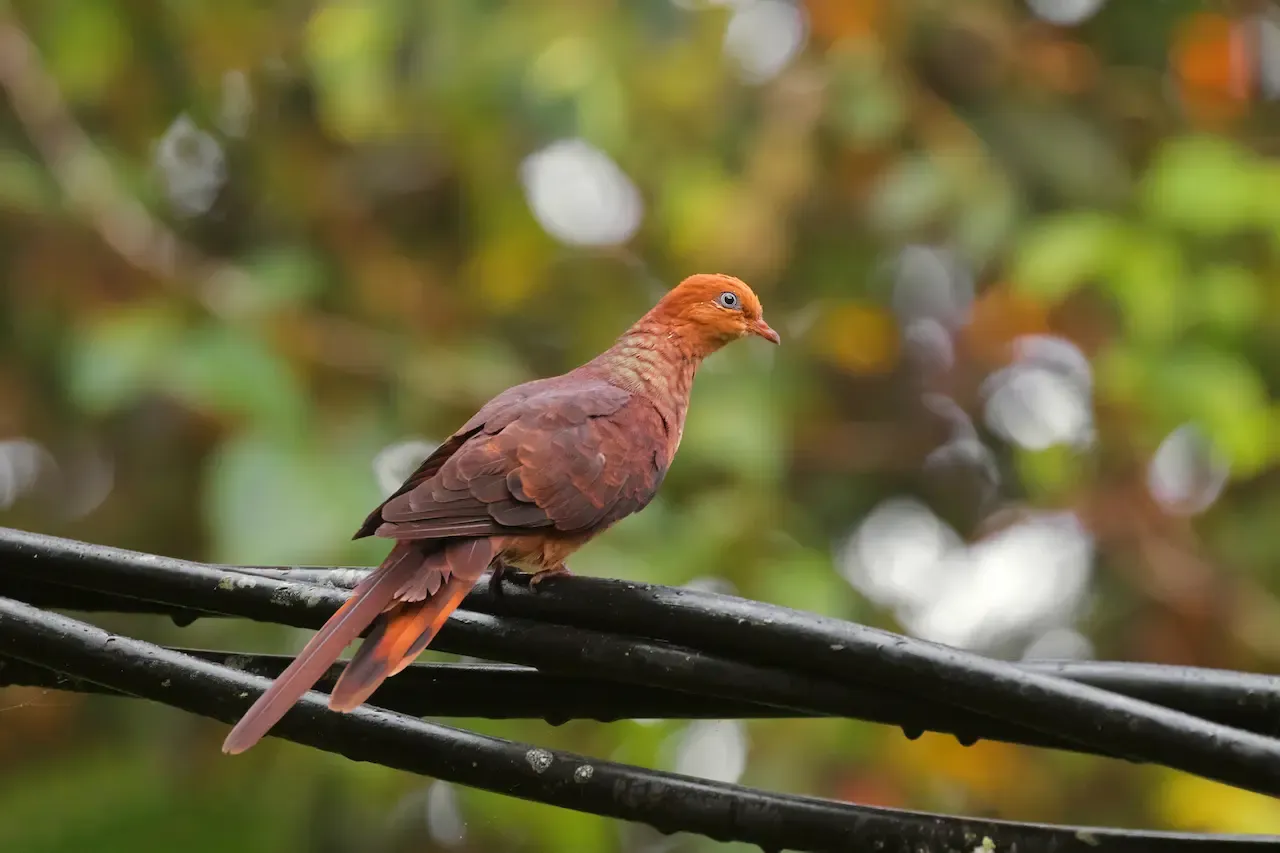
The Mackinlay’s Cuckoo-Dove is a large, stately bird with a long tail and a soft, greyish-brown plumage. It is known for inhabiting dense forests and is often elusive, making it difficult to spot in the wild.
- Region of Habitat: Lowland forests of New Guinea.
- Scientific Name: Macropygia mackinlayi
- Feeding Habits: Herbivorous, feeding on fruits, seeds, and flowers.
- What Sound They Make: A soft, low “cooing” call, especially in the early morning.
Fun Facts
The Mackinlay’s Cuckoo-Dove is a slow flyer and prefers to stay hidden in dense foliage. It is one of the less studied dove species, with limited information available on its behavior.
7. Mackinnon’s Shrike
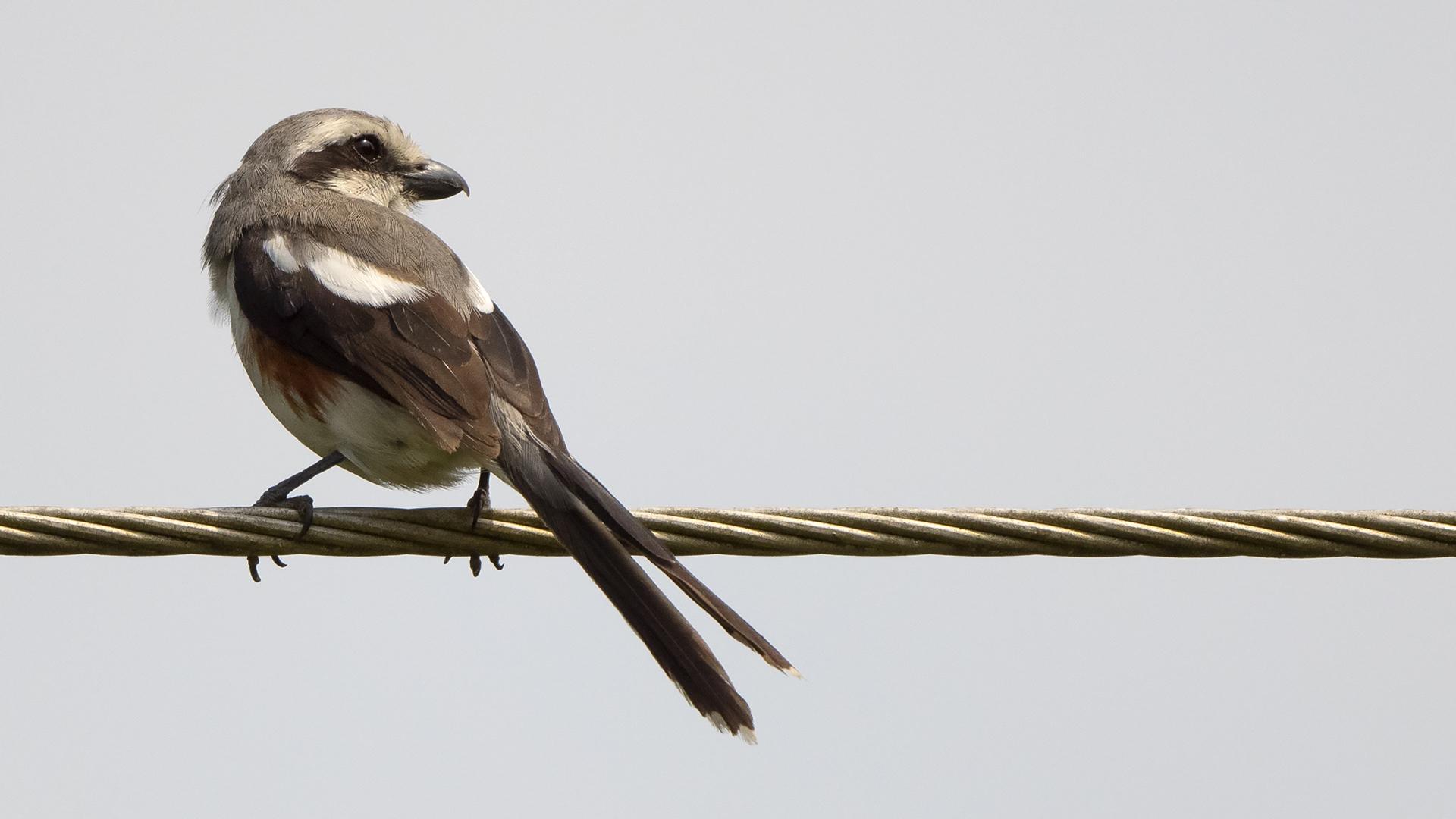
Mackinnon’s Shrike is a small, predatory bird that thrives in forested areas of Southeast Asia. Known for its sharp beak and aggressive hunting techniques, it preys on insects and small vertebrates.
- Region of Habitat: Southeast Asia, particularly in Malaysia and Sumatra.
- Scientific Name: Lanius mackinnoni
- Feeding Habits: Carnivorous, feeding primarily on insects, small reptiles, and birds.
- What Sound They Make: A sharp, metallic “kik-kik” call.
Fun Facts
Mackinnon’s Shrike has a powerful beak designed for catching and holding onto prey. This bird is known for its aggressive behavior, especially during the breeding season.
8. Macleay’s Honeyeater
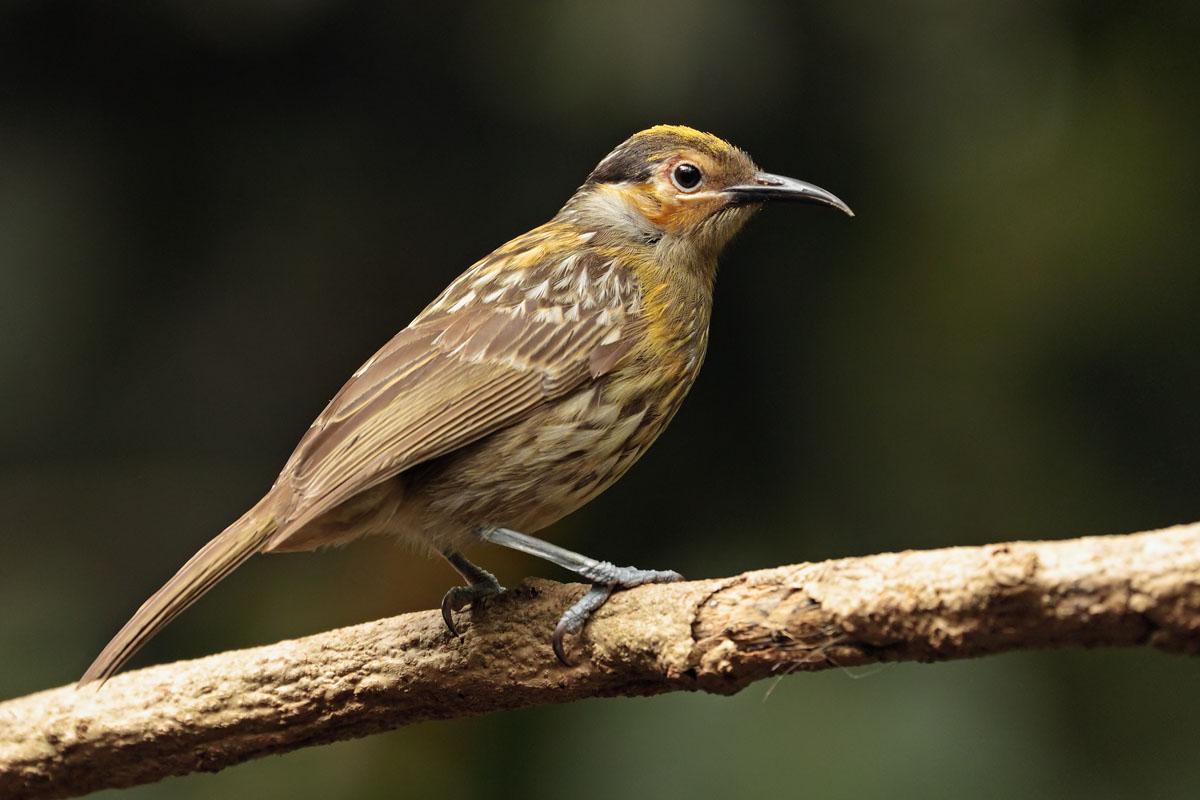
The Macleay’s Honeyeater is a small, colorful bird that thrives in the coastal rainforests of Australia. With its yellow and black plumage, it is easily identifiable and feeds mainly on nectar from native flowers.
- Region of Habitat: Coastal rainforests of eastern Australia.
- Scientific Name: Xanthotis macleayanus
- Feeding Habits: Nectarivorous, feeding on nectar, berries, and small insects.
- What Sound They Make: A high-pitched, chattering call often heard in flocks.
Fun Facts
Macleay’s Honeyeater is an important pollinator in its native habitat. These birds are often found in small, noisy flocks, especially during the non-breeding season.
9. Macquarie Parakeet
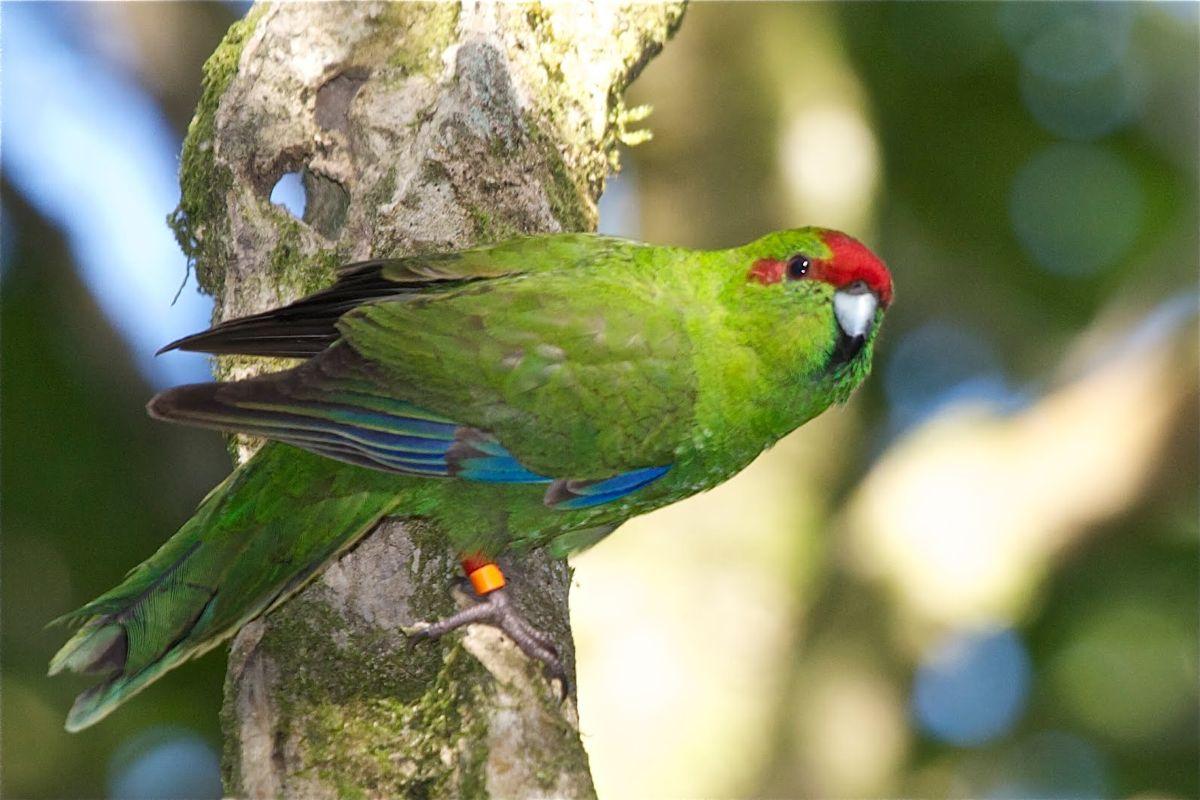
The Macquarie Parakeet is a beautiful green parrot found in the forests of southeastern Australia. It is known for its social behavior, often forming large flocks, and its plumage.
- Region of Habitat: Southeastern Australia, particularly in the bushlands and forests.
- Scientific Name: Polytelis anthopeplus
- Feeding Habits: Herbivorous, feeding on seeds, fruits, and leaves of various plants.
- What Sound They Make: A soft, melodic whistle, especially when in groups.
Fun Facts
The Macquarie Parakeet is a very social species, often seen in large groups feeding and playing together. It is known for its colorful plumage, which provides it with excellent camouflage in the wild.
10. Macquarie Shag
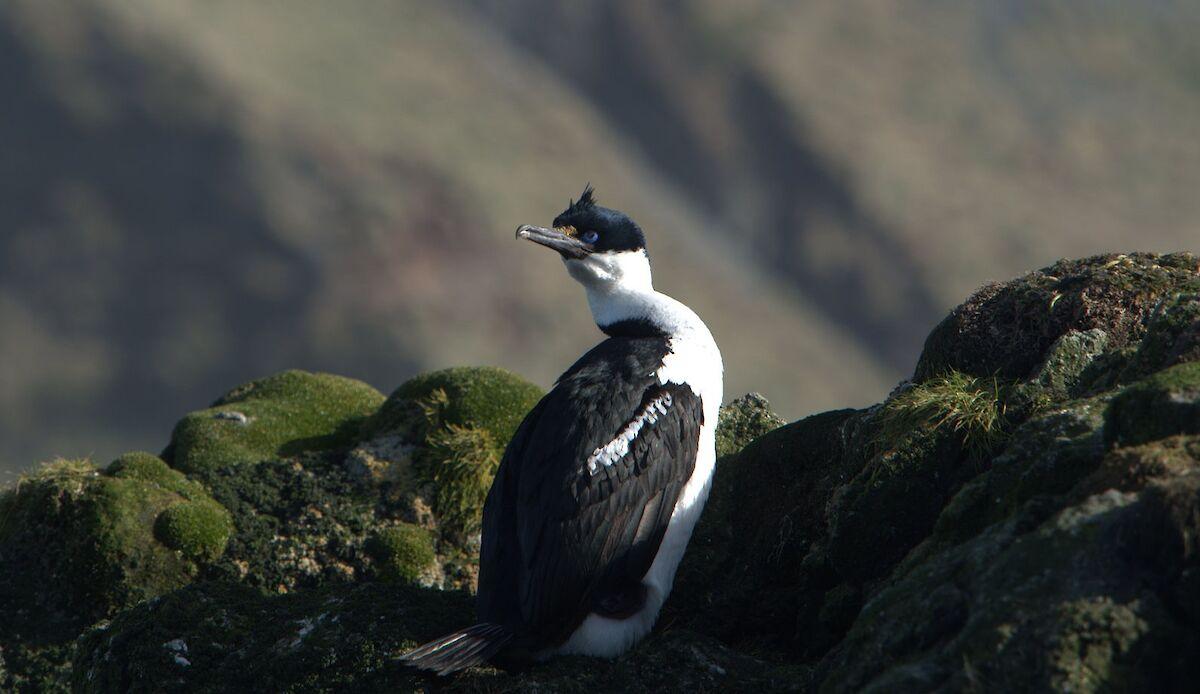
The Macquarie Shag is a medium-sized seabird, known for its striking black and white plumage. It is commonly found along rocky coastlines, diving for fish and swimming expertly underwater to catch its prey.
- Region of Habitat: Coastal waters around southeastern Australia.
- Scientific Name: Phalacrocorax macquariensis
- Feeding Habits: Piscivorous, primarily feeding on fish and small marine invertebrates.
- What Sound They Make: A harsh, croaky call often heard when perched on rocks.
Fun Facts
The Macquarie Shag is often seen perched on rocky outcrops, drying its wings after diving for fish. They are excellent swimmers and can dive to considerable depths to catch their prey.
11. Madagascar Bee-eater
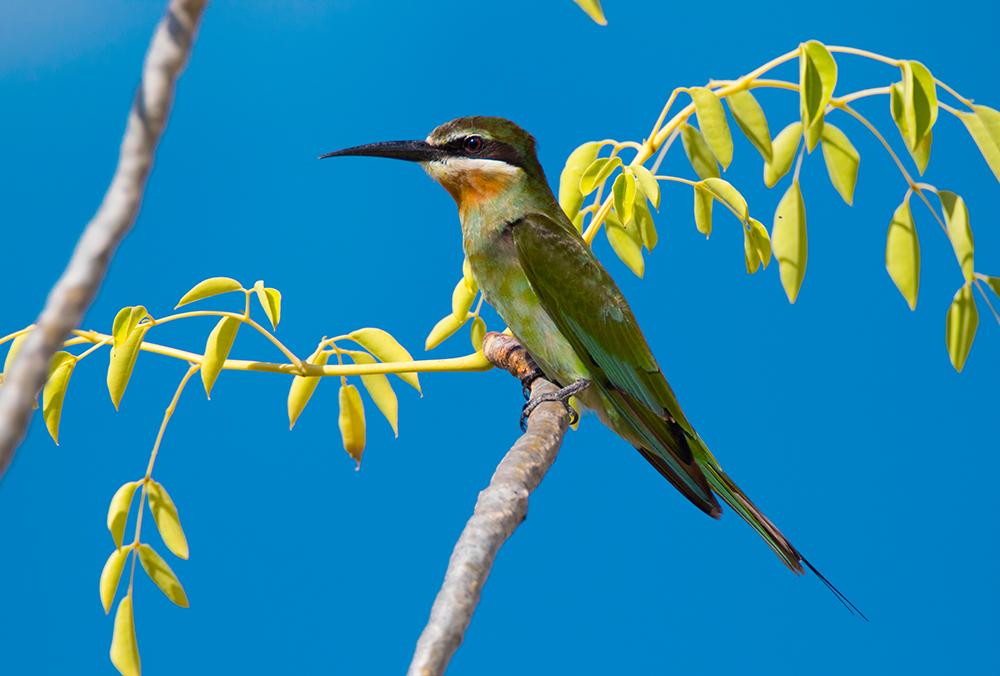
The Madagascar Bee-eater is a vibrant, small bird known for its striking green and yellow plumage. It inhabits tropical and subtropical regions and is often seen perched on trees or fences before swooping down to catch insects.
- Region of Habitat: Madagascar’s forests and open areas.
- Scientific Name: Merops superciliosus
- Feeding Habits: Insectivorous, primarily feeding on bees, wasps, and other flying insects.
- What Sound They Make: A sharp, twittering call often heard when in flight.
Fun Facts
The Madagascar Bee-eater has a unique technique for catching bees in mid-flight. These birds are known for their bright, colorful feathers and distinct call.
12. Madagascar Blue Pigeon
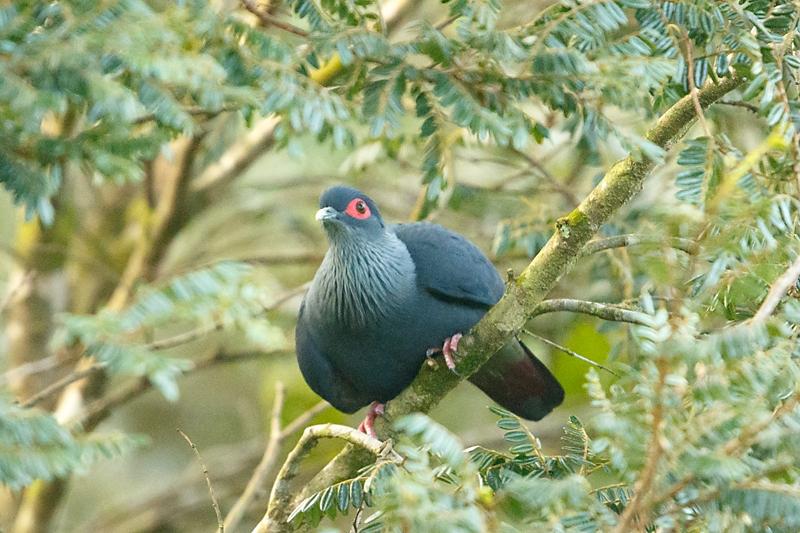
The Madagascar Blue Pigeon is a striking bird with blue and purple hues in its feathers. It is typically found in the dense rainforests of Madagascar, where it feeds on a variety of fruits and seeds.
- Region of Habitat: Madagascar’s rainforests and woodlands.
- Scientific Name: Alectroenas madagascariensis
- Feeding Habits: Herbivorous, feeding mainly on fruits, seeds, and berries.
- What Sound They Make: A soft, cooing sound that echoes through the forest.
Fun Facts
The Madagascar Blue Pigeon is considered an endangered species due to habitat loss. Its colorful plumage helps it blend into the dense foliage of its forest habitat.
13. Madagascar Bulbul
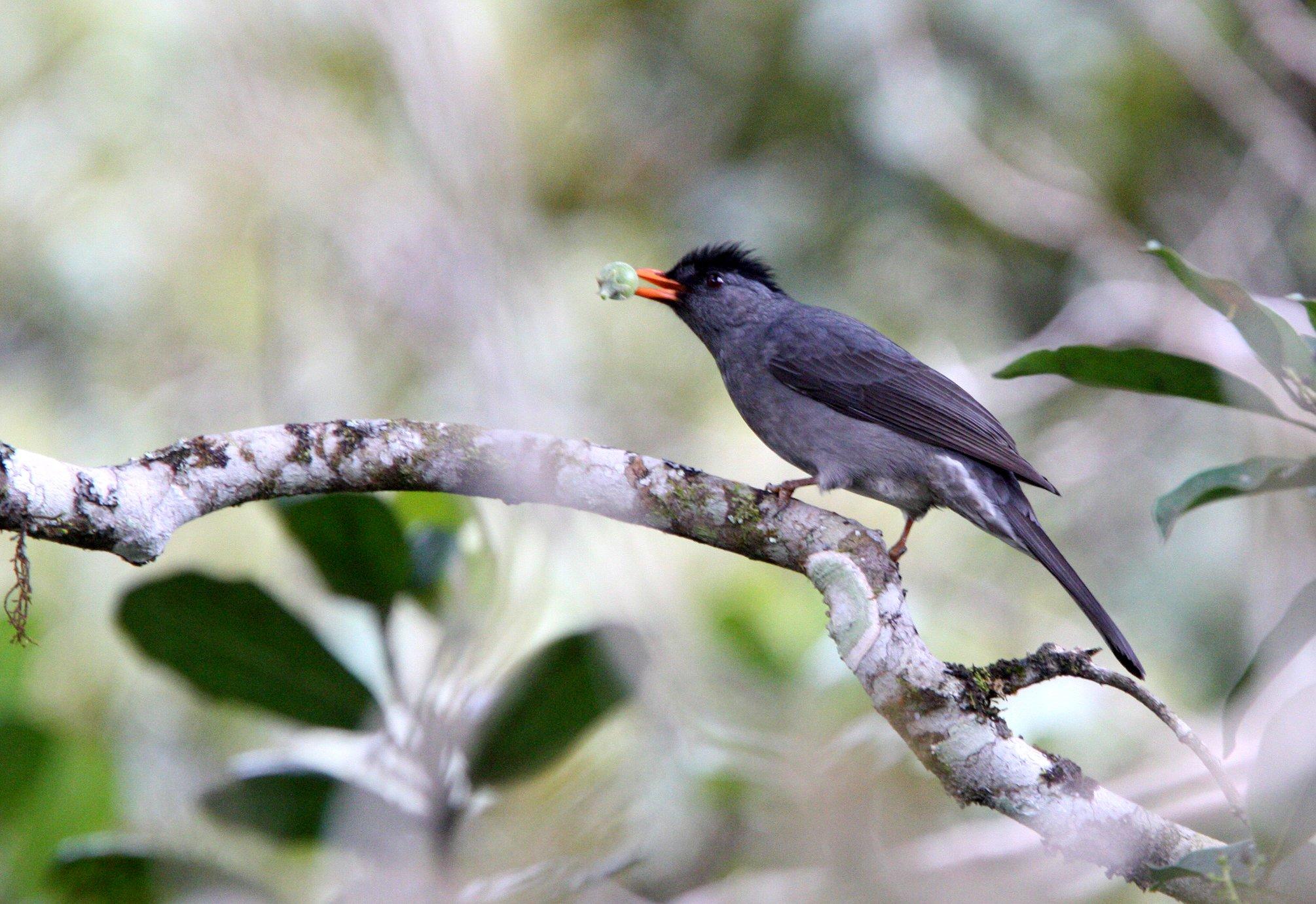
The Madagascar Bulbul is a small, agile songbird known for its dark plumage and distinctive calls. It is typically found in forests and gardens, feeding on fruits, berries, and insects.
- Region of Habitat: Forests and gardens throughout Madagascar.
- Scientific Name: Hypsipetes madagascariensis
- Feeding Habits: Omnivorous, feeding on fruits, seeds, and insects.
- What Sound They Make: A series of high-pitched, melodic whistles.
Fun Facts
Madagascar Bulbuls are often seen in small groups foraging for food. The bird’s calls make it easily identifiable in the wild.
14. Madagascar Buttonquail
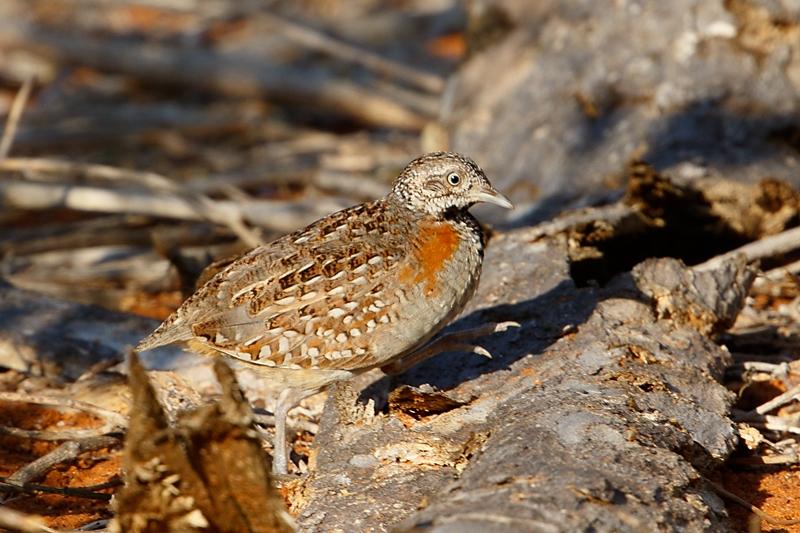
The Madagascar Buttonquail is a small, ground-dwelling bird with an unassuming but charming appearance. It is usually found in scrubby habitats and grassy fields, where it feeds on seeds and insects.
- Region of Habitat: Grasslands and scrublands of Madagascar.
- Scientific Name: Turnix nigricollis
- Feeding Habits: Omnivorous, feeding on seeds, grasses, and small insects.
- What Sound They Make: A quiet, high-pitched chirp, often heard when they are disturbed.
Fun Facts
The Madagascar Buttonquail is known for its secretive nature, often hiding in tall grasses. It is a skilled runner, using speed to evade predators rather than flight.
15. Madagascar Buzzard

The Madagascar Buzzard is a large bird of prey, often seen soaring high in the sky or perched on a high vantage point. It hunts small mammals, birds, and reptiles in the forests and savannahs.
- Region of Habitat: Madagascar’s forests, grasslands, and savannahs.
- Scientific Name: Buteo brachypterus
- Feeding Habits: Carnivorous, feeding on small mammals, birds, and reptiles.
- What Sound They Make: A sharp, piercing call that echoes across the landscape.
Fun Facts
The Madagascar Buzzard is an expert hunter. It uses keen eyesight to spot prey from great distances. This species is known for its distinctive soaring flight pattern.
16. Madagascar Cisticola
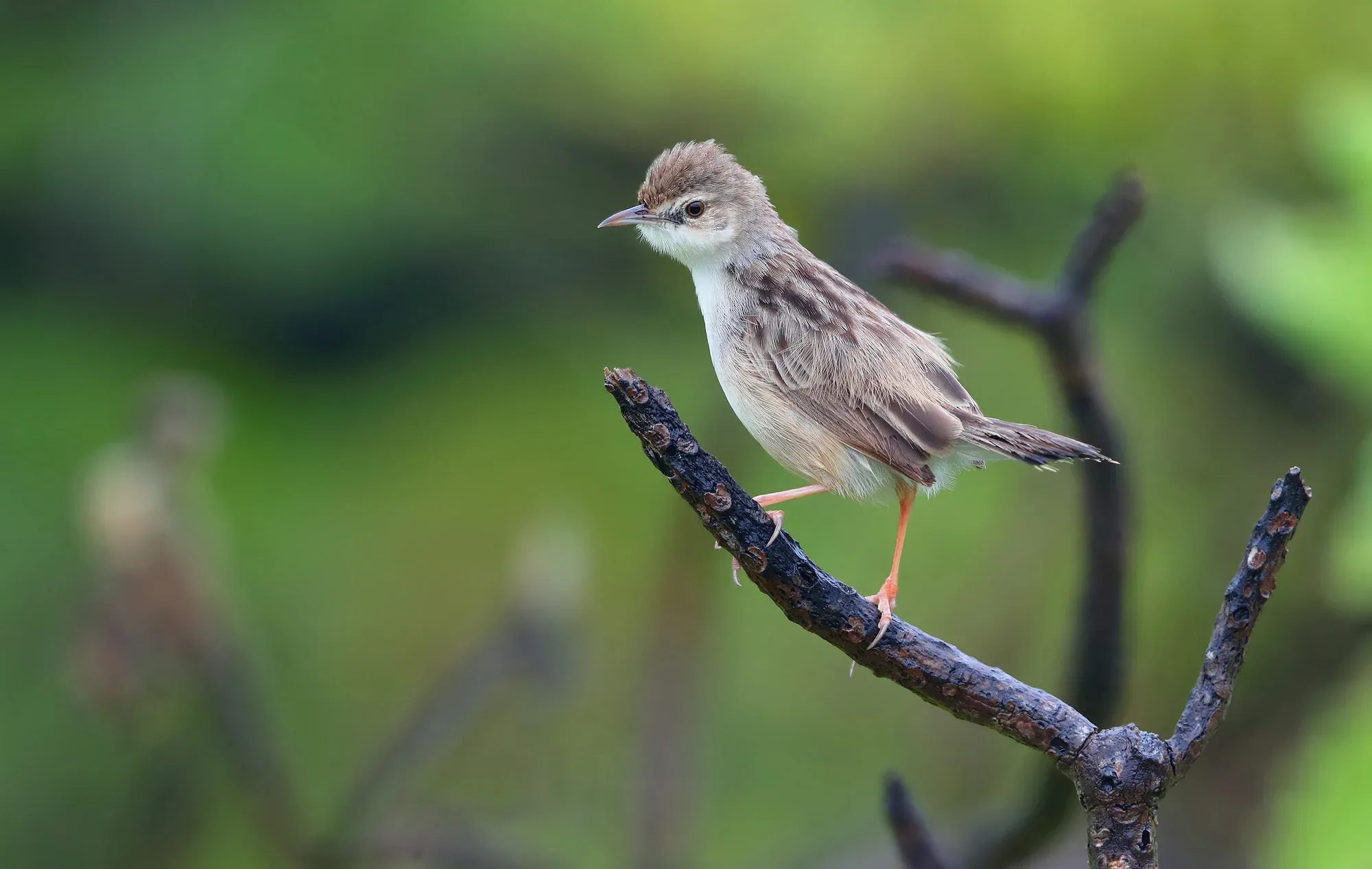
The Madagascar Cisticola is a small, energetic warbler known for its bright, streaked plumage and vibrant behavior. It inhabits grasslands and shrublands and feeds on insects.
- Region of Habitat: Grasslands, savannahs, and shrublands of Madagascar.
- Scientific Name: Cisticola cherina
- Feeding Habits: Insectivorous, feeding primarily on insects and small invertebrates.
- What Sound They Make: A series of rapid, repetitive chirps.
Fun Facts
The Madagascar Cisticola is known for its persistent singing, often heard throughout the day. This species is often seen in small flocks, especially outside of the breeding season.
17. Madagascar Coucal
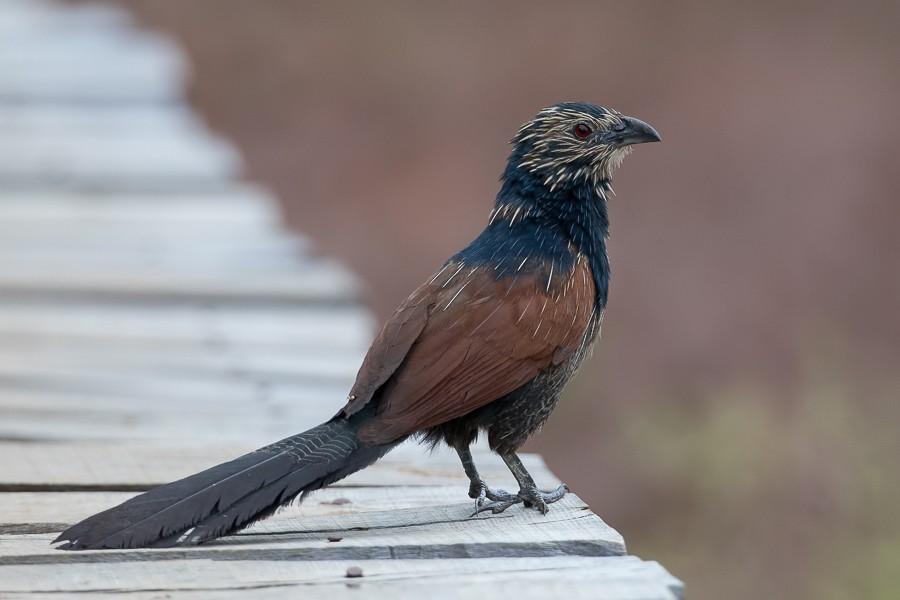
The Madagascar Coucal is a large, striking bird with a long tail and dark plumage. It is known for its loud calls, which can be heard across the dense forests and wetlands.
- Region of Habitat: Wetlands, forests, and grasslands of Madagascar.
- Scientific Name: Centropus toulou
- Feeding Habits: Omnivorous, feeding on small vertebrates, insects, and fruits.
- What Sound They Make: A deep, booming call that reverberates through its habitat.
Fun Facts
Madagascar Coucals are known for their distinctive, loud calls, which can be heard from great distances. They are mainly ground dwellers and often hunt in dense underbrush.
18. Madagascar Cuckoo
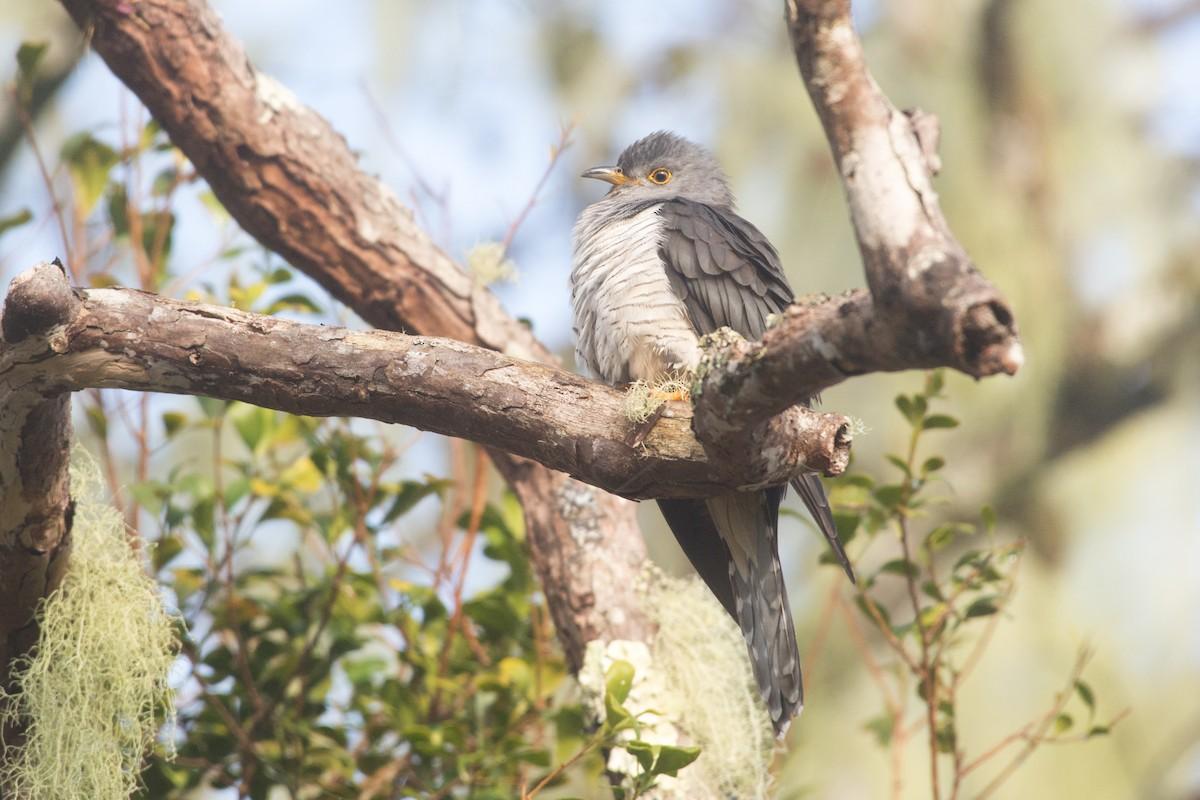
The Madagascar Cuckoo is a medium-sized bird, often seen in forests and woodlands. It is known for its parasitic nesting behavior, laying its eggs in the nests of other birds.
- Region of Habitat: Forests, woodlands, and savannahs of Madagascar.
- Scientific Name: Cuculus rochii
- Feeding Habits: Carnivorous, feeding on insects, small reptiles, and other invertebrates.
- What Sound They Make: A loud, harsh “cu-cu” call often heard from the treetops.
Fun Facts
The Madagascar Cuckoo is a brood parasite, laying its eggs in the nests of other bird species. It often targets smaller songbirds, which incubate the cuckoo’s eggs unknowingly.
19. Madagascar Fish Eagle
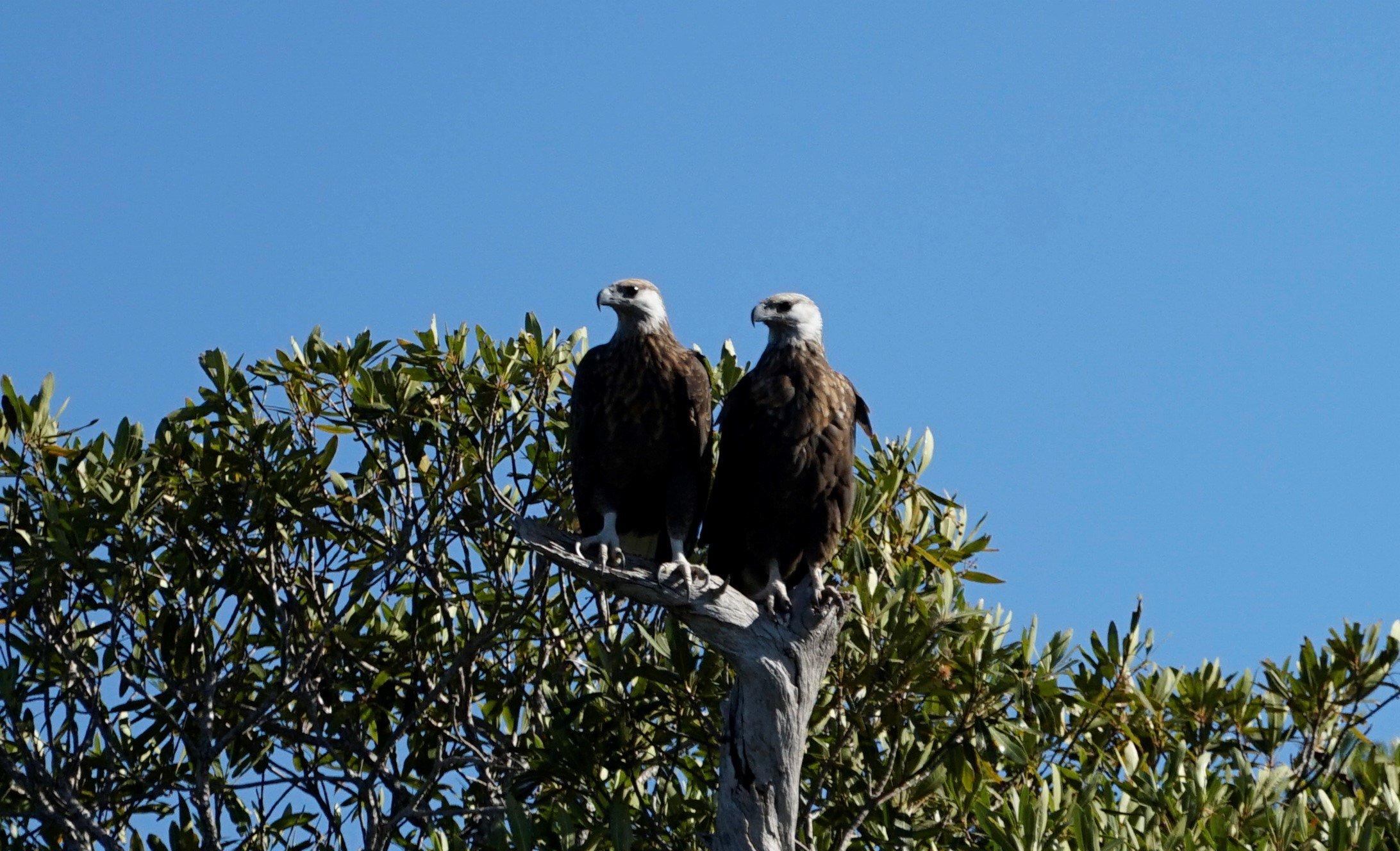
The Madagascar Fish Eagle is a majestic bird of prey found near freshwater lakes and rivers in Madagascar. It feeds primarily on fish, using its powerful talons to capture prey.
- Region of Habitat: Freshwater lakes and rivers in Madagascar.
- Scientific Name: Haliaeetus vociferoides
- Feeding Habits: Piscivorous, feeding primarily on fish and aquatic invertebrates.
- What Sound They Make: A loud, harsh, eagle-like scream often heard near the water.
Fun Facts
The Madagascar Fish Eagle is critically endangered due to habitat destruction and pollution. This species is an excellent fisher, often seen hovering over lakes before diving to catch fish.
20. Madagascar Flufftail
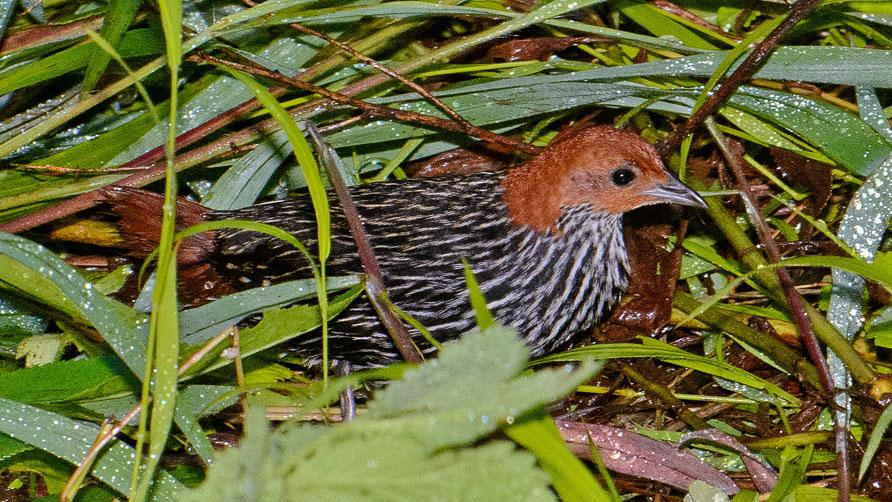
The Madagascar Flufftail is a small, elusive bird found in dense wetlands. It is known for its cryptic plumage and secretive nature, often hiding in thick vegetation.
- Region of Habitat: Wetlands and marshes of Madagascar.
- Scientific Name: Sarothrura insularis
- Feeding Habits: Omnivorous, feeding on seeds, small fruits, and insects.
- What Sound They Make: A soft, twittering call often heard from dense reeds.
Fun Facts
The Madagascar Flufftail is incredibly difficult to spot due to its secretive behavior. This species is highly adapted to wetland environments, and its strong legs make it ideal for wading.
Further Birds that Start with the Letter “M”
21. Madagascar Grebe
22. Madagascar Green Pigeon
23. Madagascar Harrier-Hawk
24. Madagascar Hoopoe
25. Madagascar Jacana
26. Madagascar Kestrel
27. Madagascar Lark
28. Madagascar Magpie-Robin
29. Madagascar Marsh Harrier
30. Madagascar Munia
31. Madagascar Nightjar
32. Madagascar Owl
33. Madagascar Paradise-Flycatcher
34. Madagascar Partridge
35. Madagascar Plover
36. Madagascar Pochard
37. Madagascar Pond Heron
38. Madagascar Pratincole
39. Madagascar Pygmy Kingfisher
40. Madagascar Rail
41. Madagascar Red Fody
42. Madagascar Sandgrouse
43. Madagascar Serpent Eagle
44. Madagascar Snipe
45. Madagascar Sparrowhawk
46. Madagascar Starling
47. Madagascar Swamp Warbler
48. Madagascar Swift
49. Madagascar Turtle Dove
50. Madagascar Wagtail
51. Madeira Firecrest
52. Magellanic Diving Petrel
53. Magellanic Oystercatcher
54. Magellanic Penguin
55. Magellanic Plover
56. Magellanic Tapaculo
57. Magellanic Woodpecker
58. Magenta Petrel
59. Magenta-throated Woodstar
60. Magpie Goose
61. Magpie Mannikin (Magpie Munia)
62. Magpie Shrike
63. Magpie Starling
64. Magpie Tanager
65. Magpie-lark
66. Maguari Stork
67. Major Mitchell’s Cockatoo
68. Makatea Fruit Dove
69. Malabar Grey Hornbill
70. Malabar Lark
71. Malabar Parakeet
72. Malabar Pied Hornbill
73. Malabar Trogon
74. Malabar Whistling Thrush
75. Malachite Kingfisher
76. Malachite Sunbird
77. Malagasy Brush Warbler
78. Malagasy Kingfisher
79. Malagasy Scops Owl
80. Malagasy Spinetail
81. Malagasy White-eye
82. Malaita Fantail
83. Malawi Batis
84. Malaysian Blue Flycatcher
85. Malaysian Hawk-Cuckoo
86. Malaysian Honeyguide
87. Malaysian Plover
88. Malaysian Rail-babbler
89. Maleo
90. Malherbe’s Parakeet
91. Mali Firefinch
92. Malia
93. Mallard
94. Malleefowl
95. Malayan Laughingthrush
96. Malayan Night Heron
97. Malayan Peacock-Pheasant
98. Malayan Whistling Thrush
99. Mottled Swift
100. Mottled Wood Owl
101. Mount Cameroon Speirops
102. Mount Cameroon Spurfowl
103. Mount Kupe Bushshrike
104. Mount Victoria Babax
105. Mountain Avocetbill
106. Mountain Bamboo Partridge
107. Mountain Barbet
108. Mountain Blackeye
109. Mountain Bluebird
110. Mountain Bulbul
111. Mountain Buzzard
112. Mountain Caracara
113. Mountain Fulvetta
114. Mountain Greenbul
115. Mountain Hawk-eagle
116. Mountain Honeyeater
117. Mountain Illadopsis
118. Mountain Imperial Pigeon
119. Mountain Kingfisher
120. Mountain Leaf Warbler
121. Mountain Masked Apalis
122. Mountain Mouse-warbler
123. Mountain Myzomela
124. Mountain Oriole
125. Mountain Owlet-nightjar
126. Mountain Parakeet
127. Mountain Peacock-pheasant
128. Mountain Peltops
129. Mountain Pipit
130. Mountain Plover
131. Mountain Pygmy Owl
132. Mountain Quail
133. Mountain Robin
134. Mountain Robin-chat
135. Mountain Saw-wing
136. Mountain Serpent Eagle
137. Mountain Shrike
138. Mountain Sooty Boubou
139. Mountain Starling
140. Mountain Swiftlet
141. Mountain Tailorbird
142. Mountain Thornbill
143. Mountain Thrush
144. Mountain Trogon
145. Mountain Velvetbreast
146. Mountain Wagtail
147. Mountain Wheatear
148. Mountain Wren
149. Mountain Wren-babbler
150. Mountain Yellow Warbler
151. Mourning Collared Dove
152. Mourning Dove
153. Mourning Sierra Finch
154. Mourning Warbler
155. Mourning Wheatear
156. Musk Duck
157. Musk Lorikeet
158. Mussau Fantail
159. Mussau Monarch
160. Mussau Triller
161. Mute Swan
162. Myrtle Warbler
163. Montane Nightjar
164. Montane Racket-tail
165. Montane Tiny Greenbul
166. Montane Widowbird
167. Montane Woodcreeper
168. Monte Yellow Finch
169. Monteiro’s Bushshrike
170. Monteiro’s Hornbill
171. Monteiro’s Storm Petrel
172. Montezuma Oropendola
173. Montezuma Quail
174. Montserrat Oriole
175. Moorea Sandpiper
176. Mindanao Hornbill
177. Mindanao Lorikeet
178. Mindanao Miniature Babbler
179. Mindanao Pygmy Babbler
180. Mindanao Racket-tail
181. Mindanao Scops Owl
182. Mindanao White-eye
183. Mindoro Bleeding-heart
184. Mindoro Bulbul
185. Mindoro Hawk-owl
186. Mindoro Hornbill
187. Mindoro Imperial Pigeon
188. Mindoro Racket-tail
189. Mindoro Scops Owl
190. Minute Hermit
191. Miombo Blue-eared Starling
192. Miombo Pied Barbet
193. Miombo Rock Thrush
194. Miombo Scrub Robin
195. Miombo Tit
196. Miombo Wren-warbler
197. Mishana Tyrannulet
198. Mississippi Kite
199. Mistle Thrush
200. Mistletoe Tyrannulet
201. Middle Spotted Woodpecker
202. Midget Flowerpecker
203. Mikado Pheasant
204. Military Macaw
205. Milky Stork
206. Millerbird
207. Mimic Honeyeater
Final Words
Birds that begin with the letter M reveal the incredible adaptability and beauty found in nature.
From the chilly waters where Macaroni Penguins dive for food to the warm woodlands where Madagascar Bulbuls sing, each bird has discovered its unique way to thrive.
Sadly, many of these species are now struggling due to shrinking habitats and shifting climates.
The haunting calls of the Madagascar Cuckoo, the sharp-eyed hunting of Mackinnon’s Shrike, and the striking colors of Macgregor’s Bowerbird all highlight the variety and wonder of bird life.
Every bird contributes something valuable to the environment, from spreading seeds to keeping ecosystems balanced.
Thanks to the dedication of bird enthusiasts and researchers, efforts continue to study and protect these remarkable creatures for the future.
If you’re interested in more informative animal and wildlife content, feel free to click here and explore other blogs that you might enjoy!

